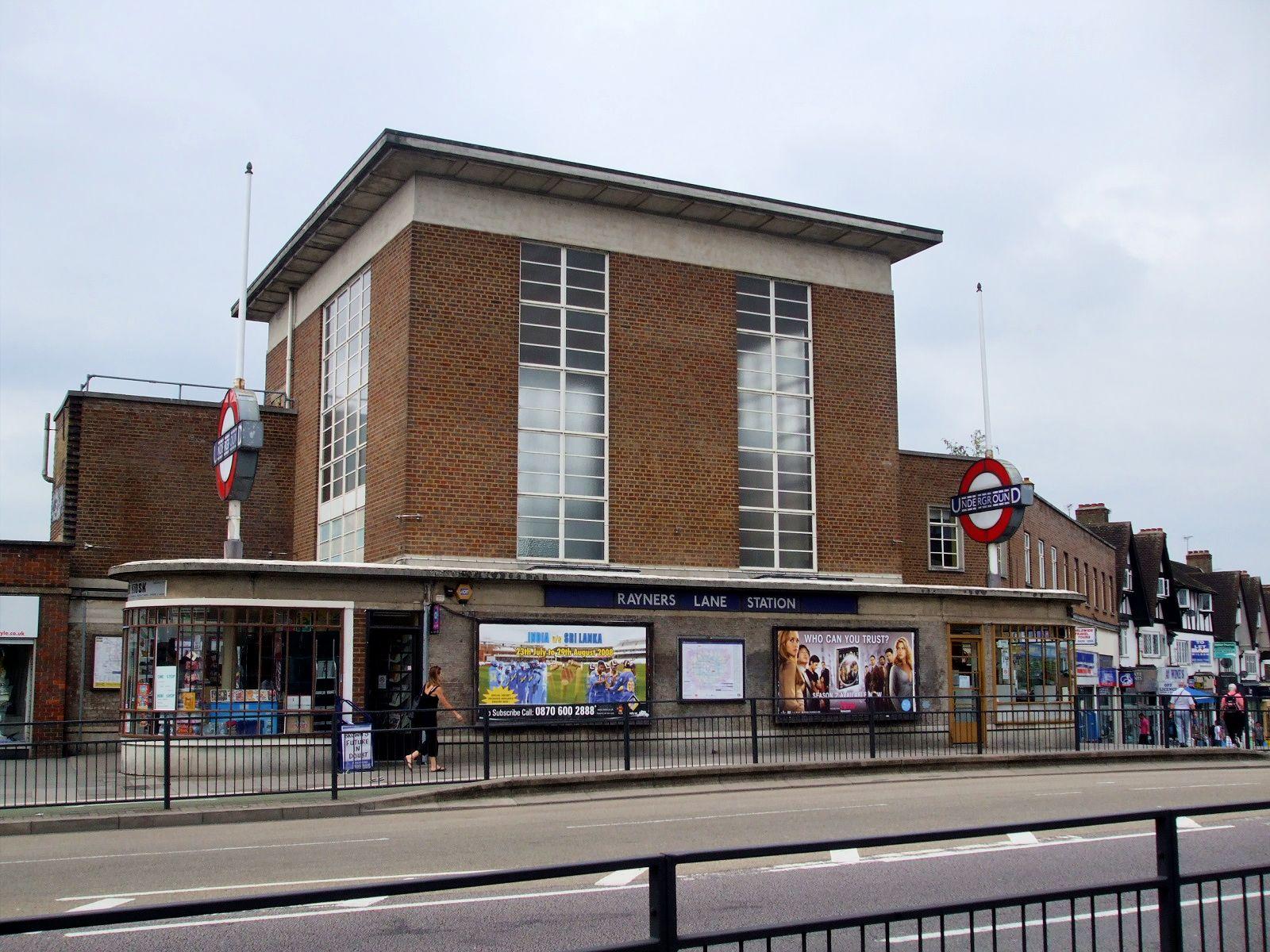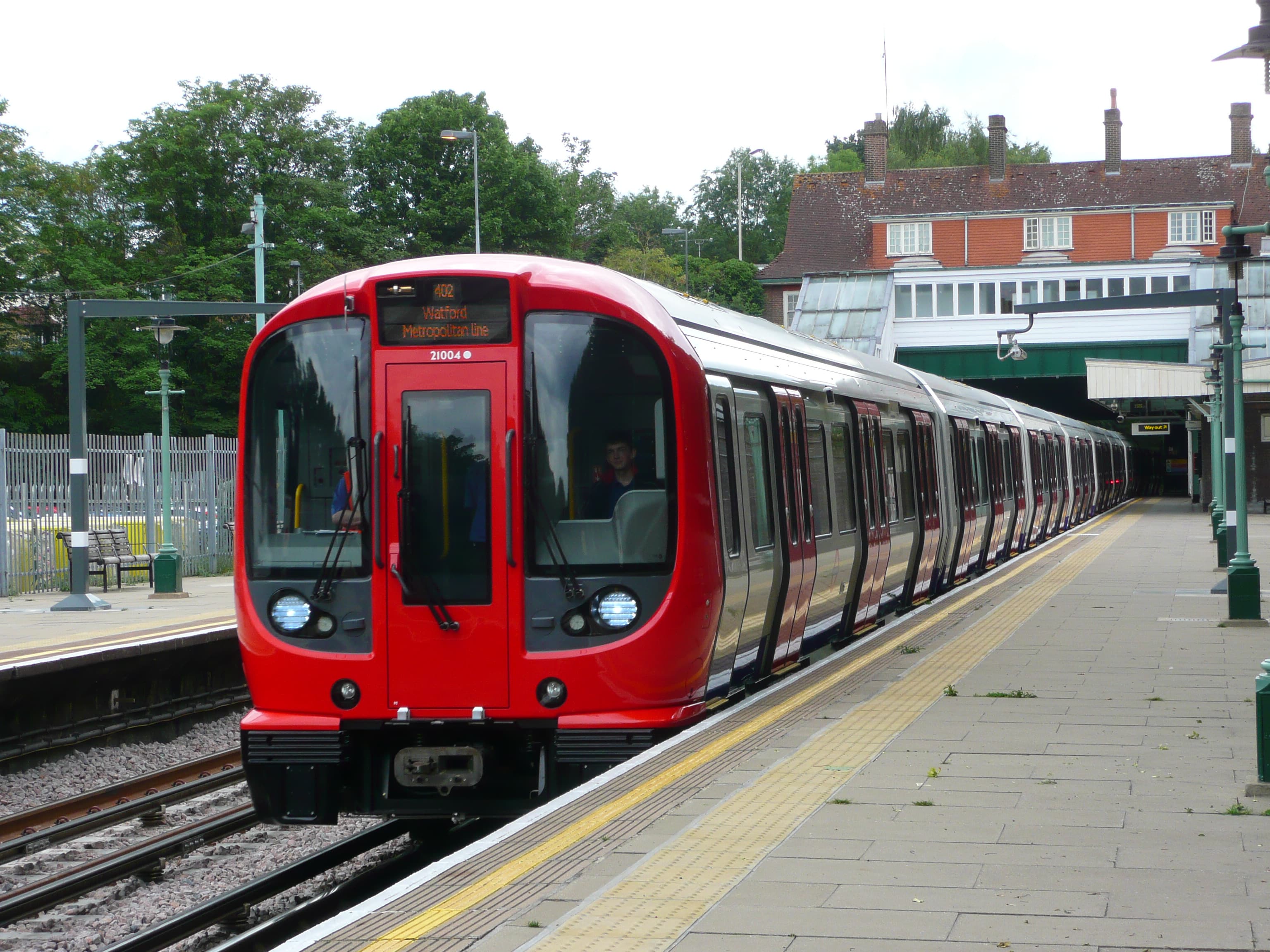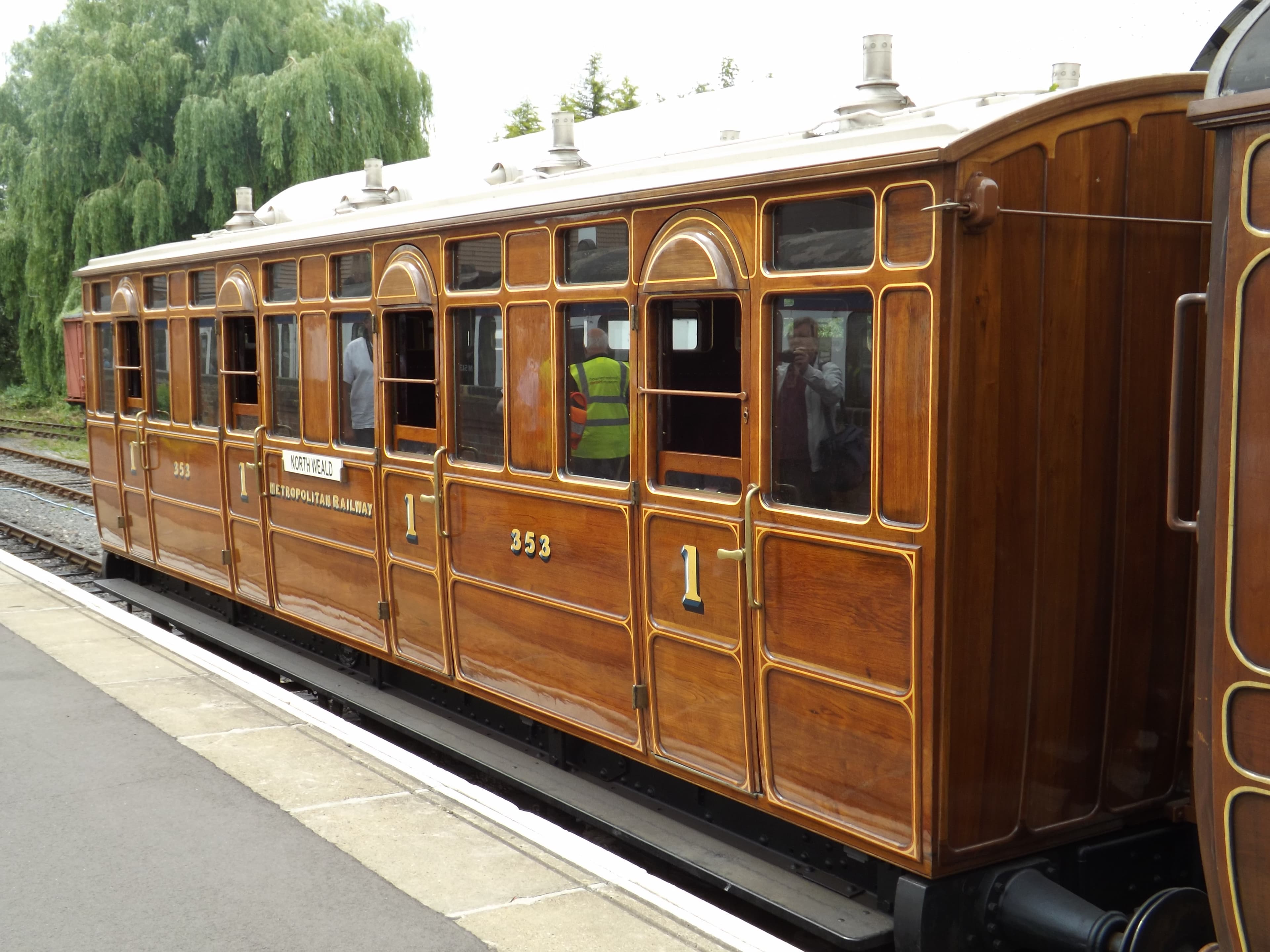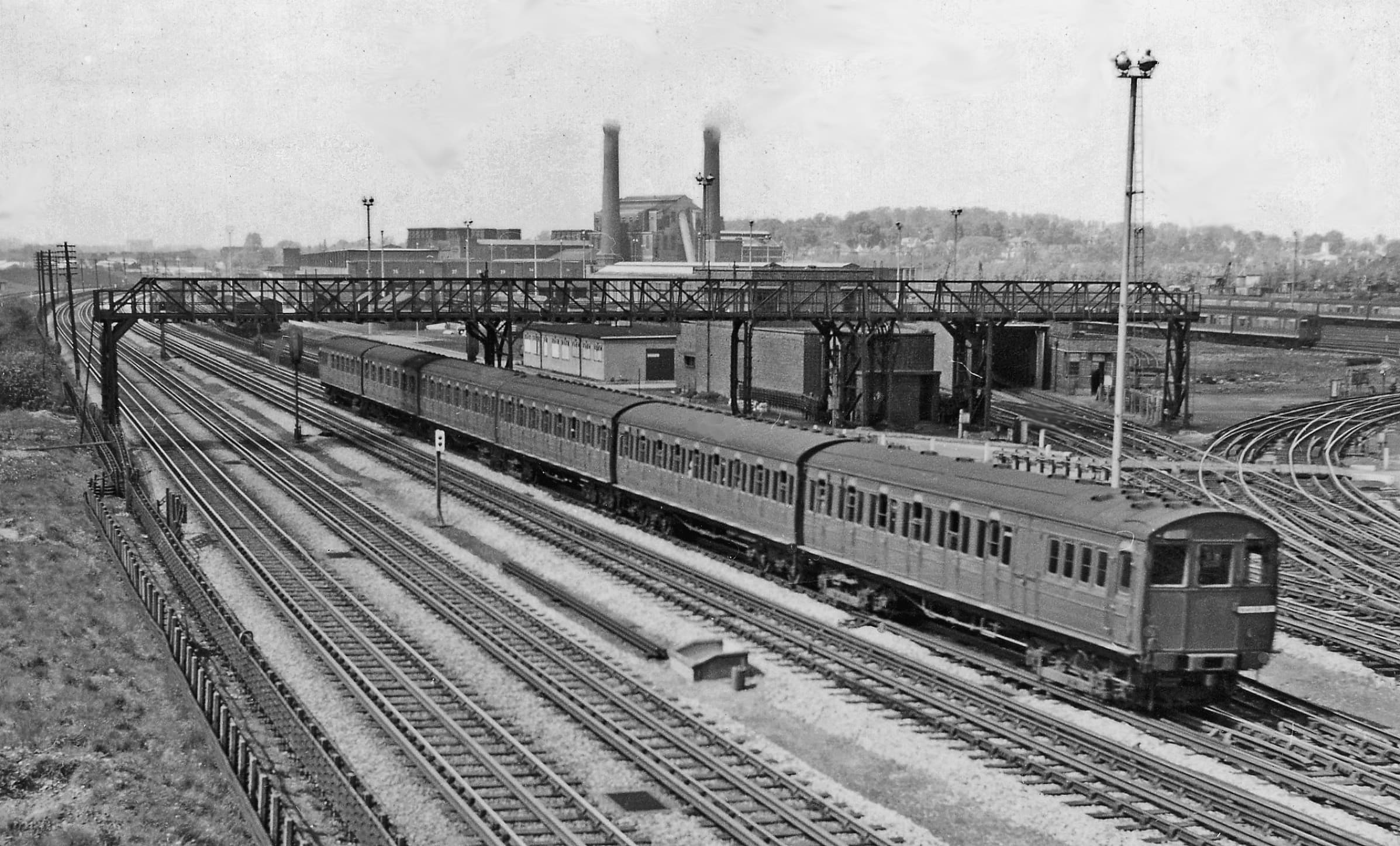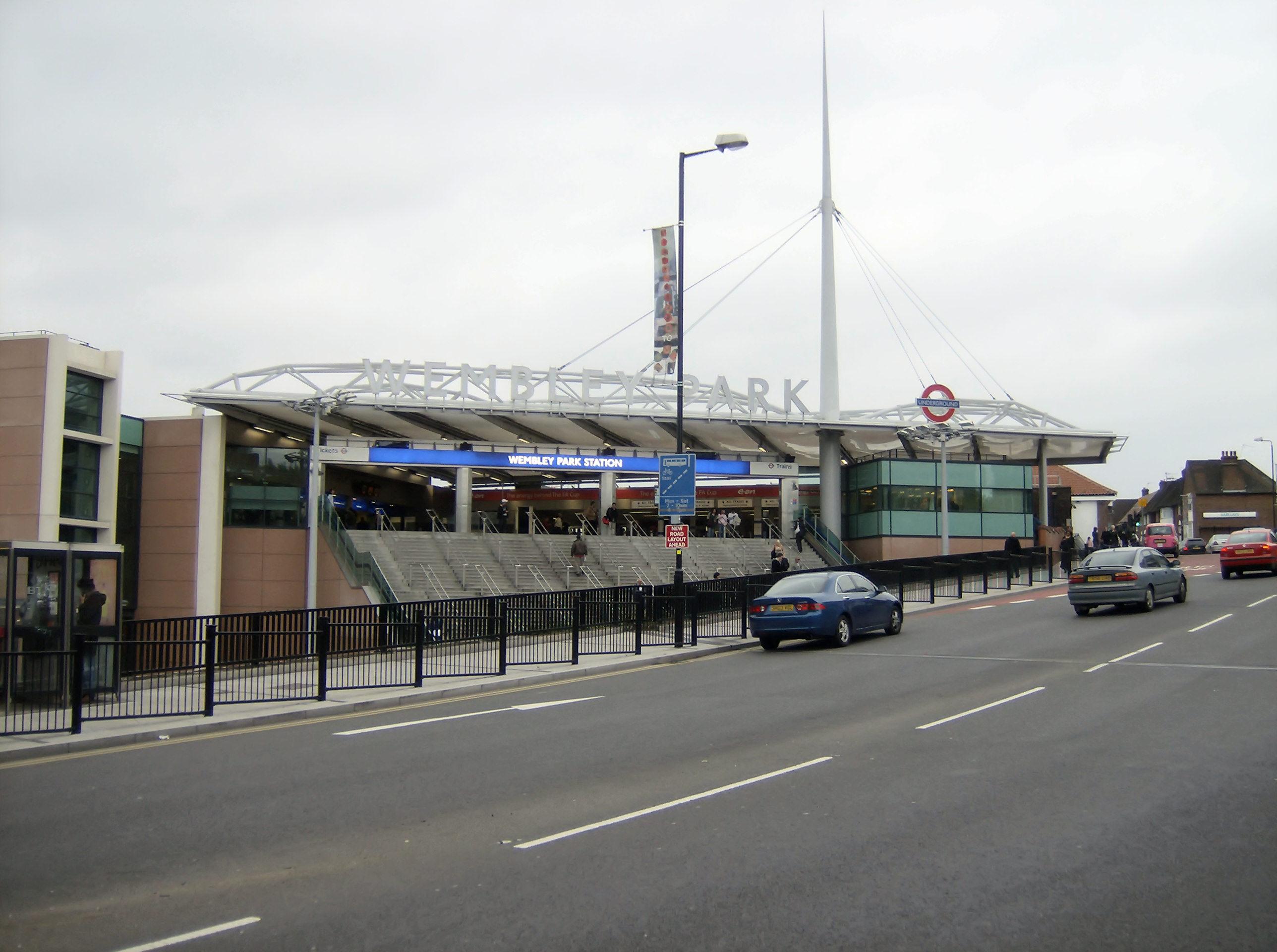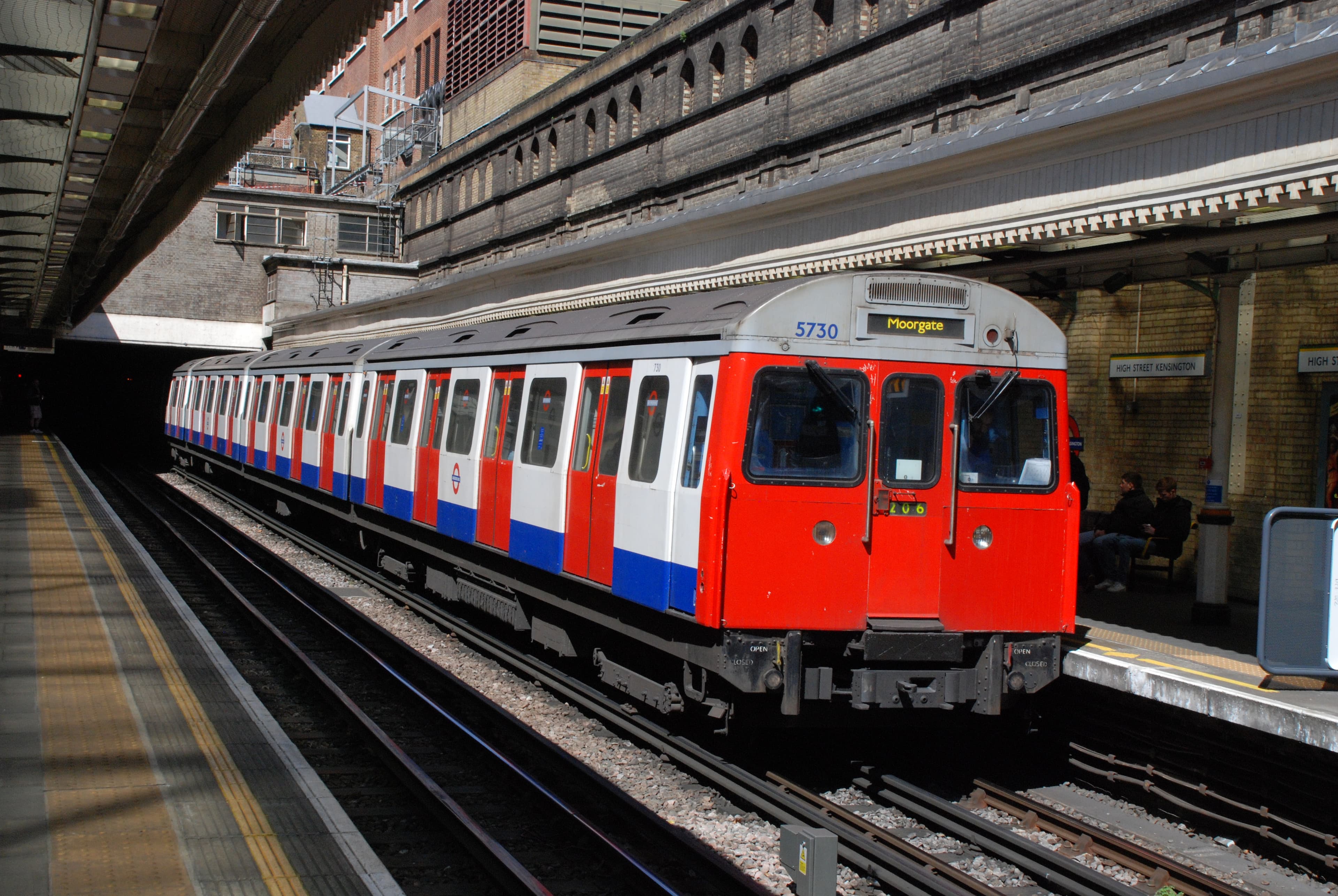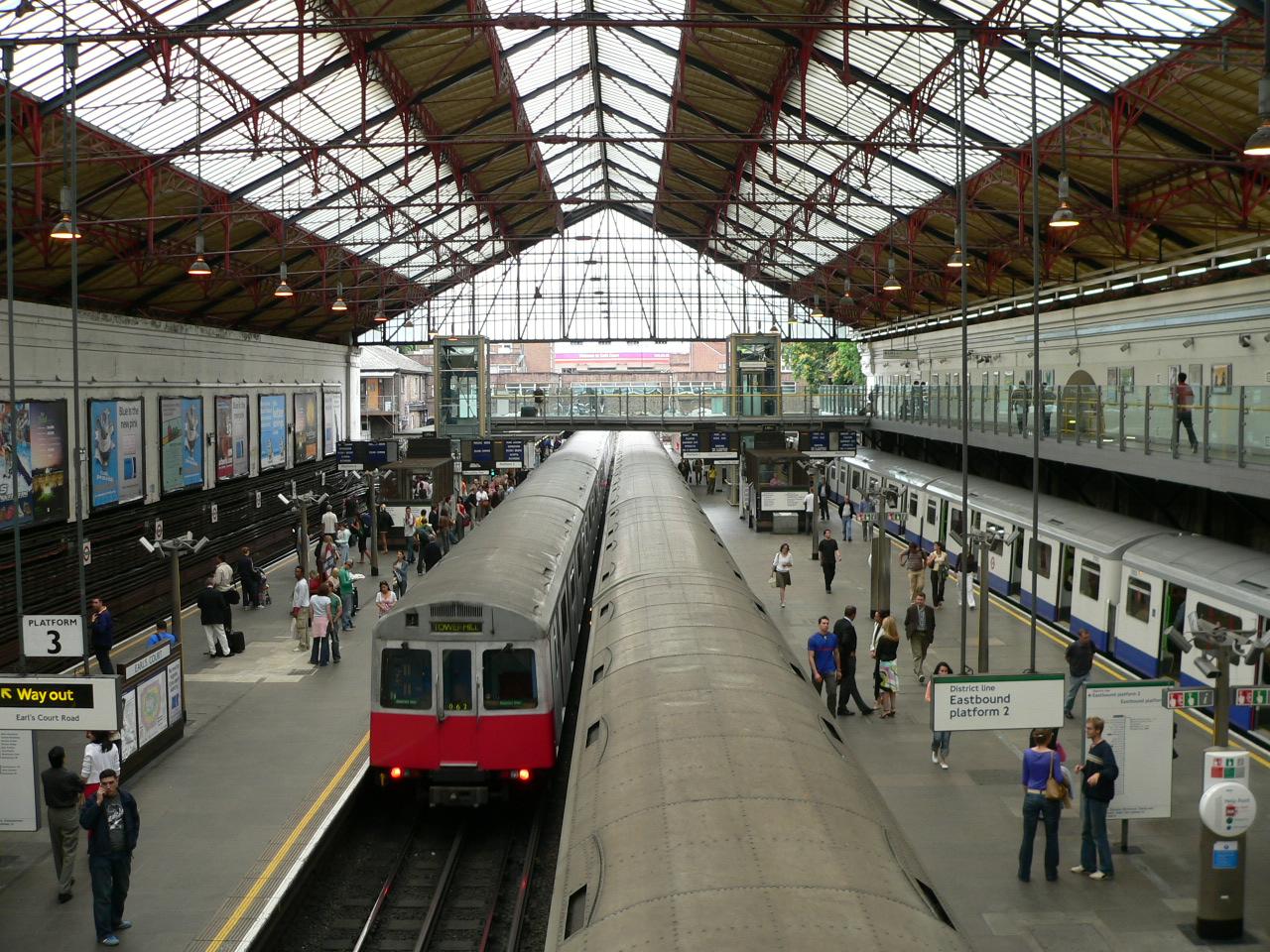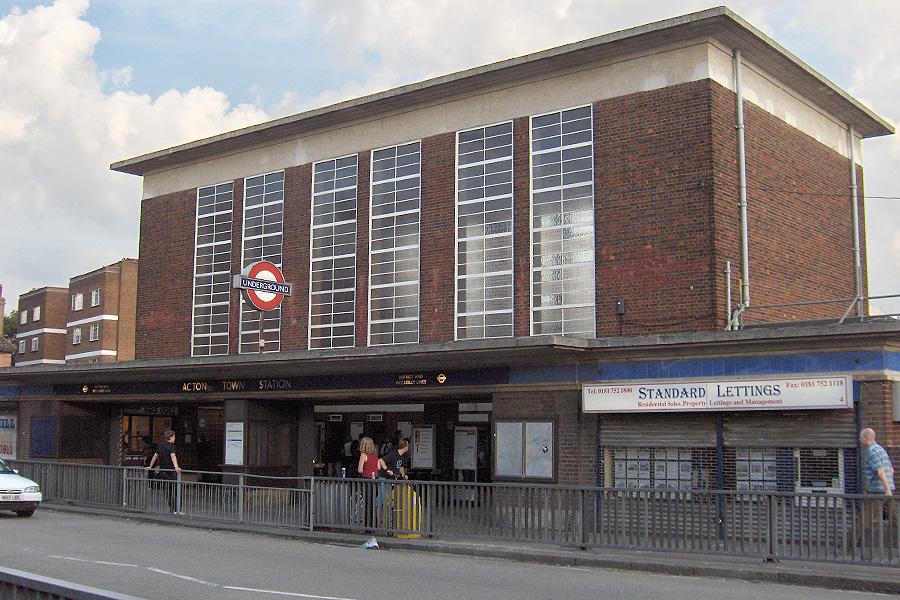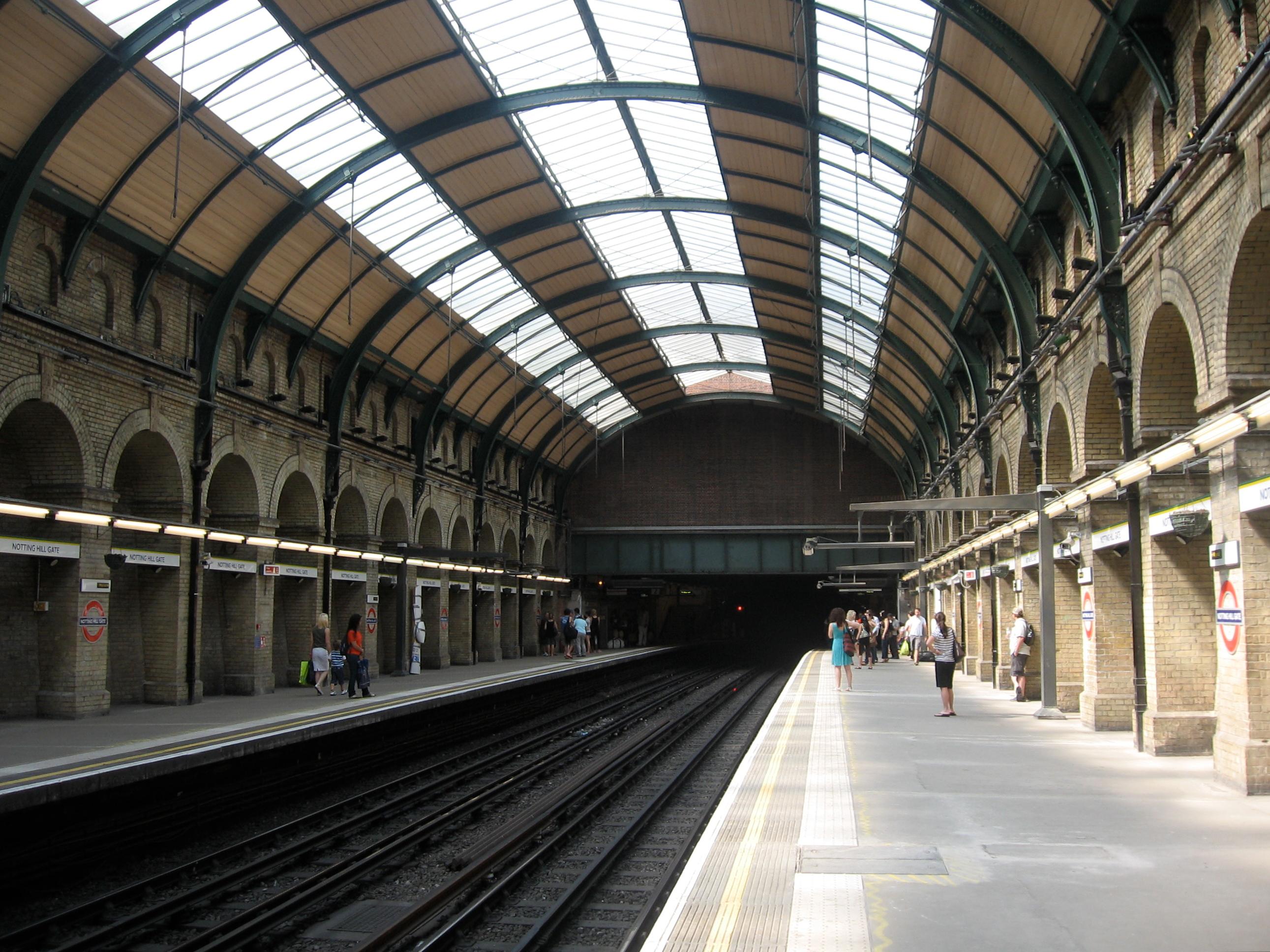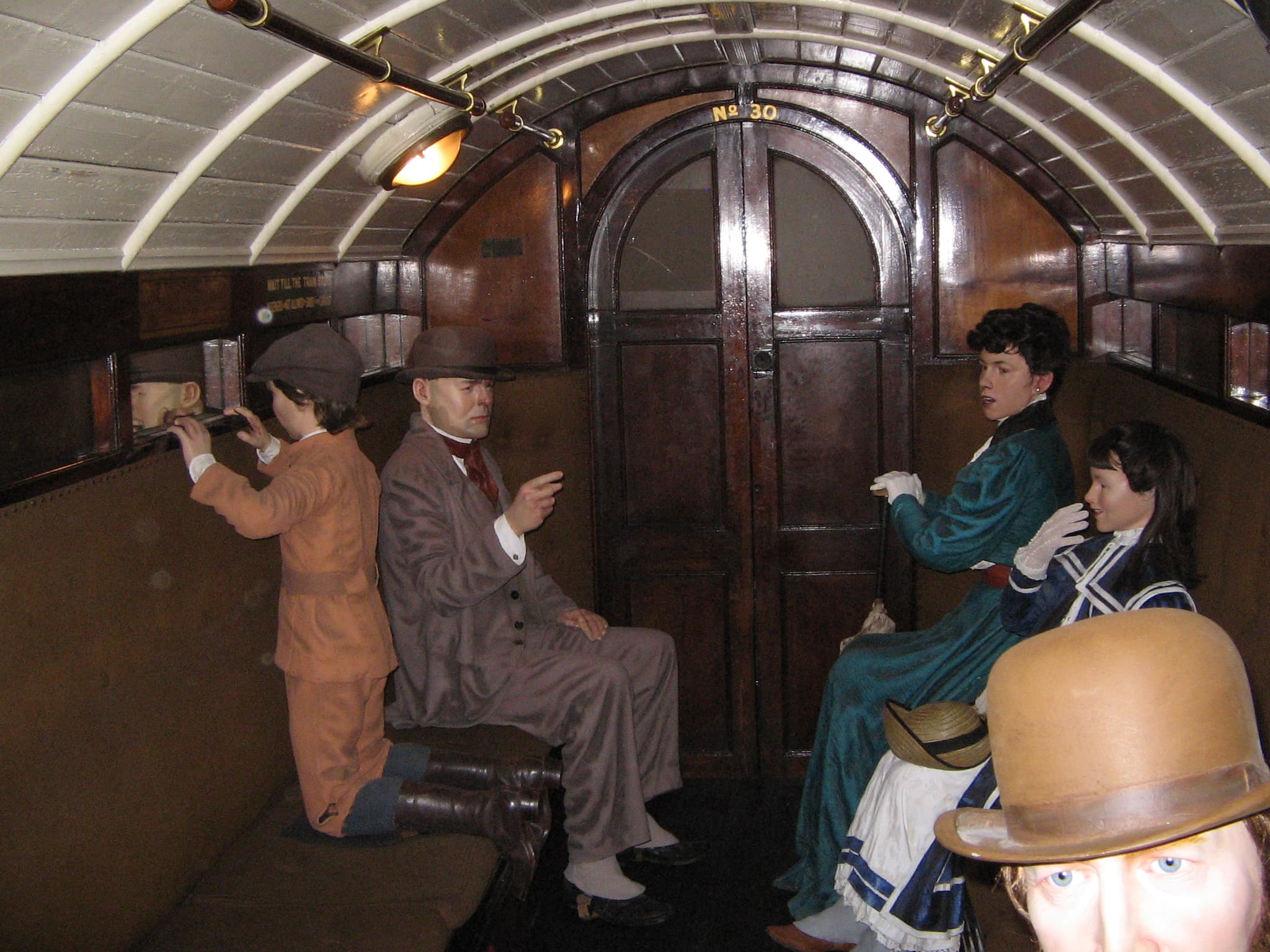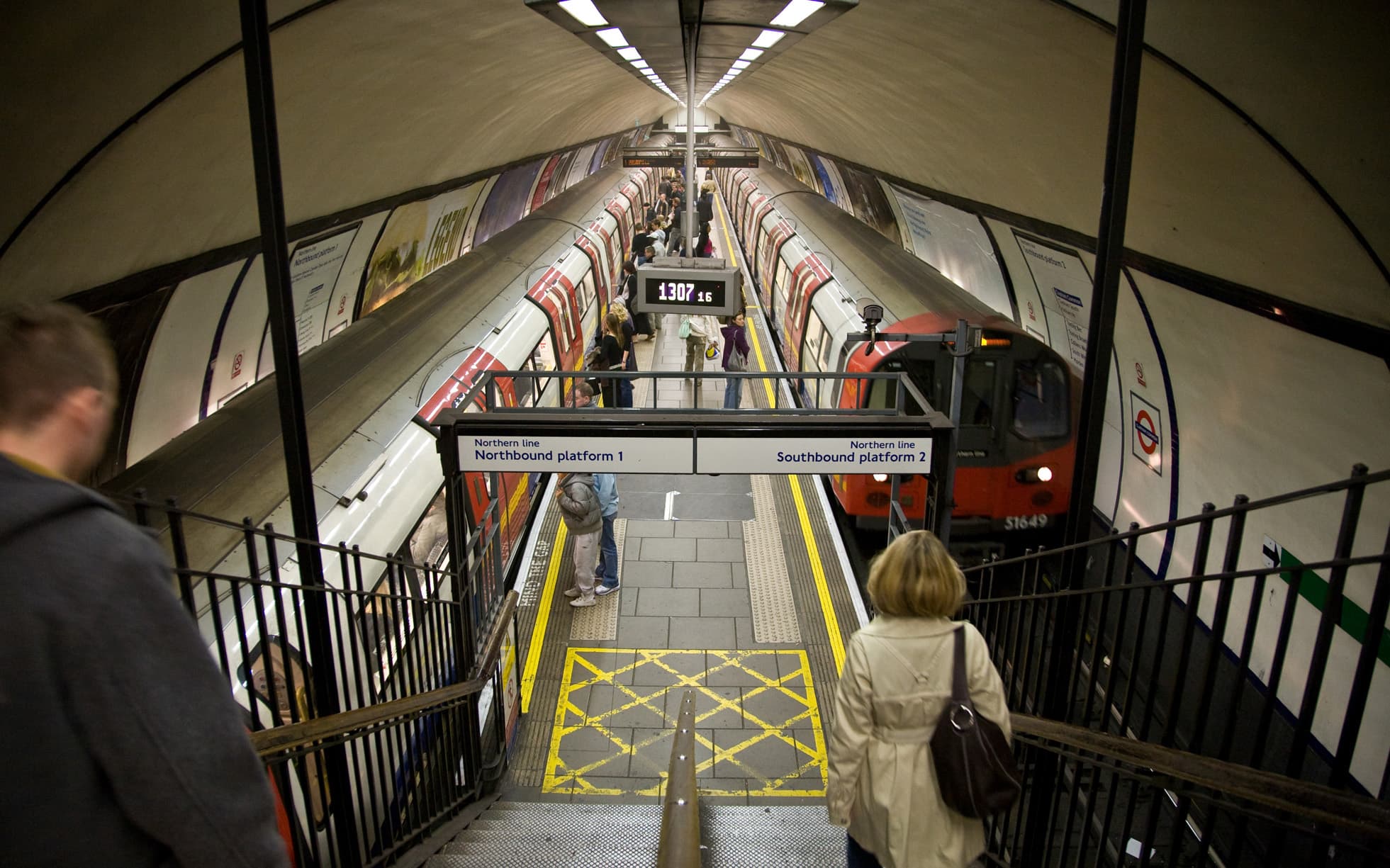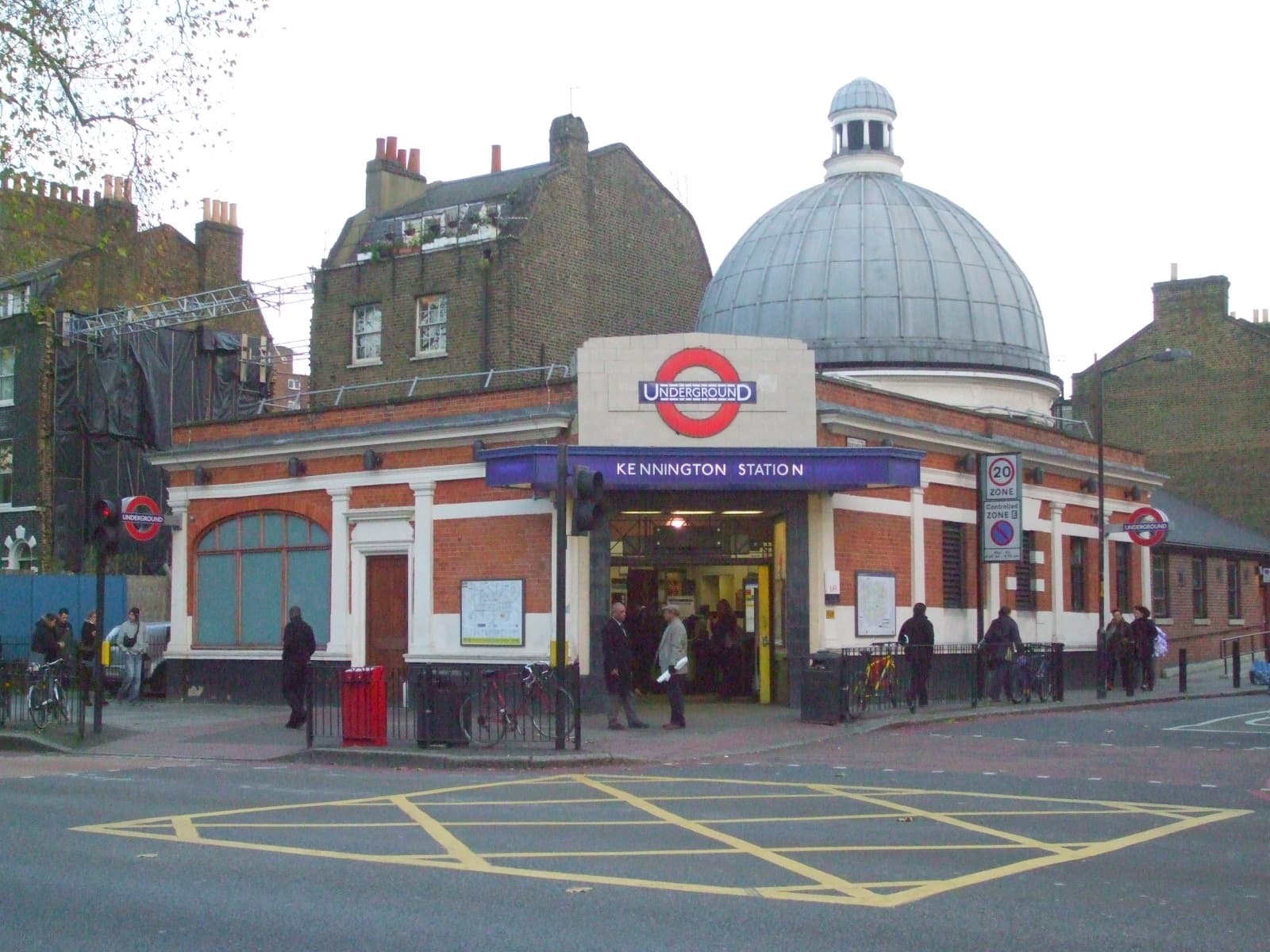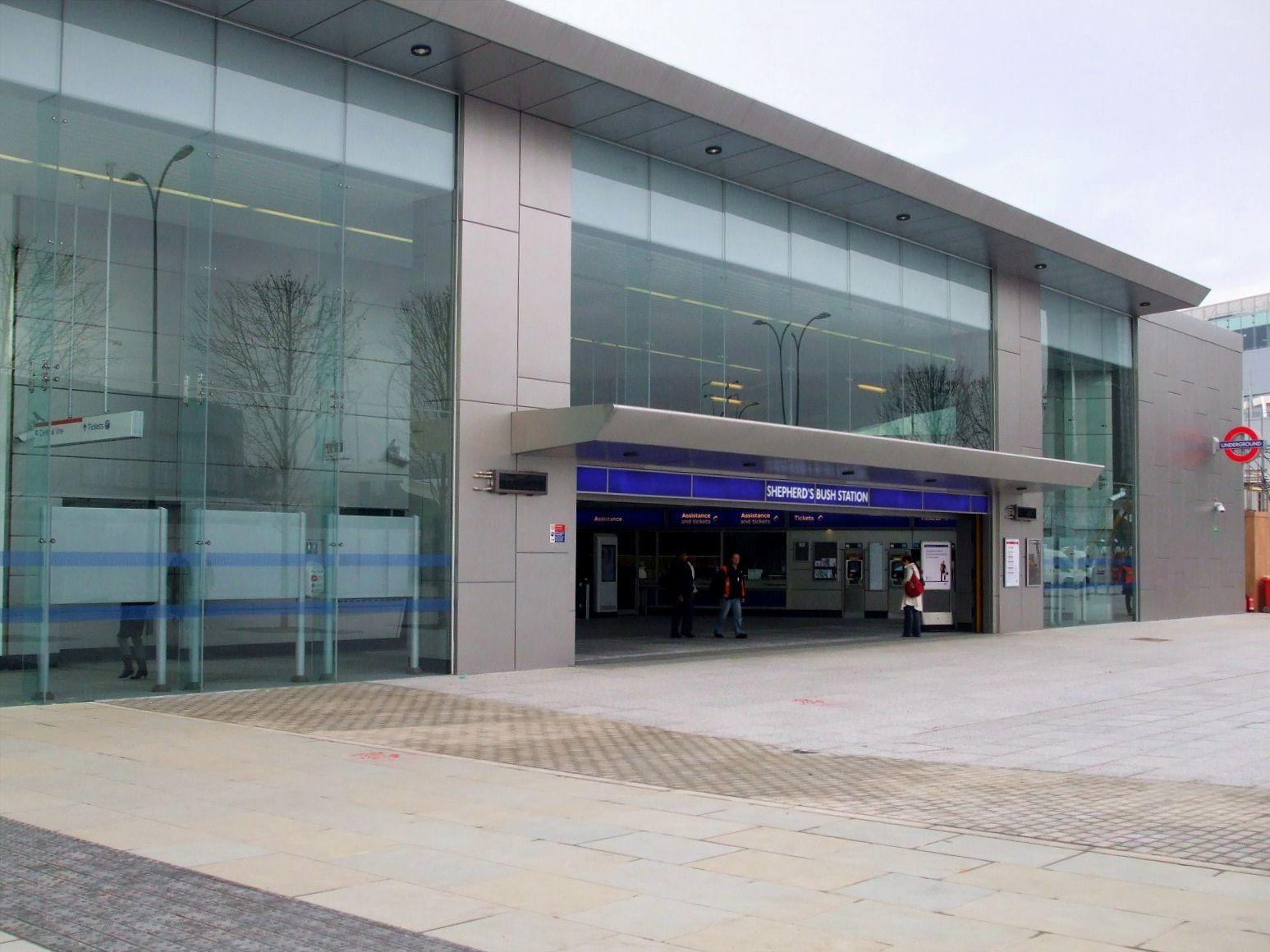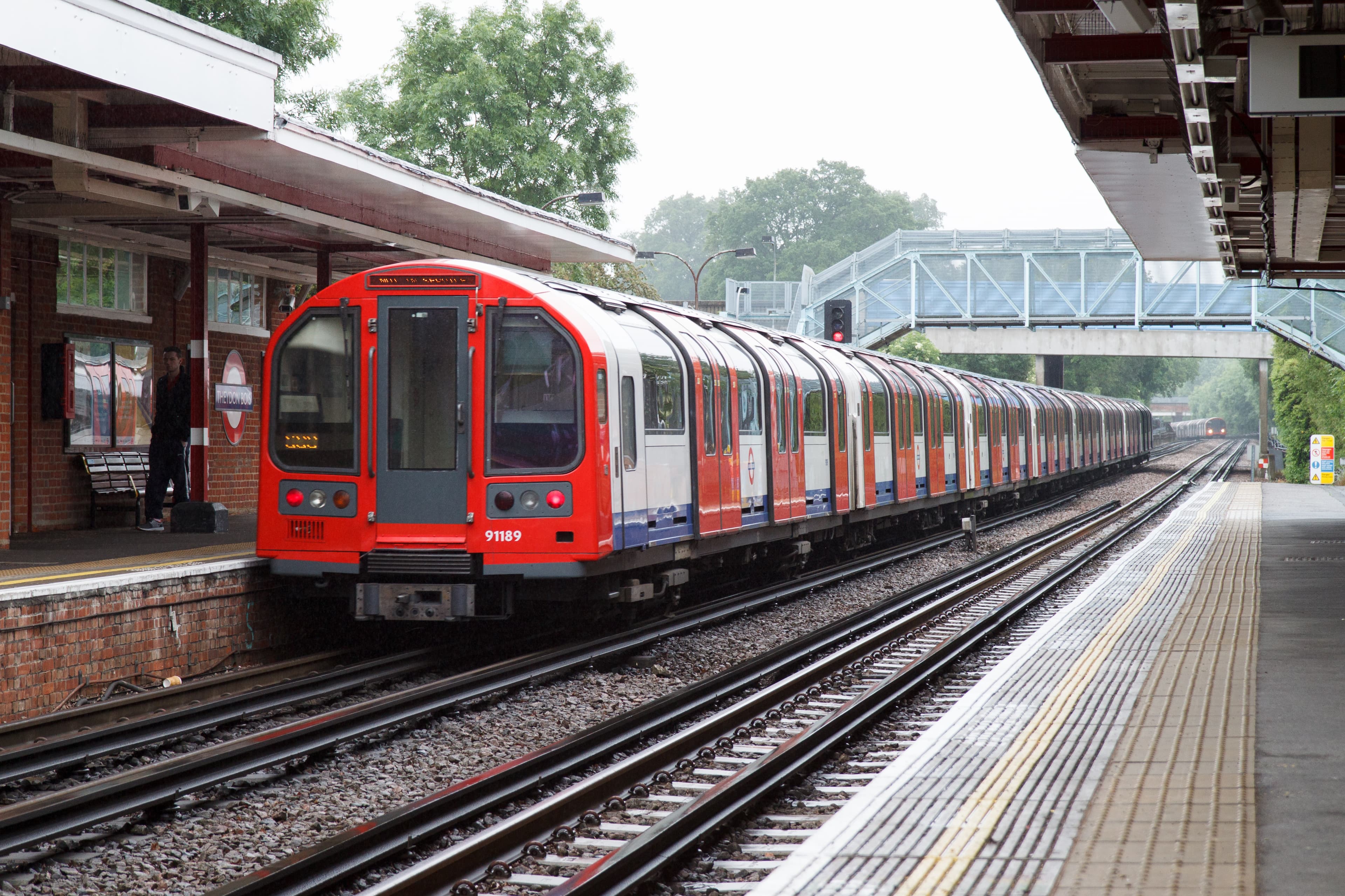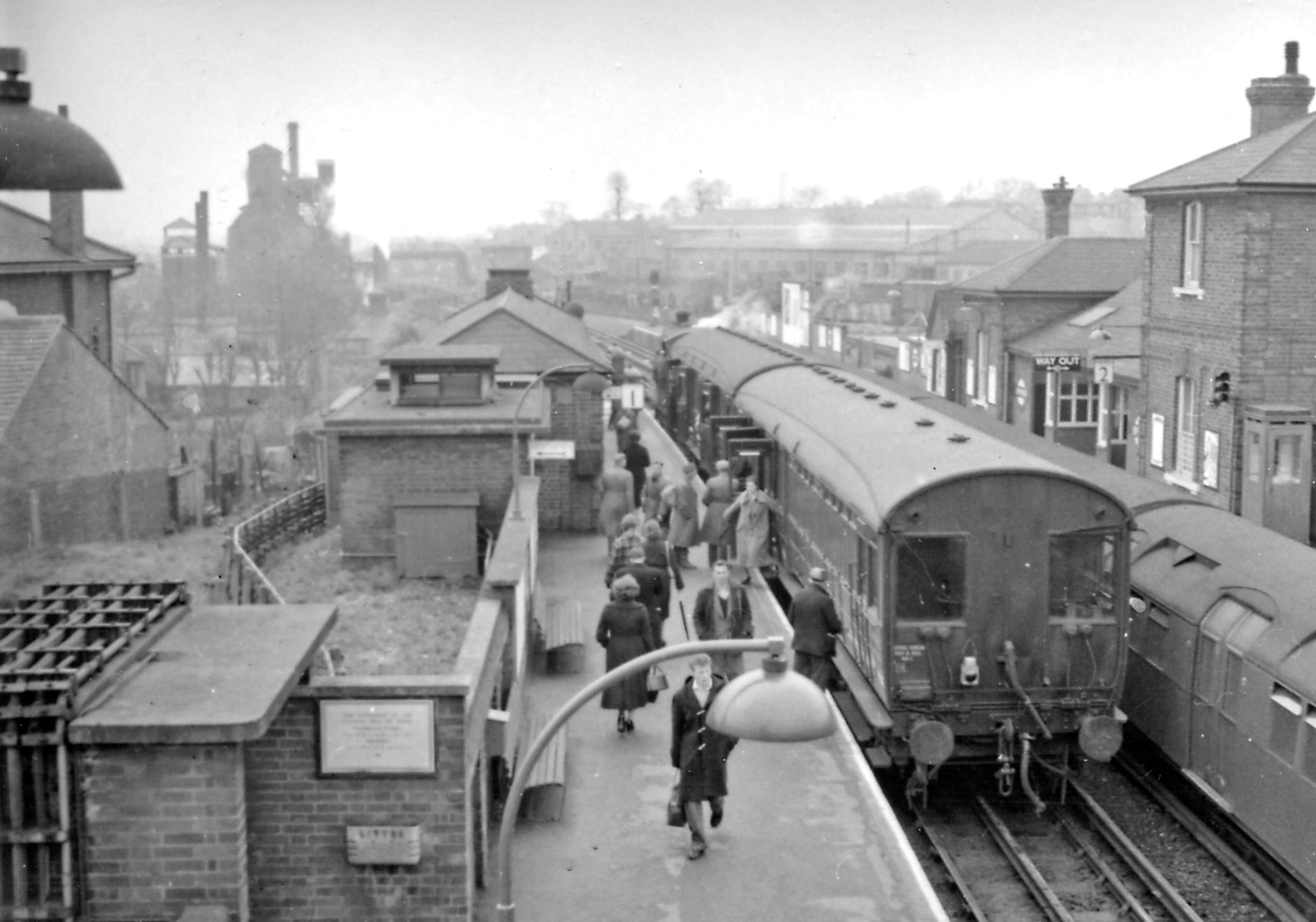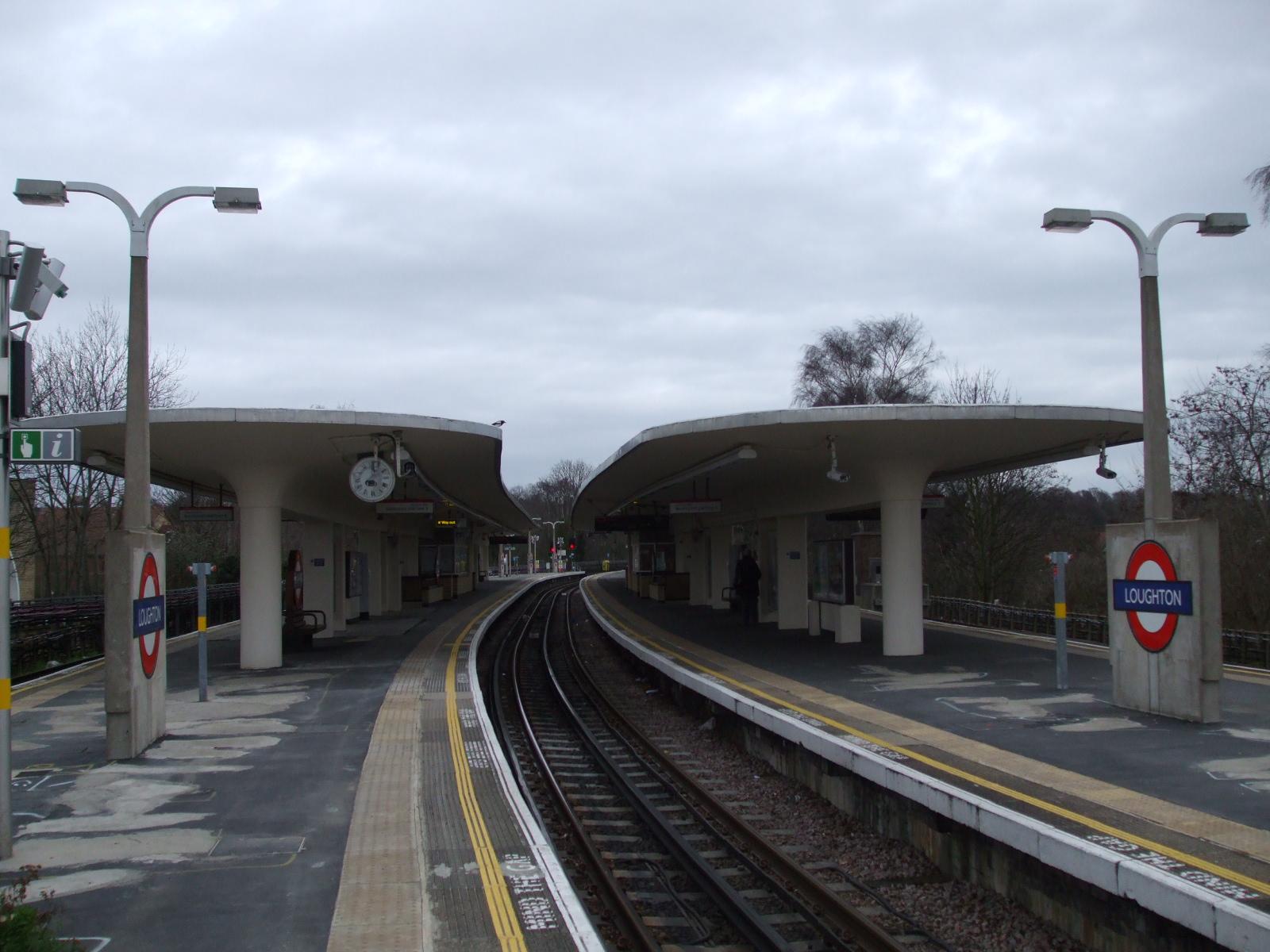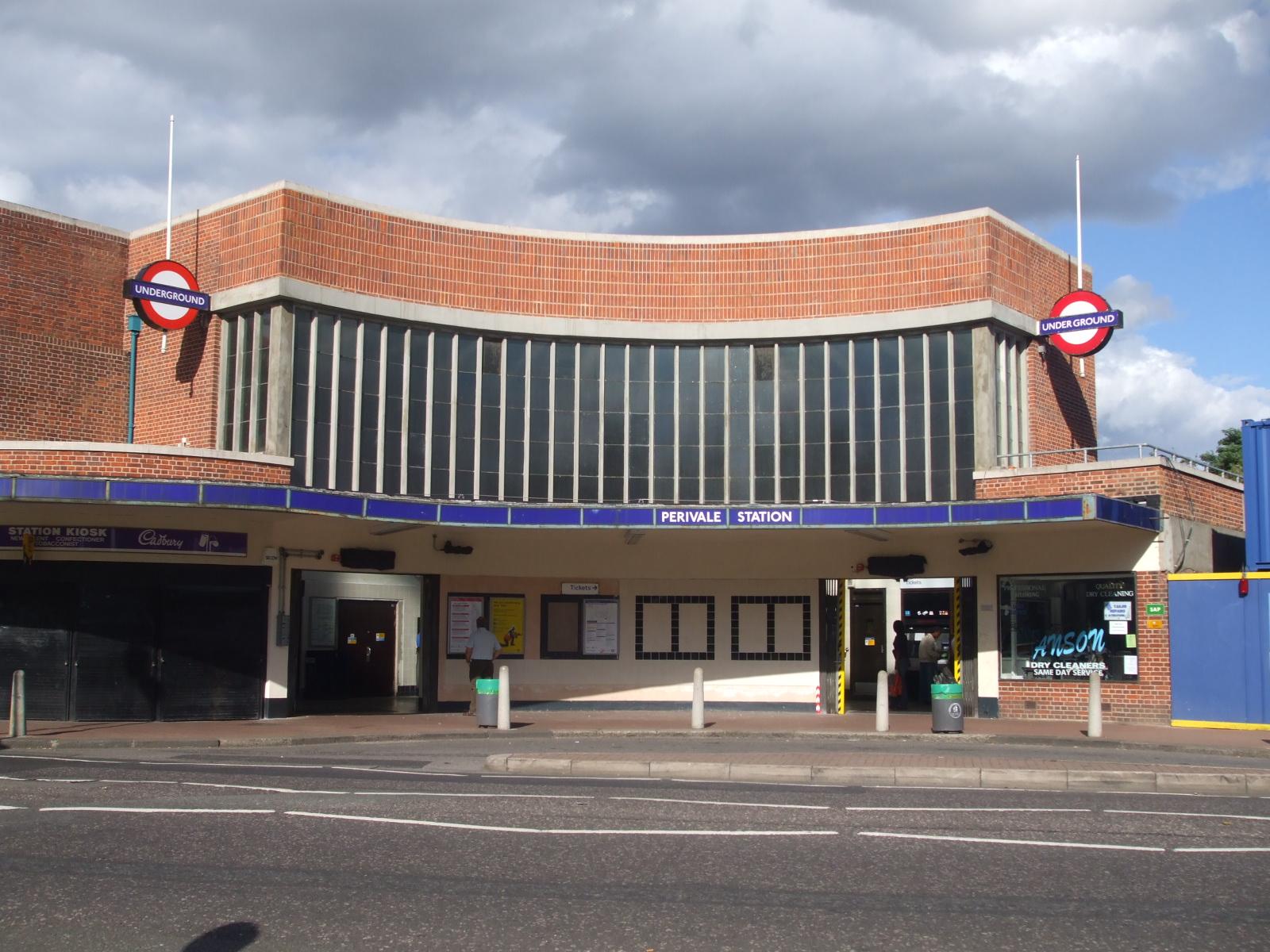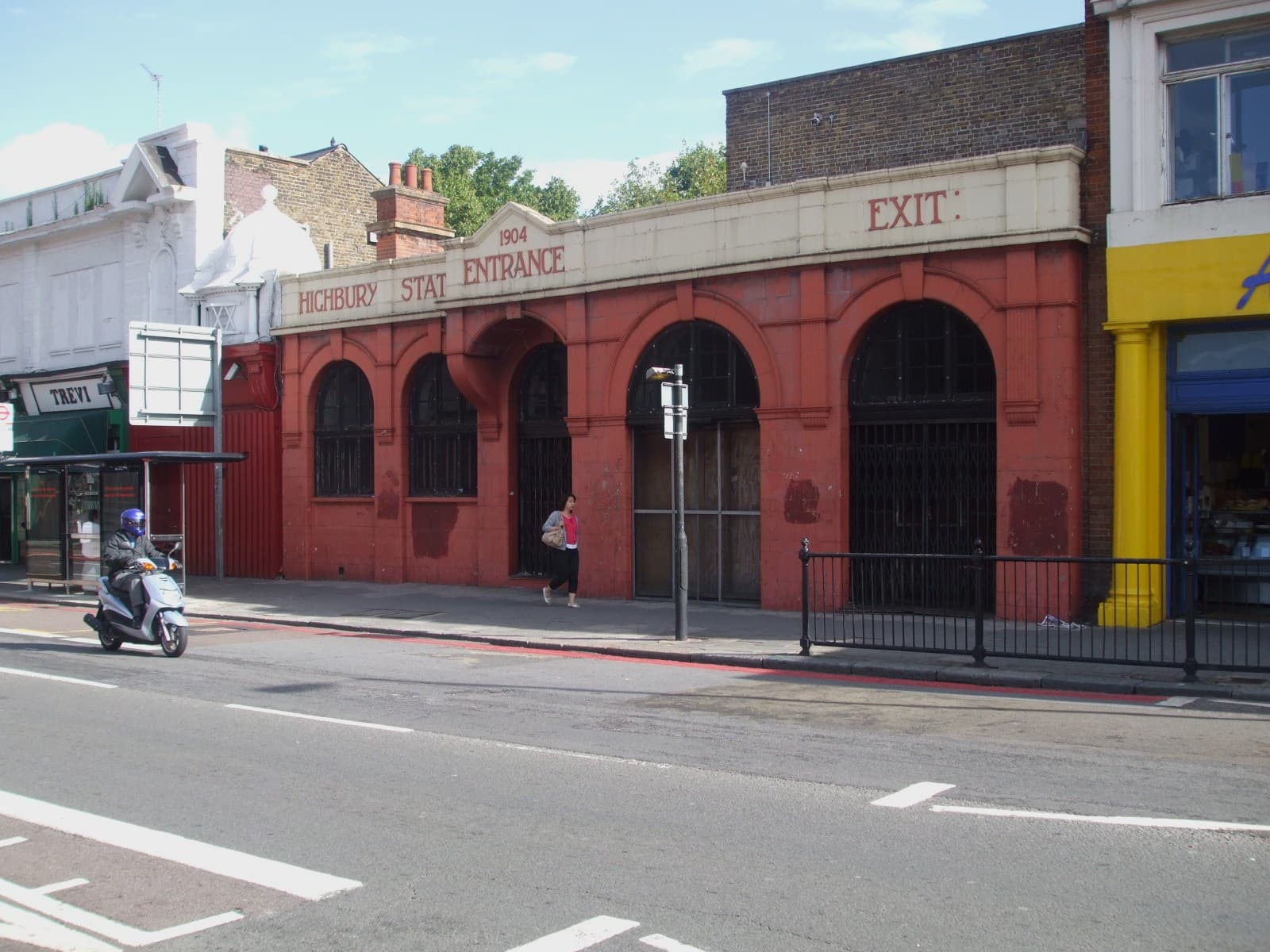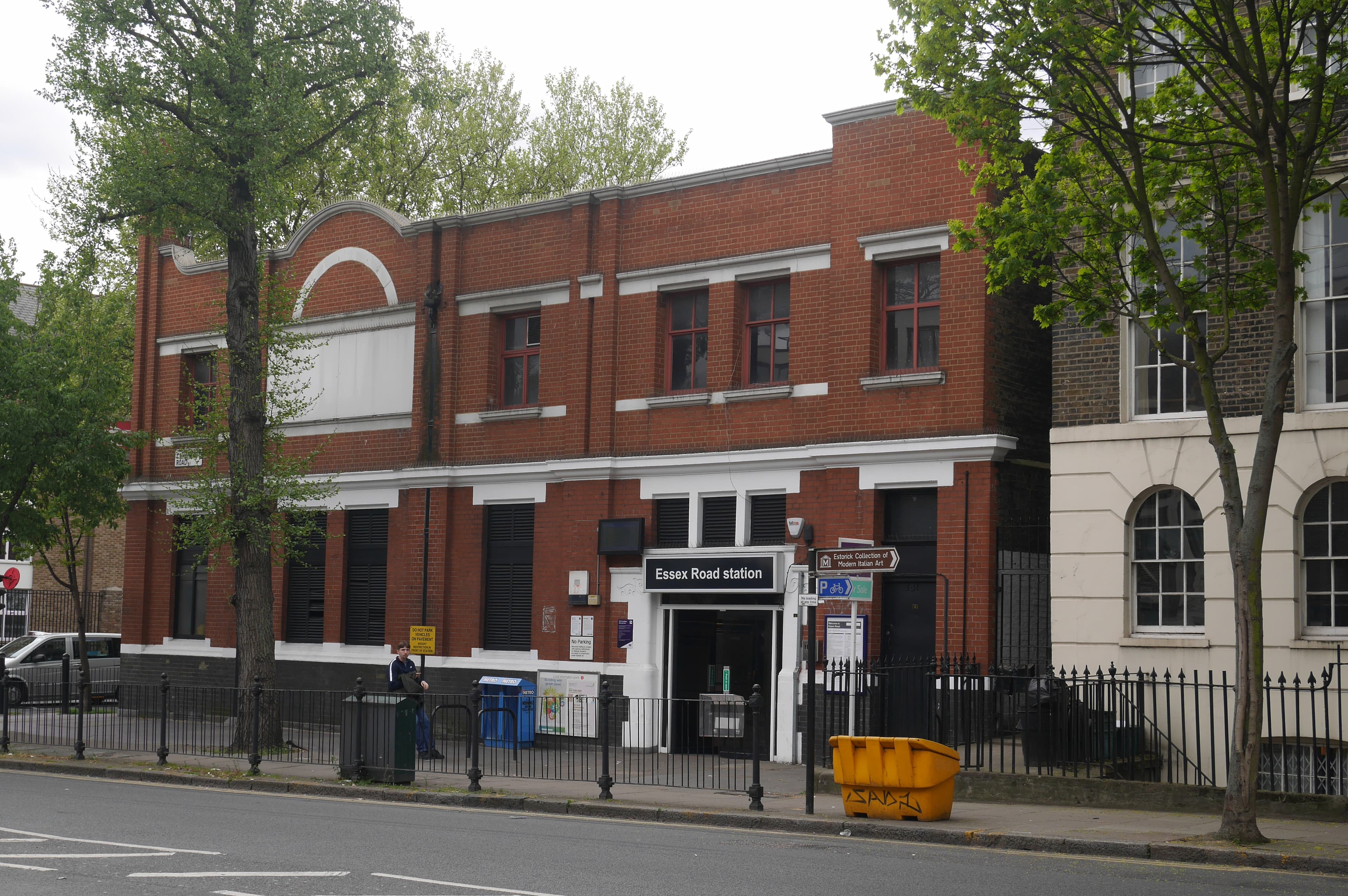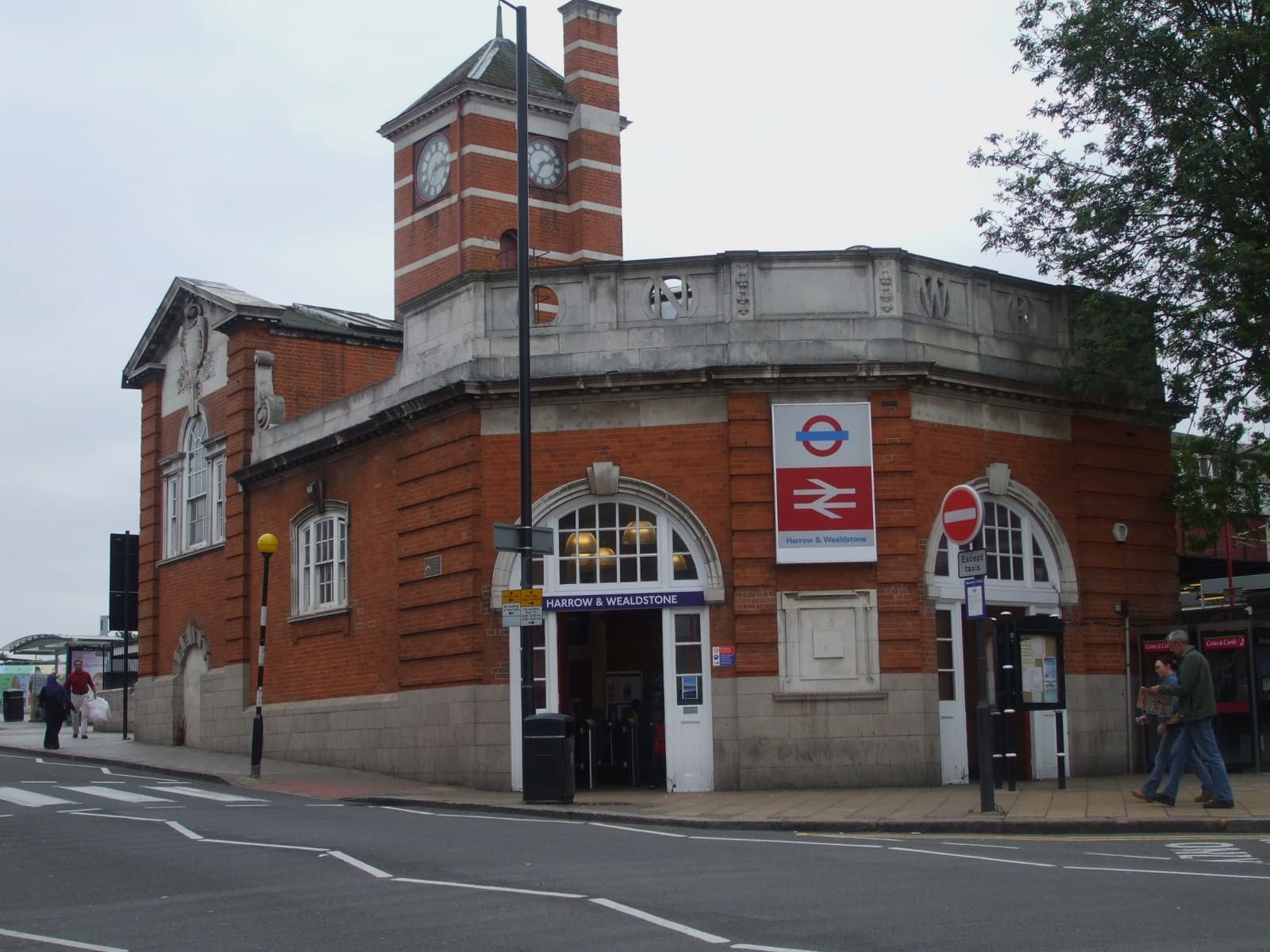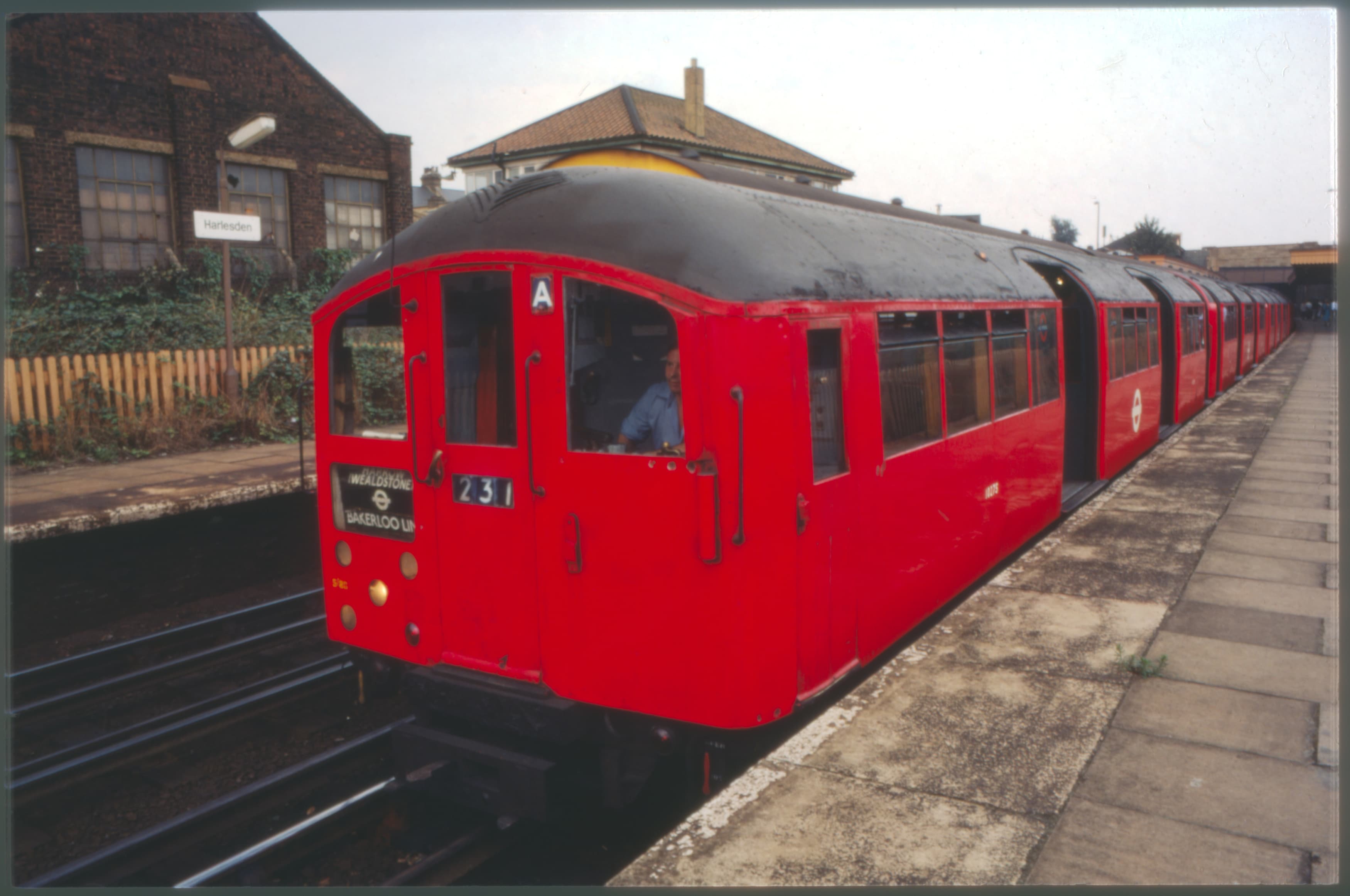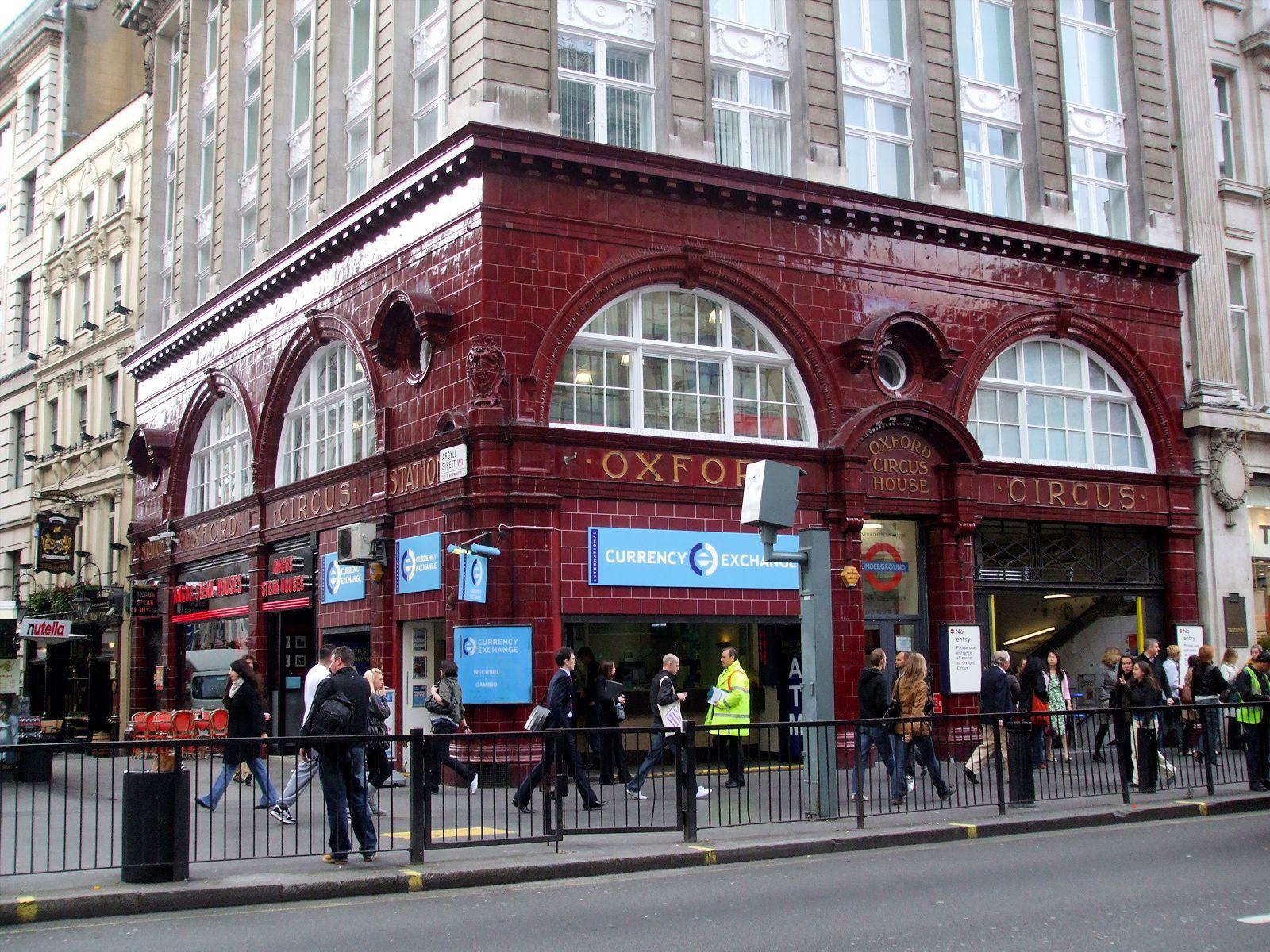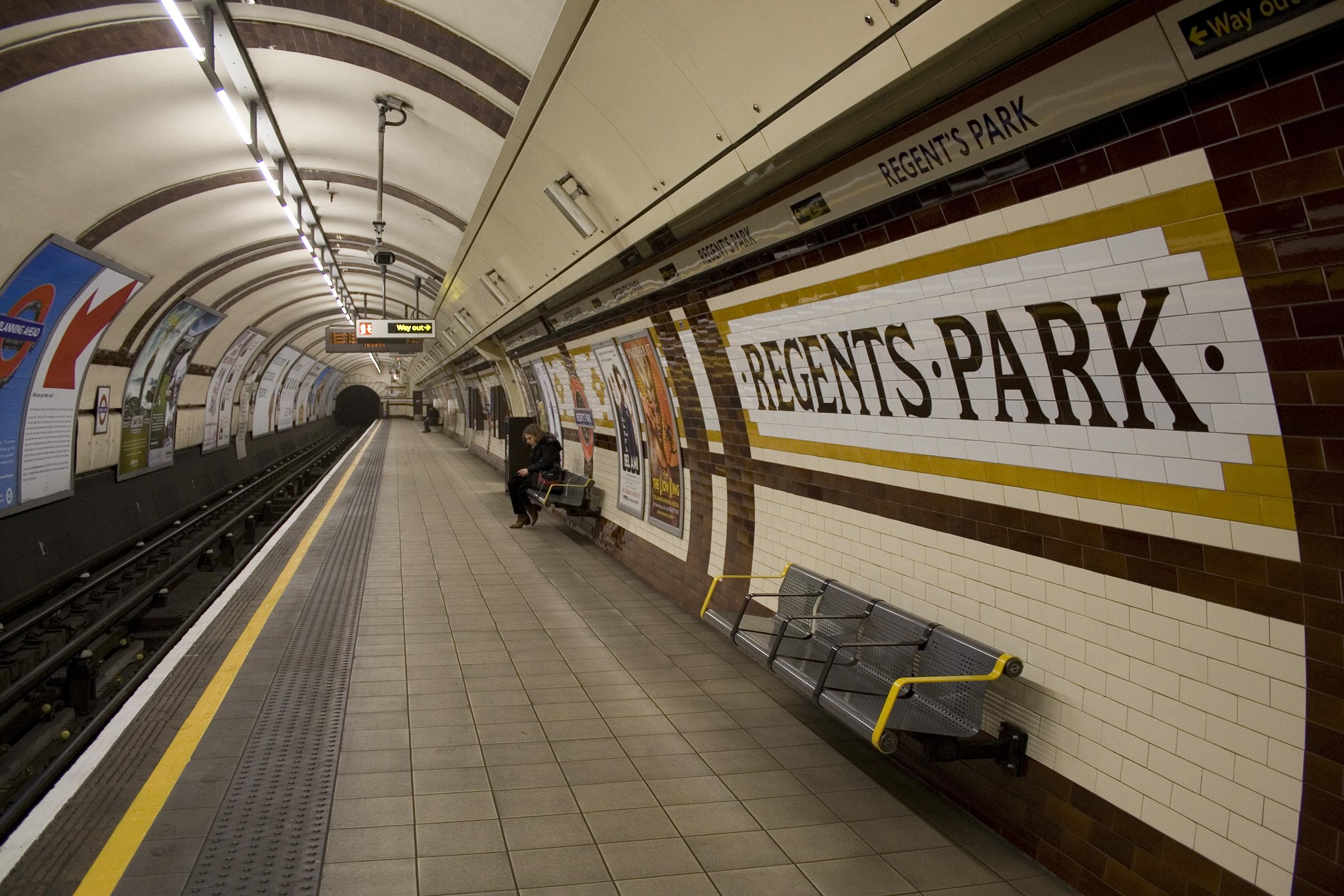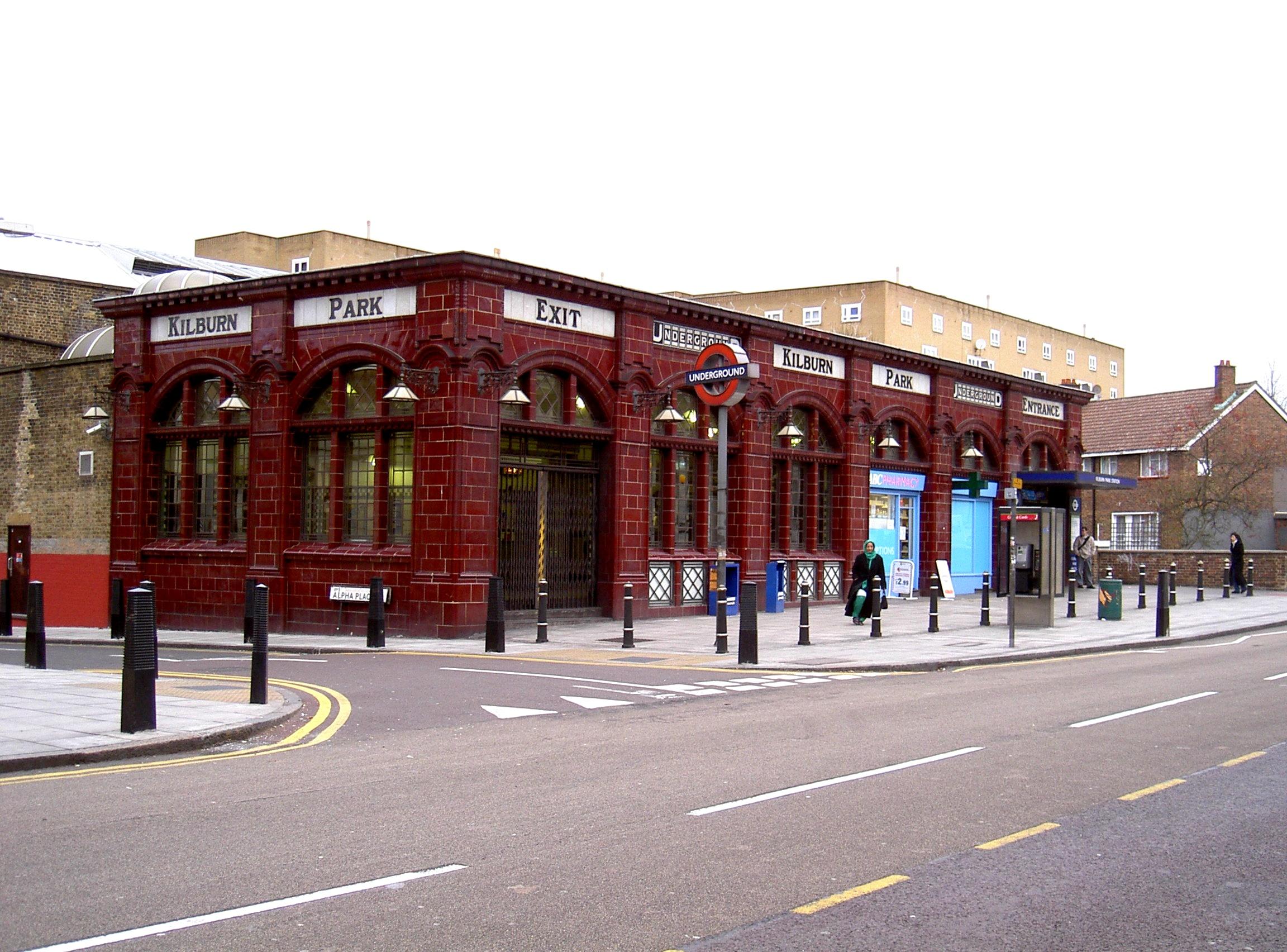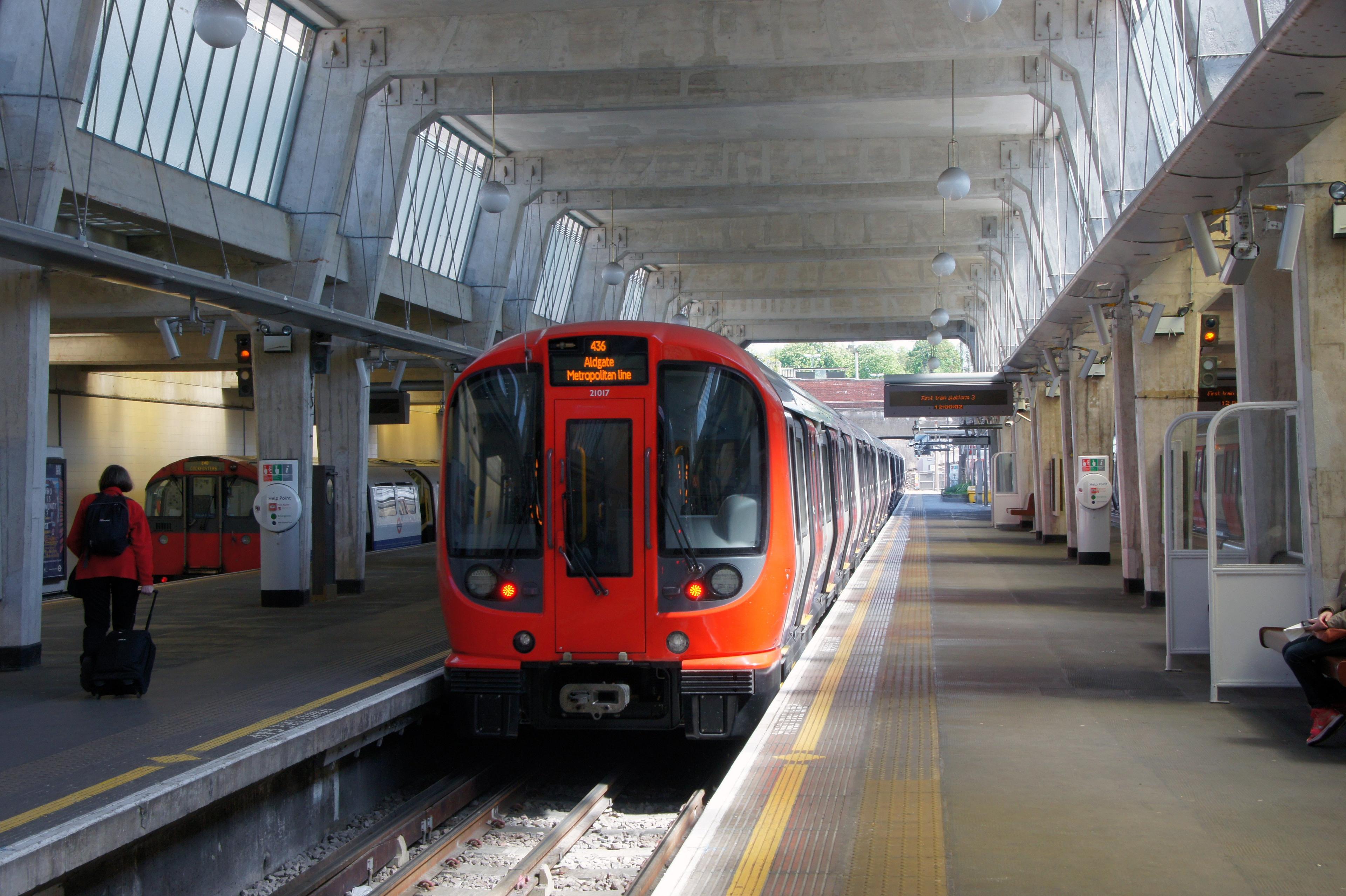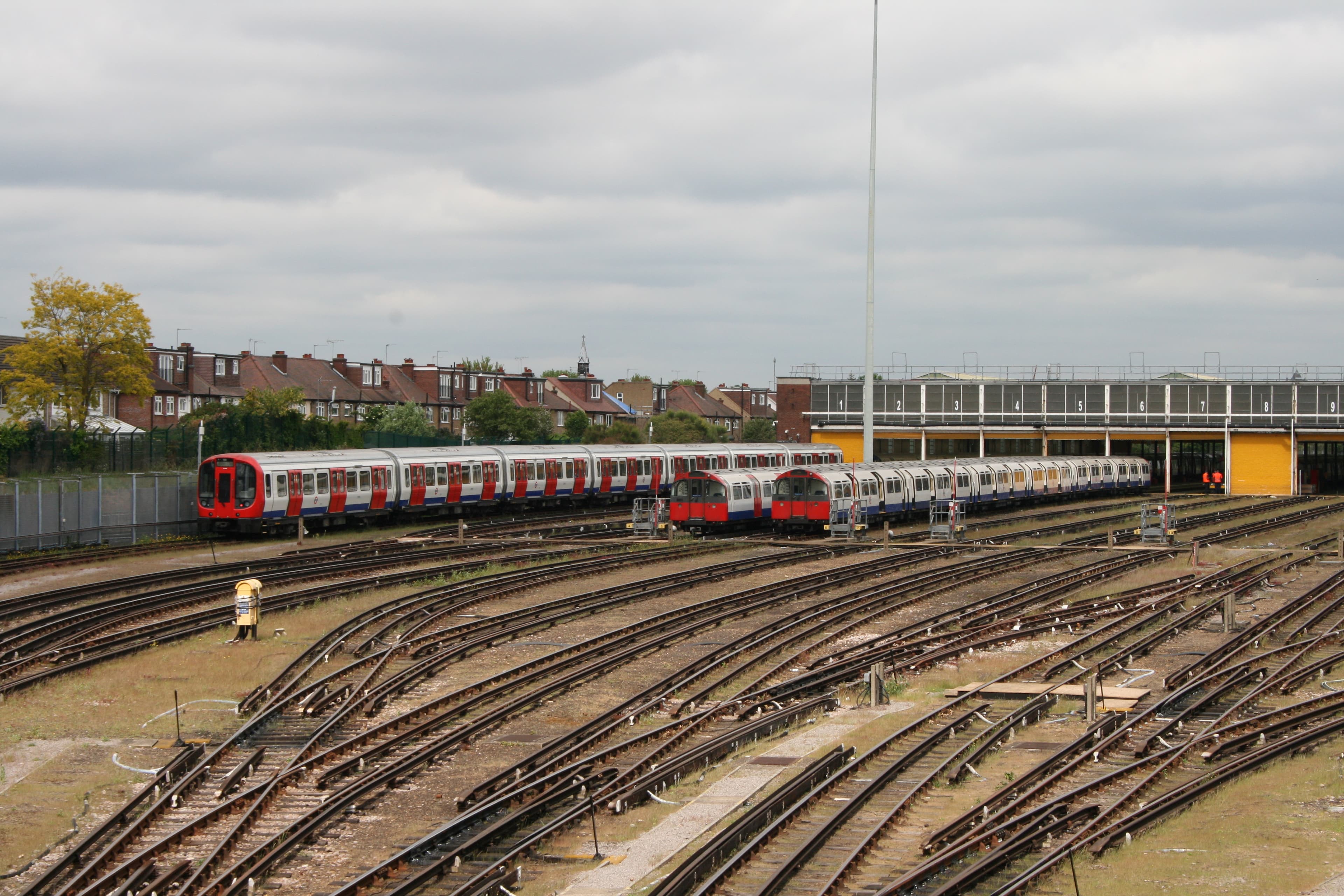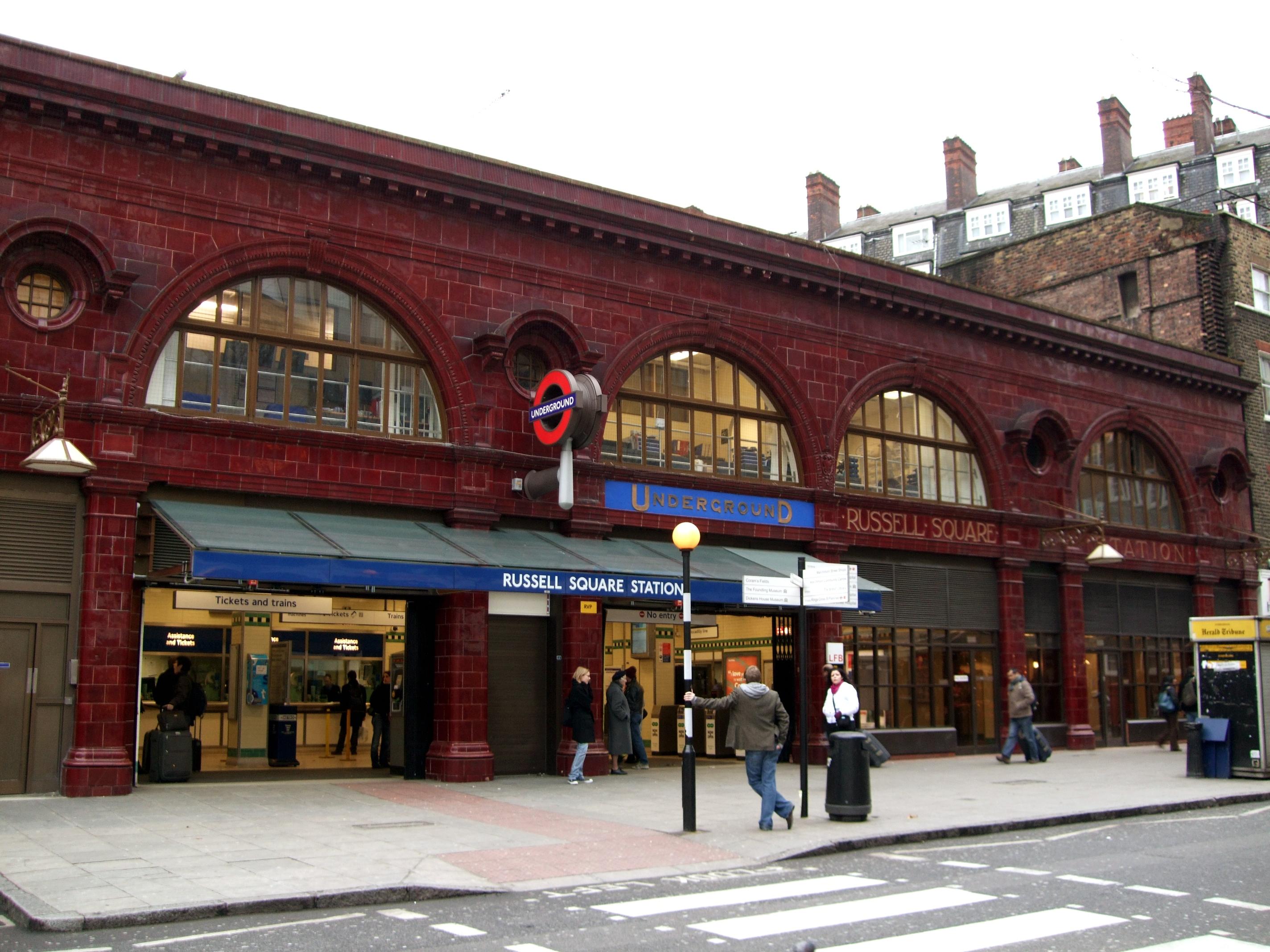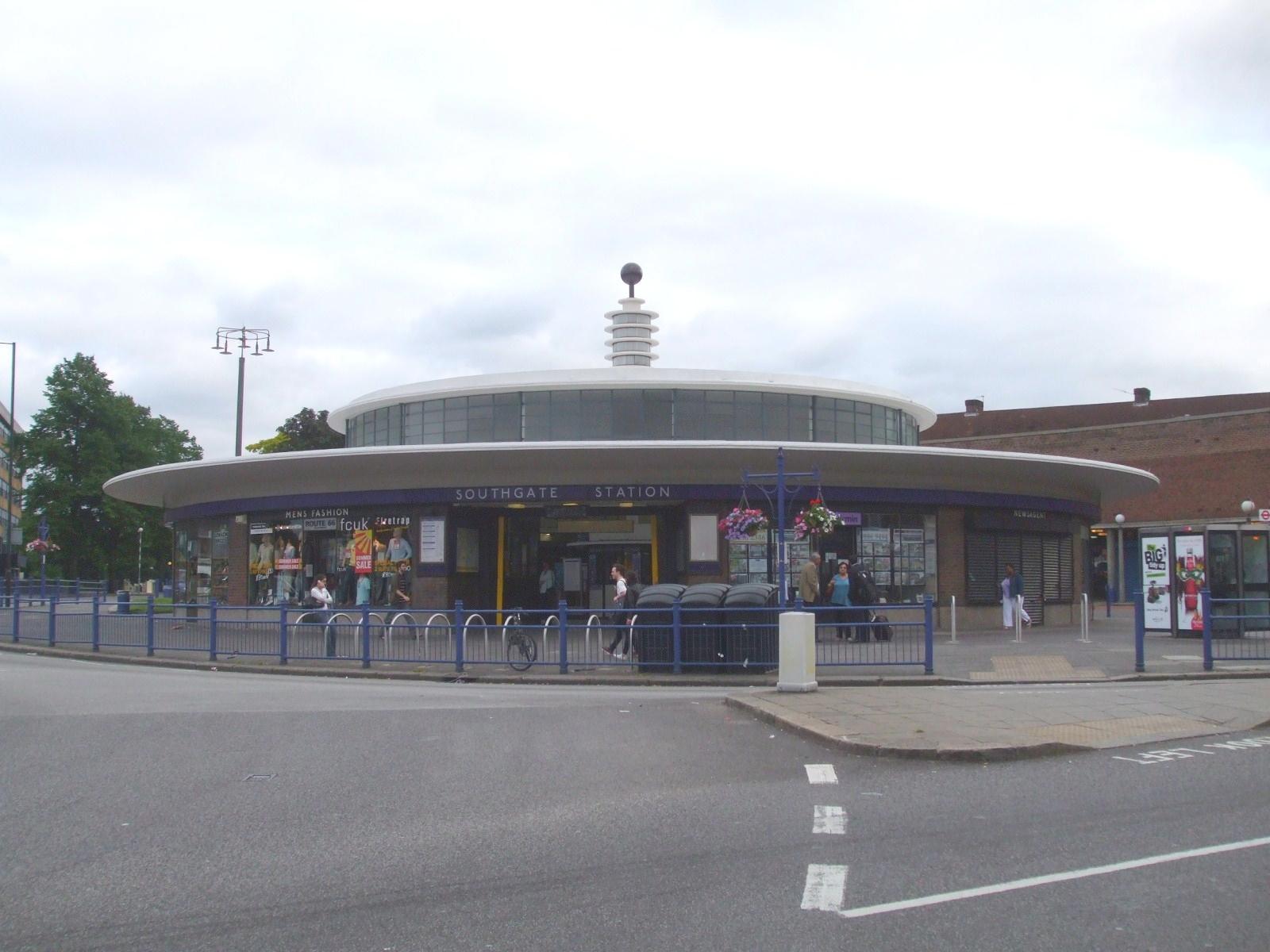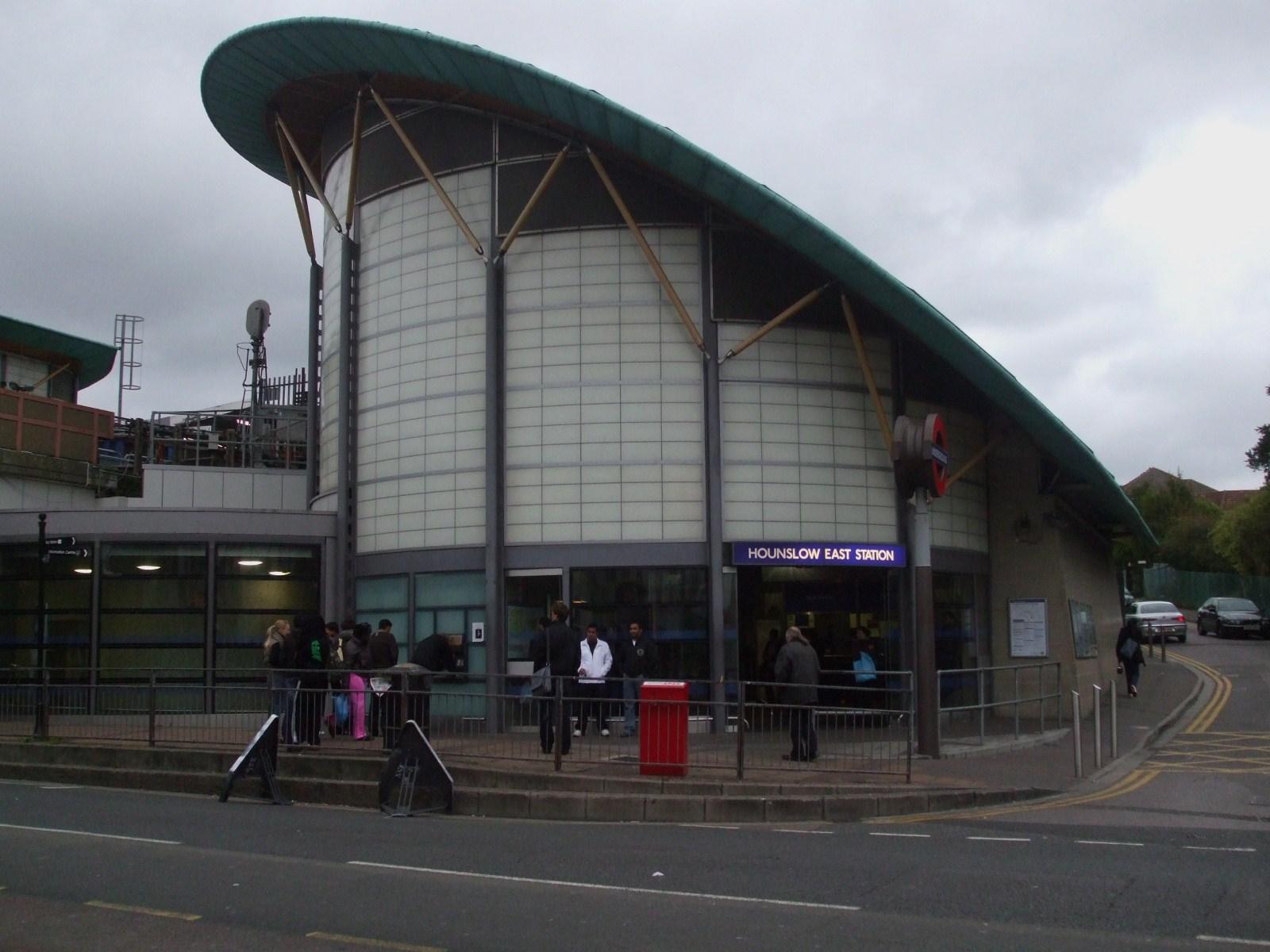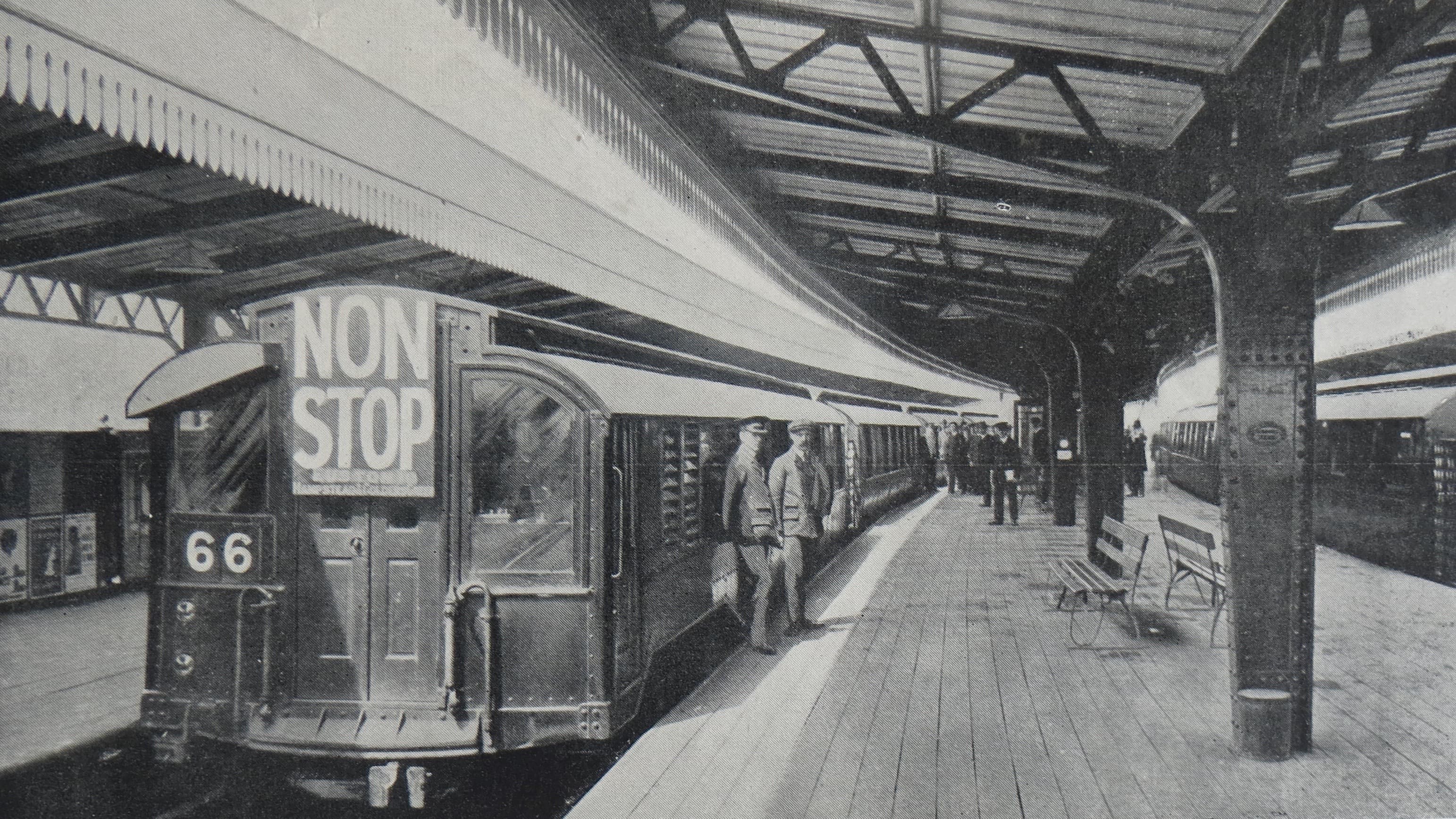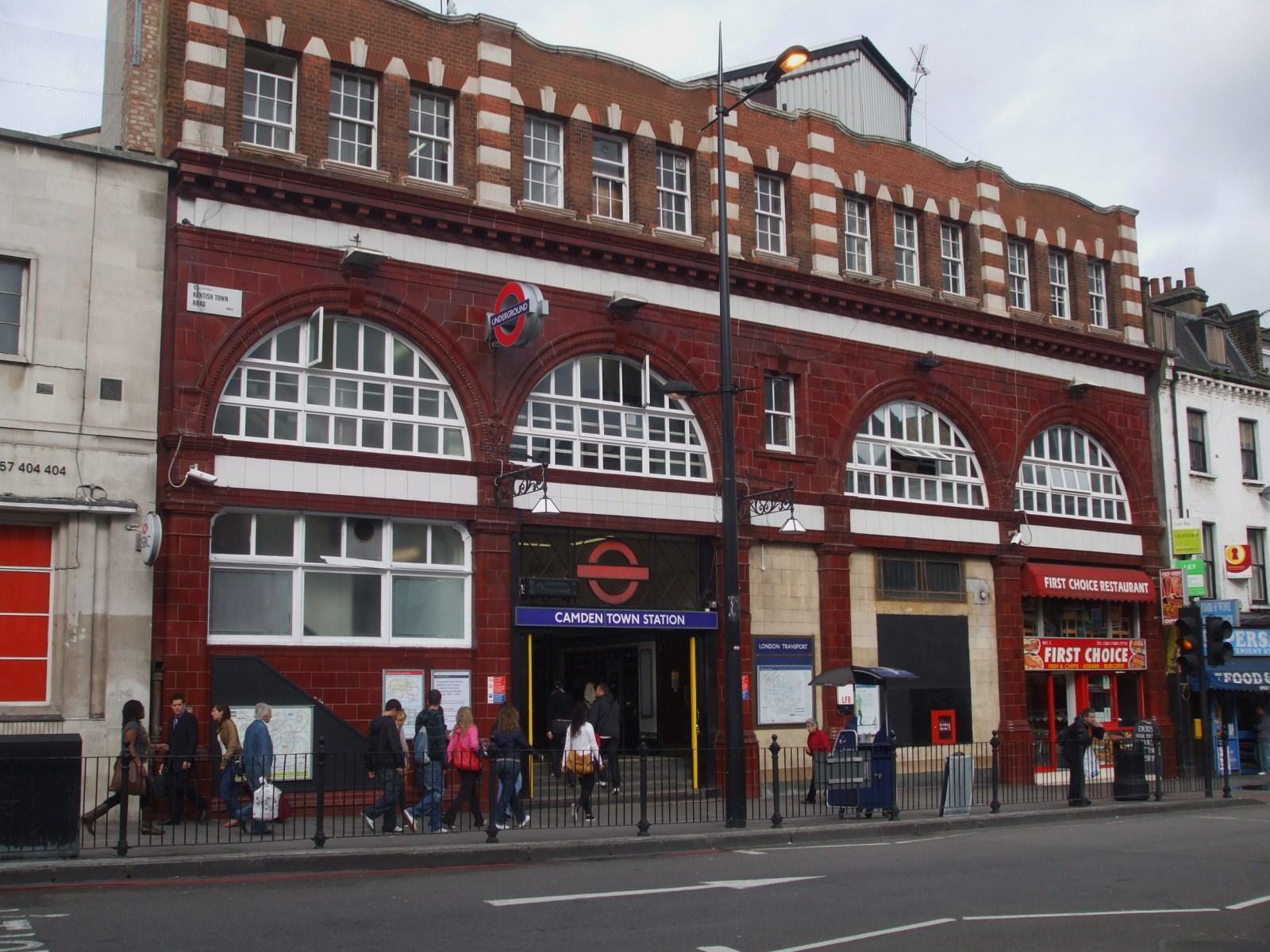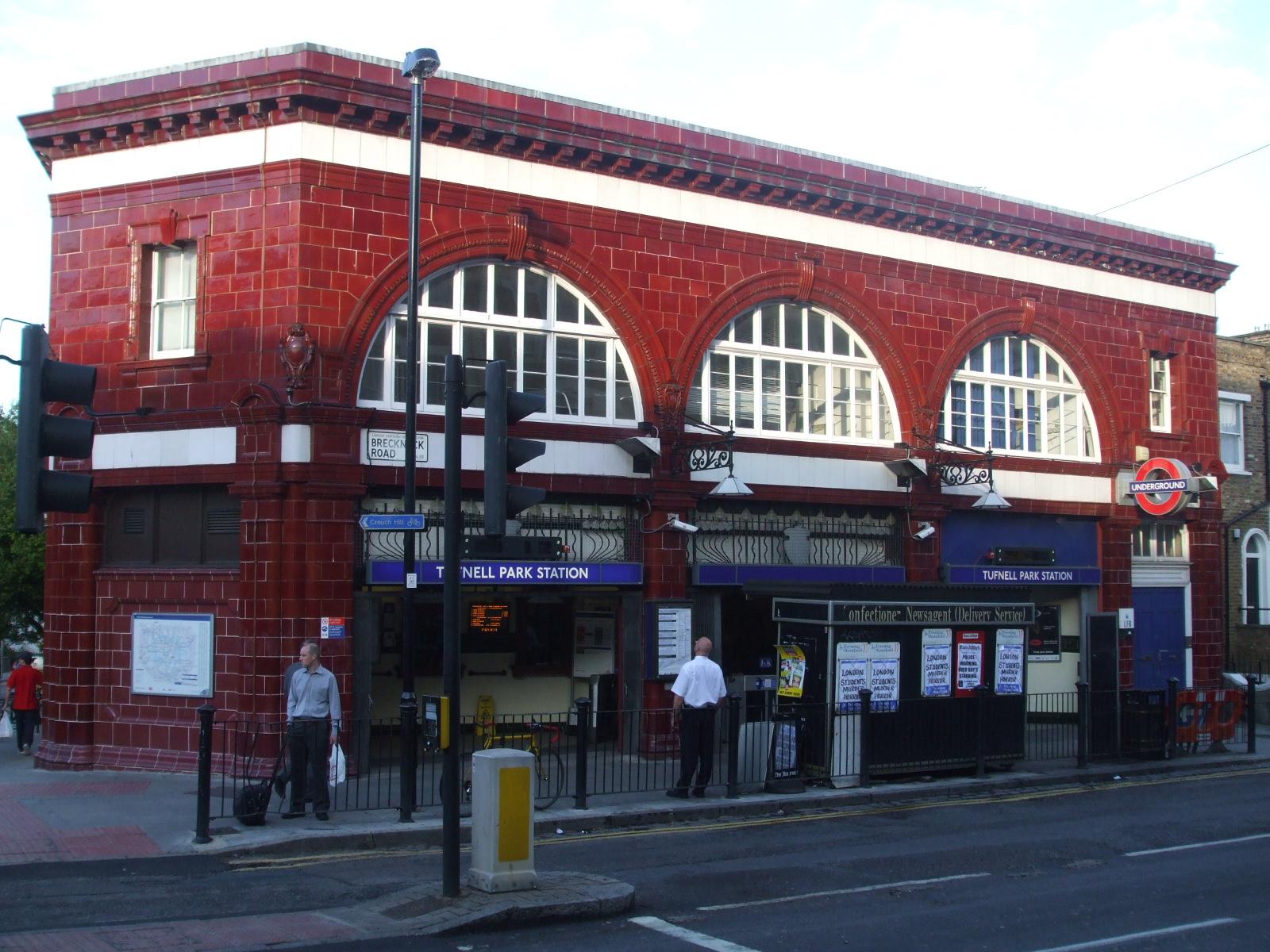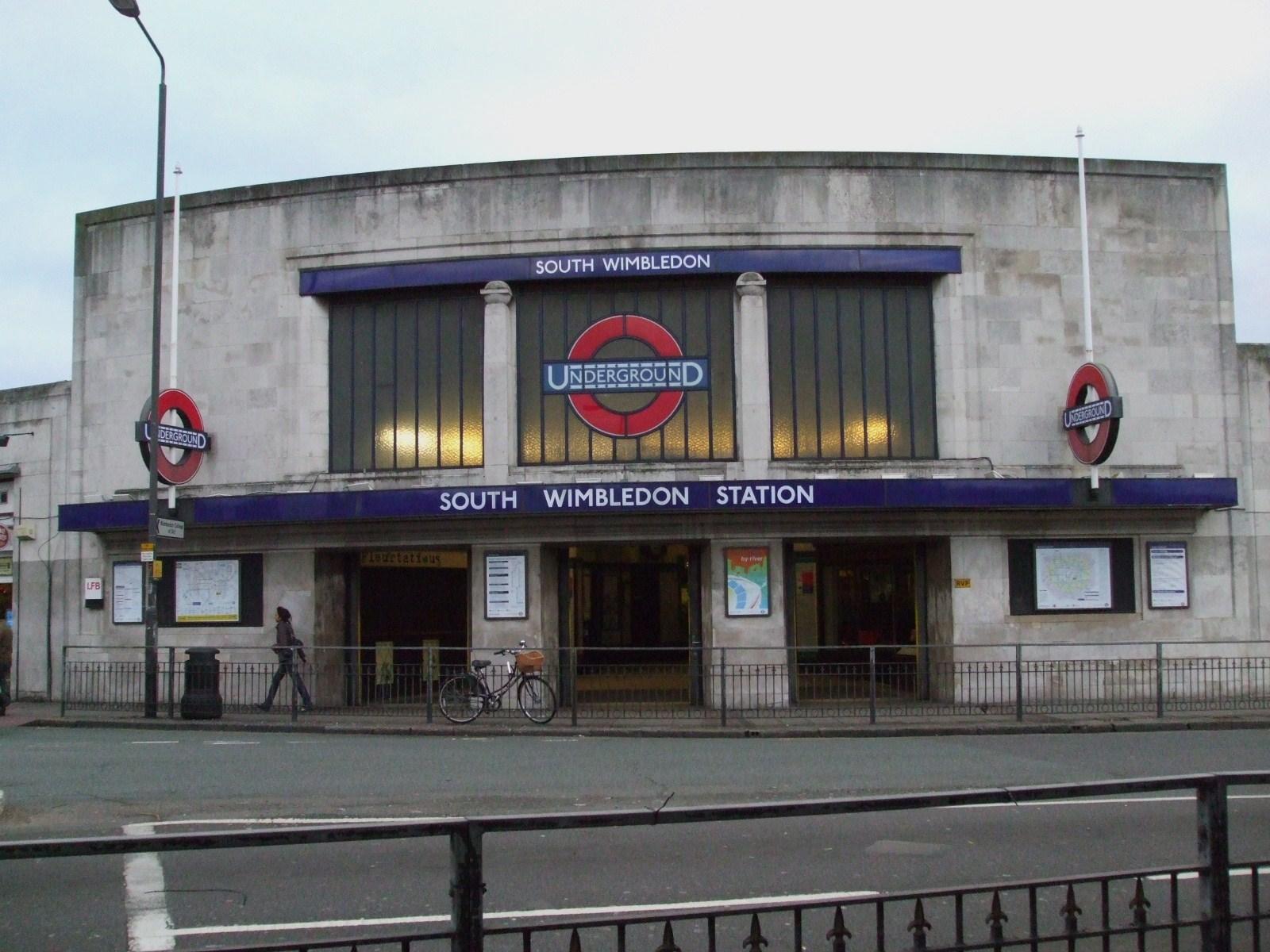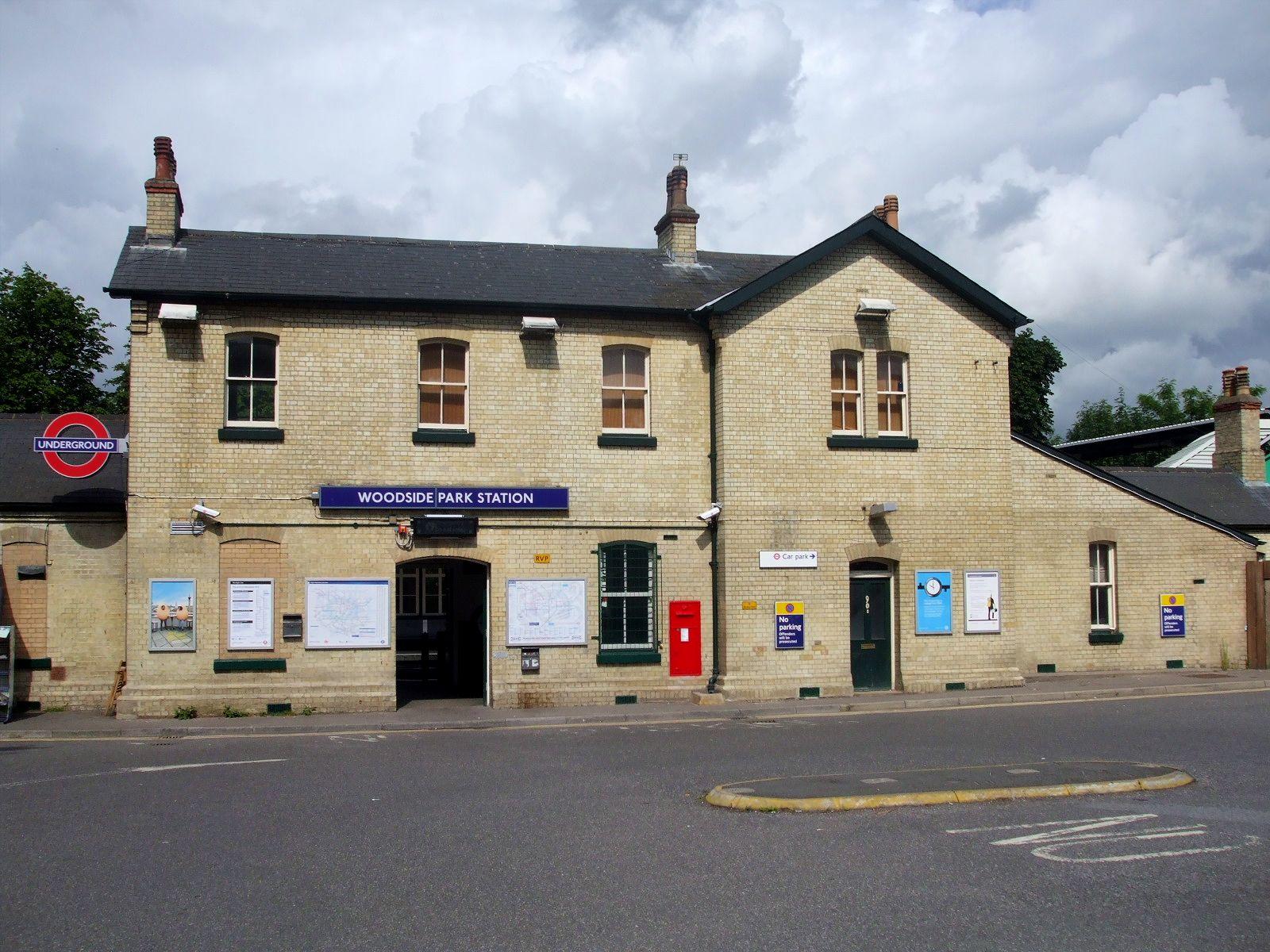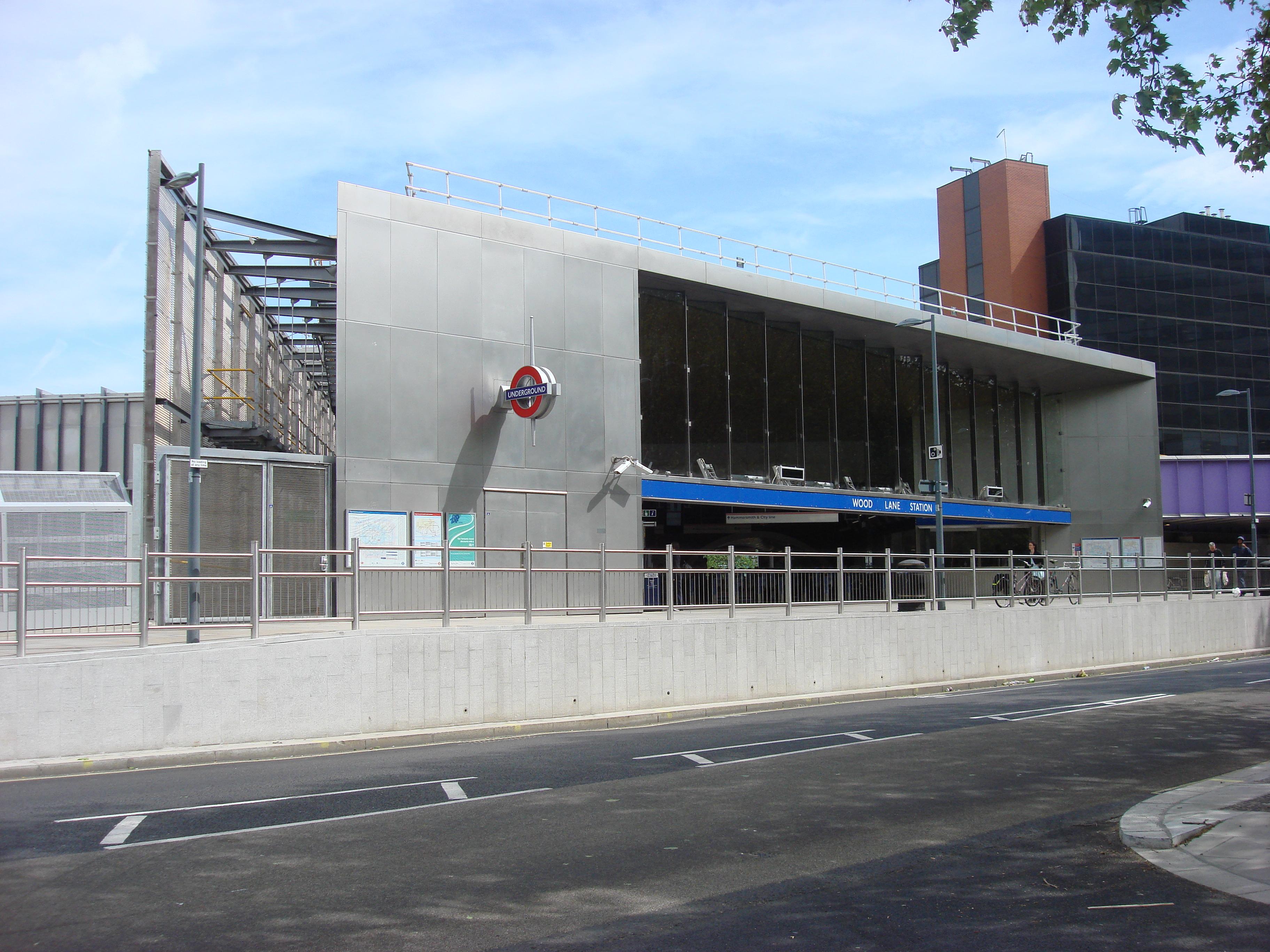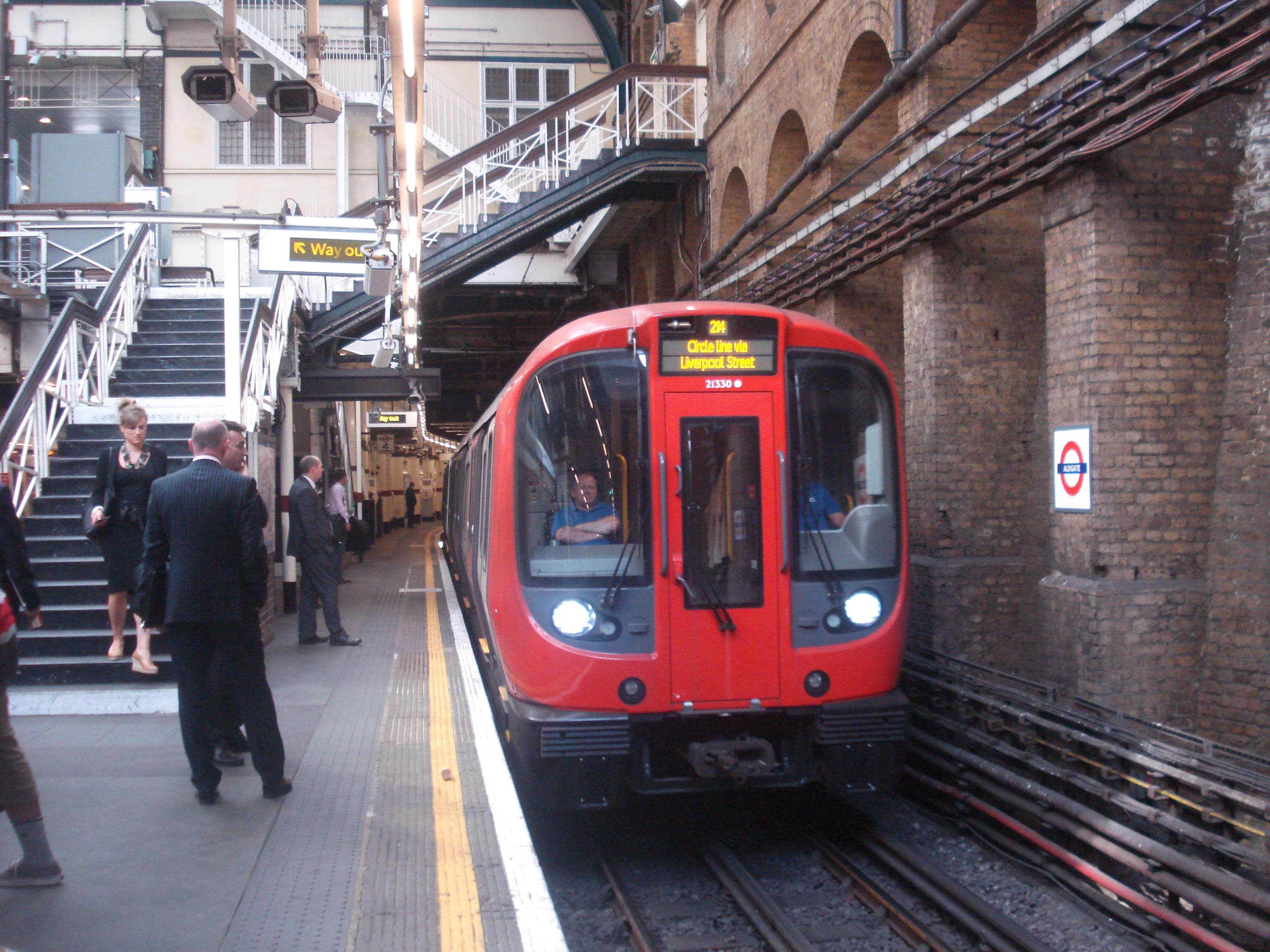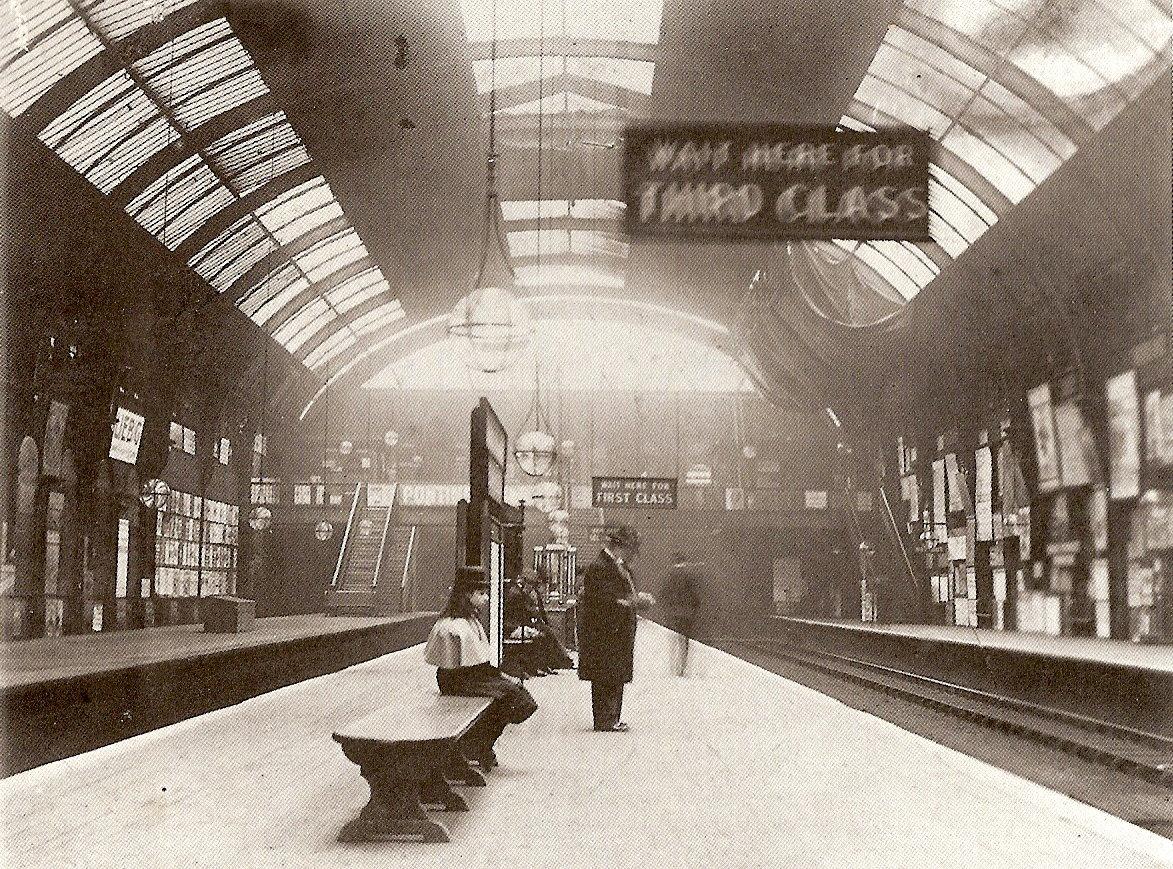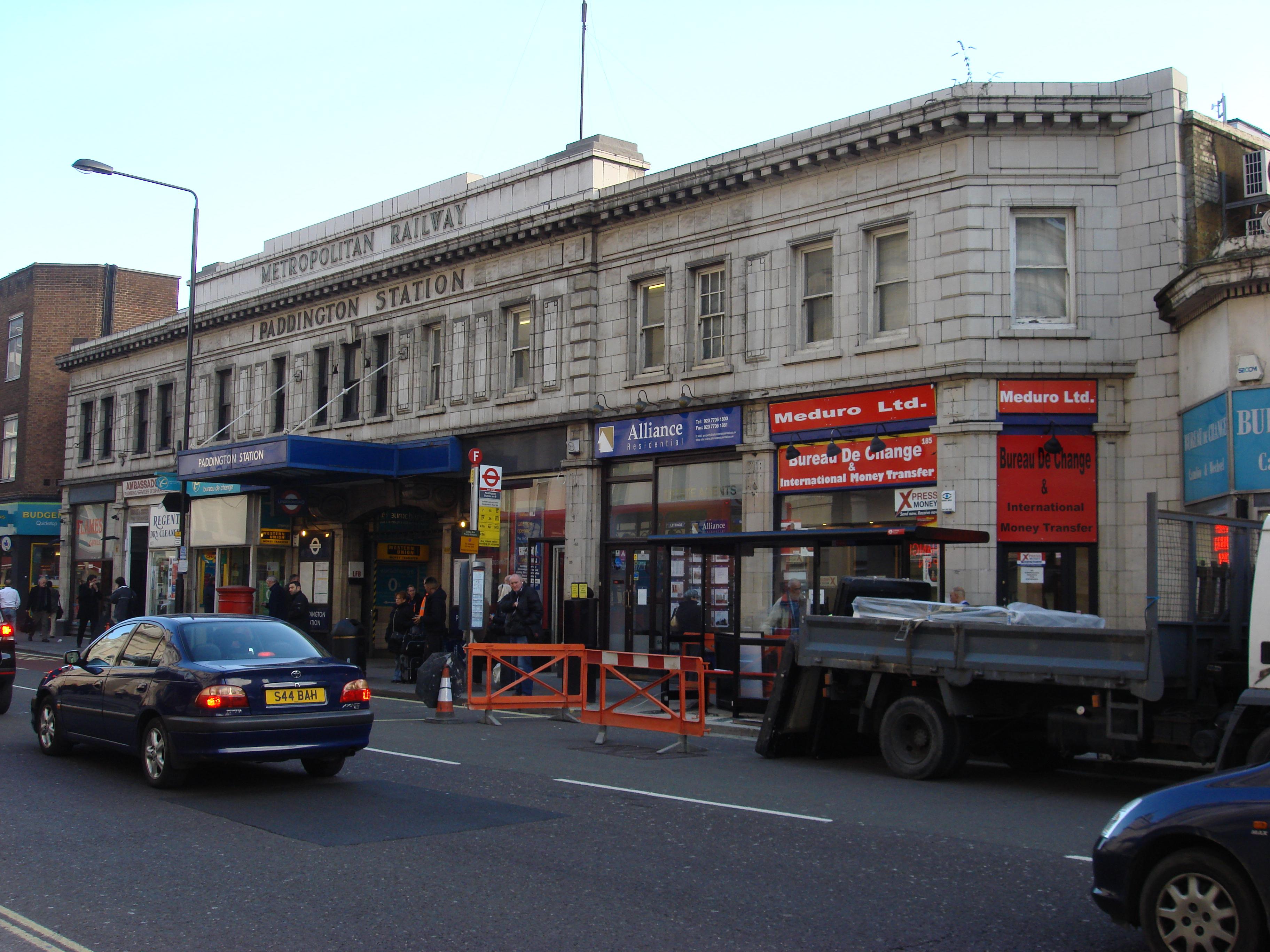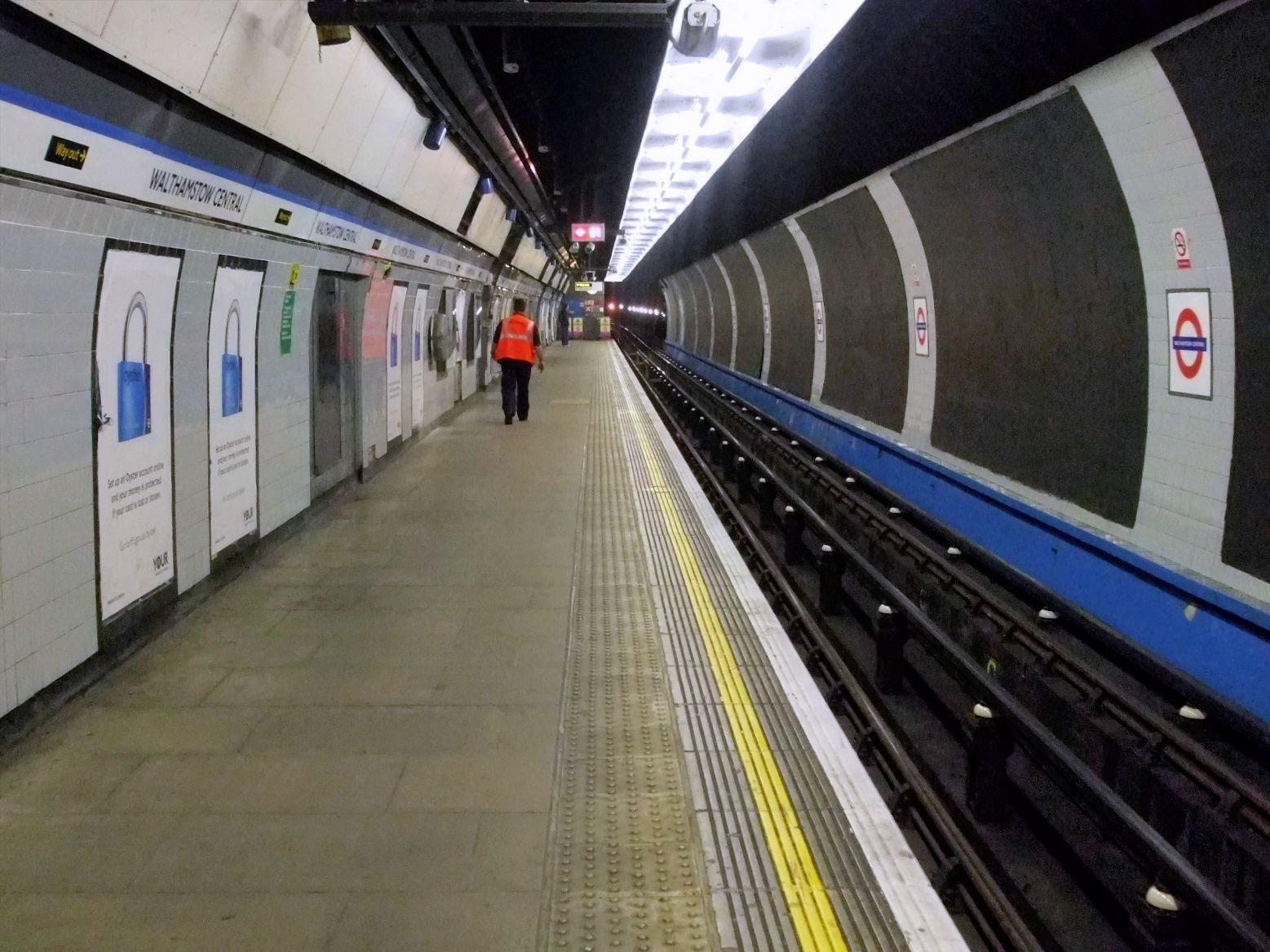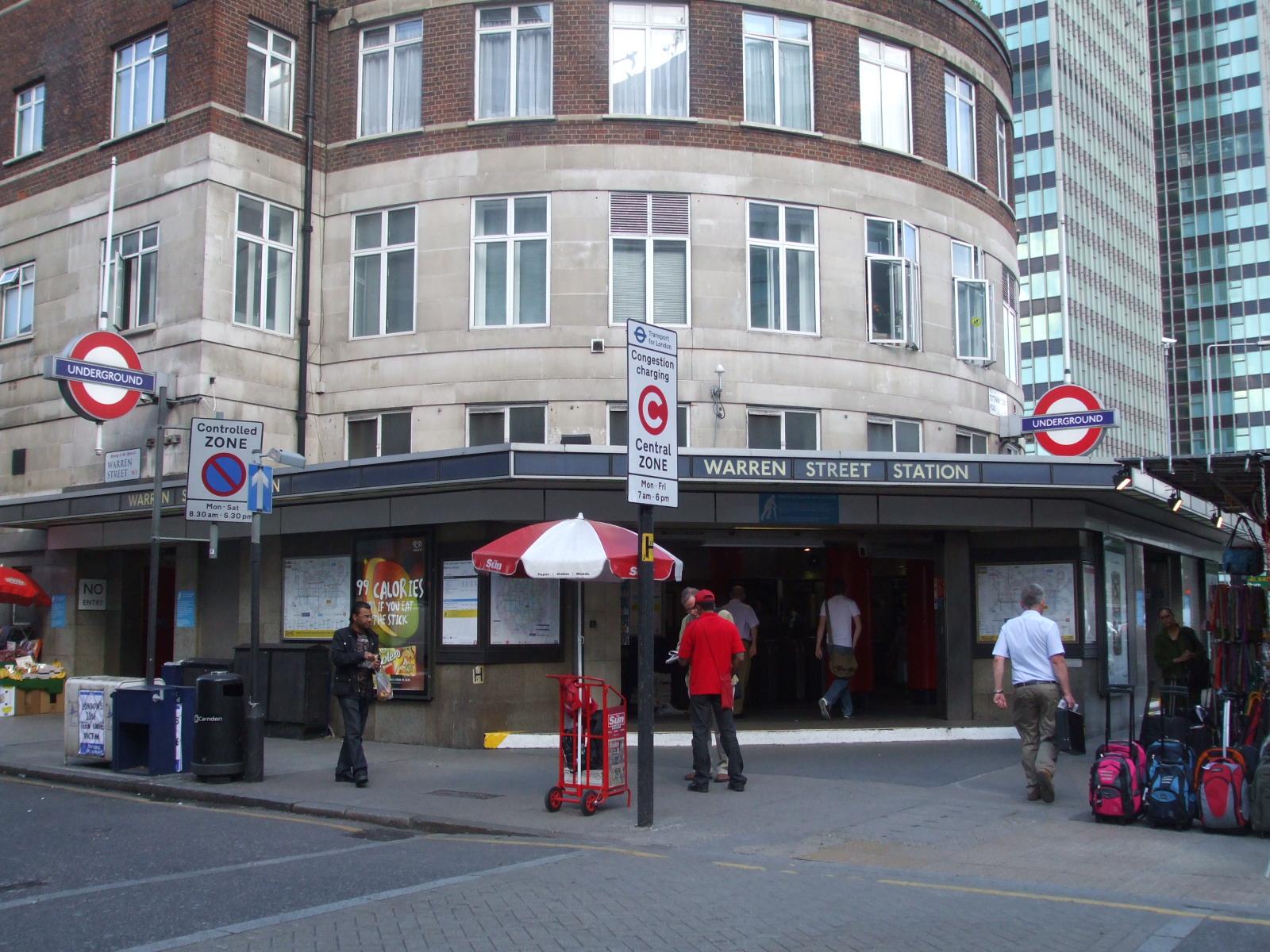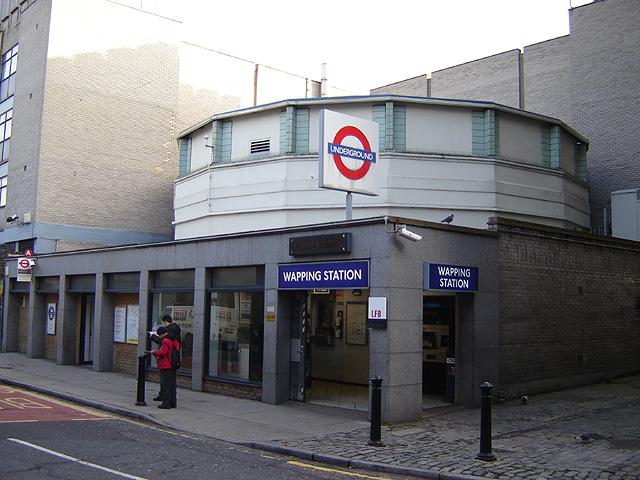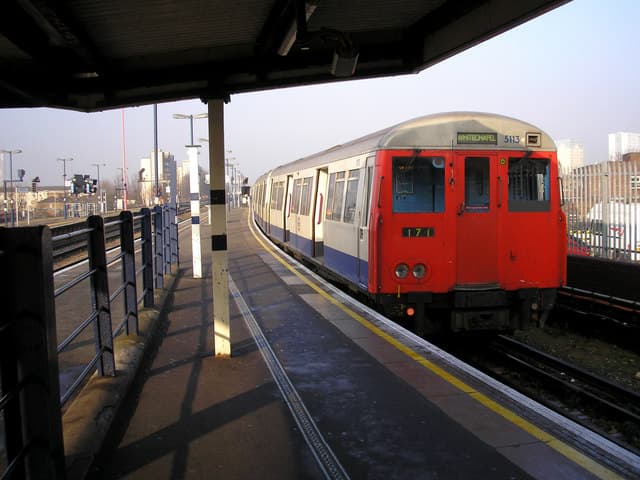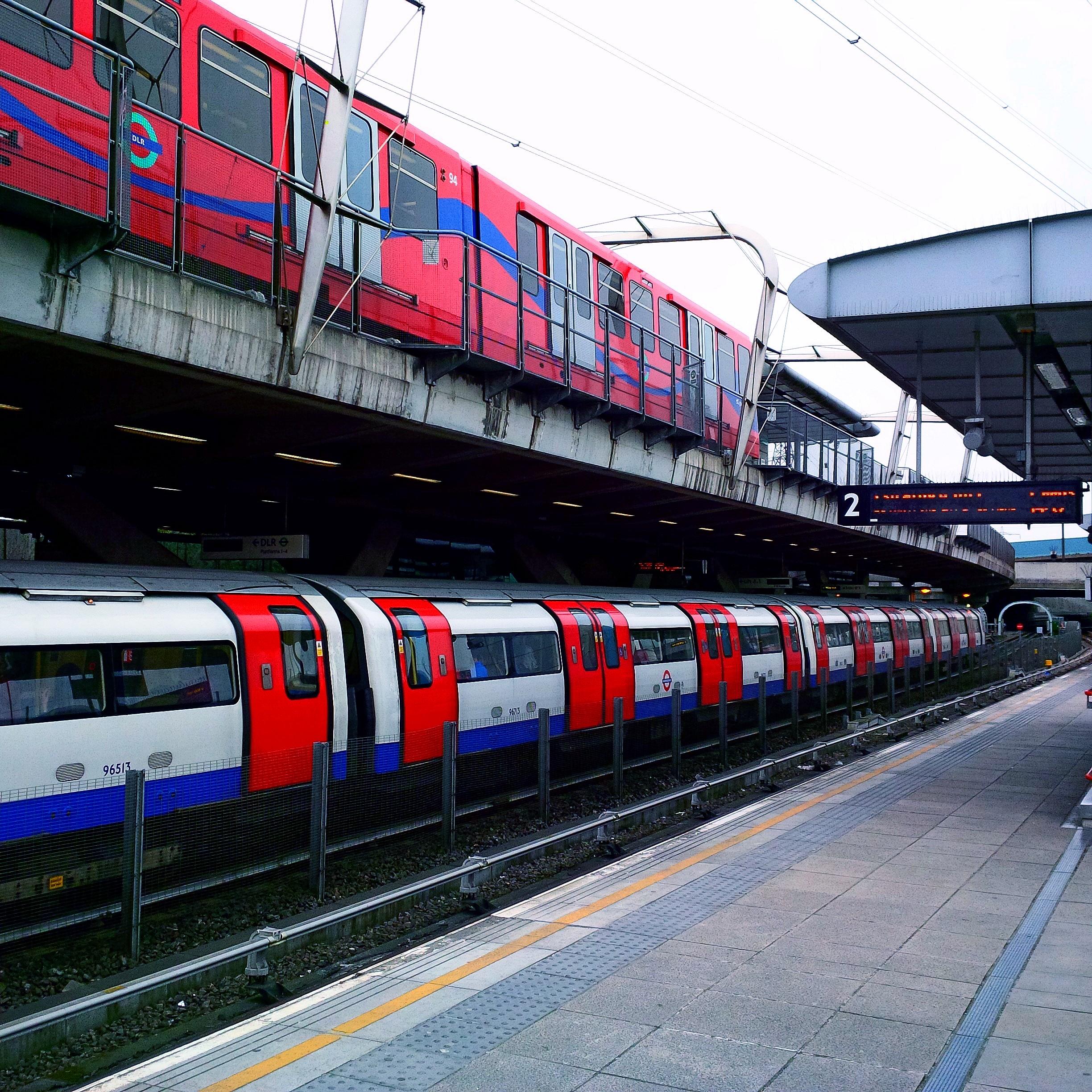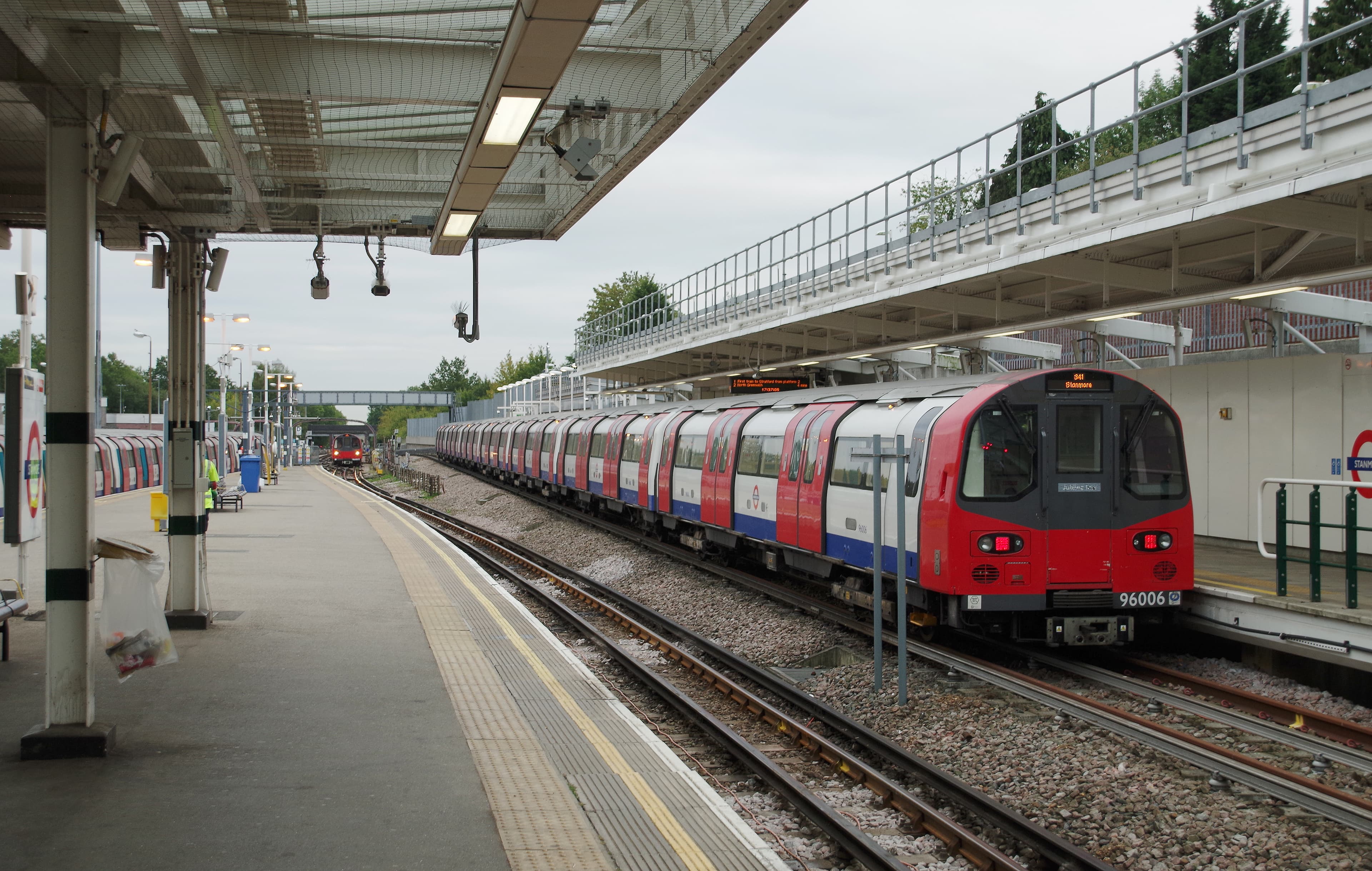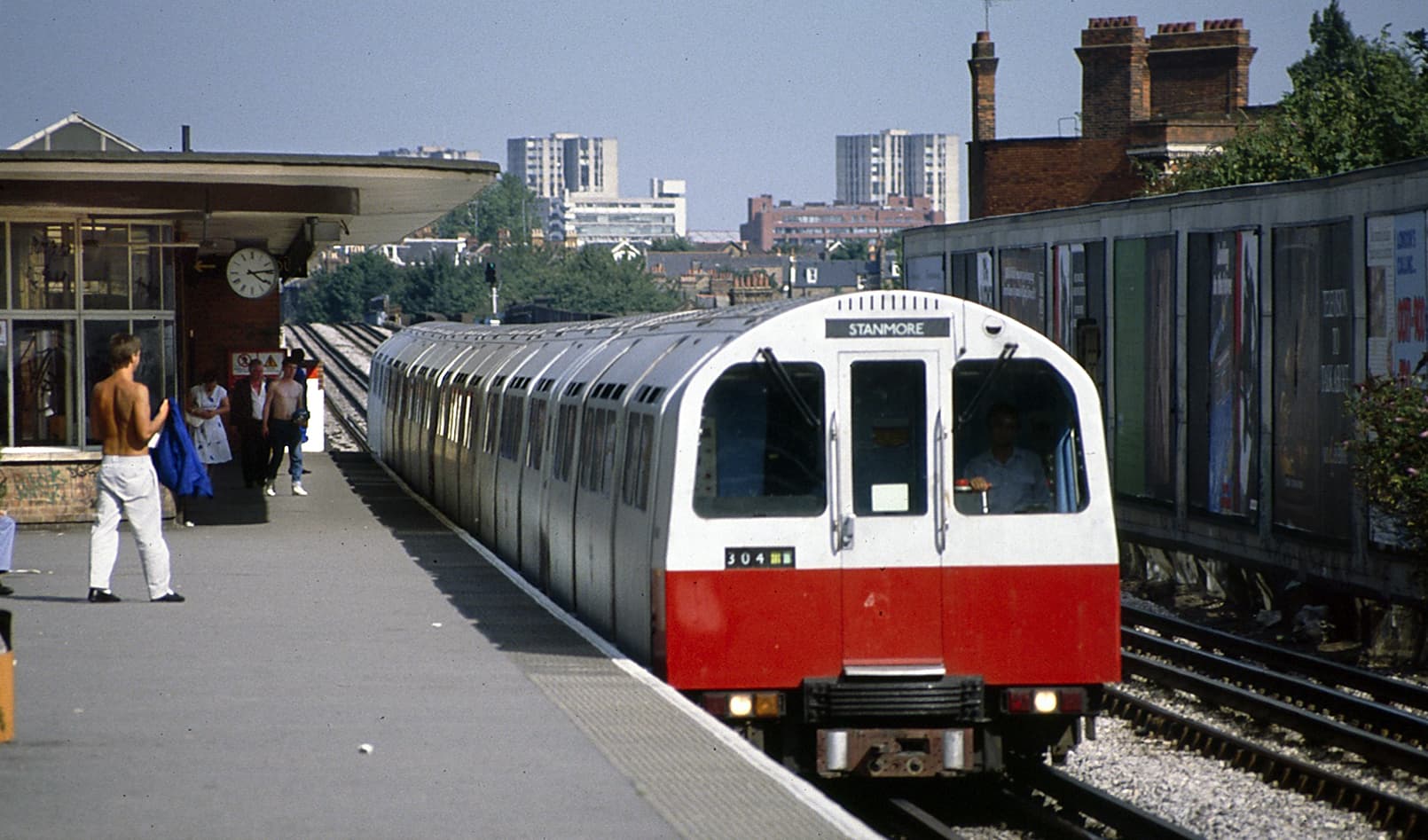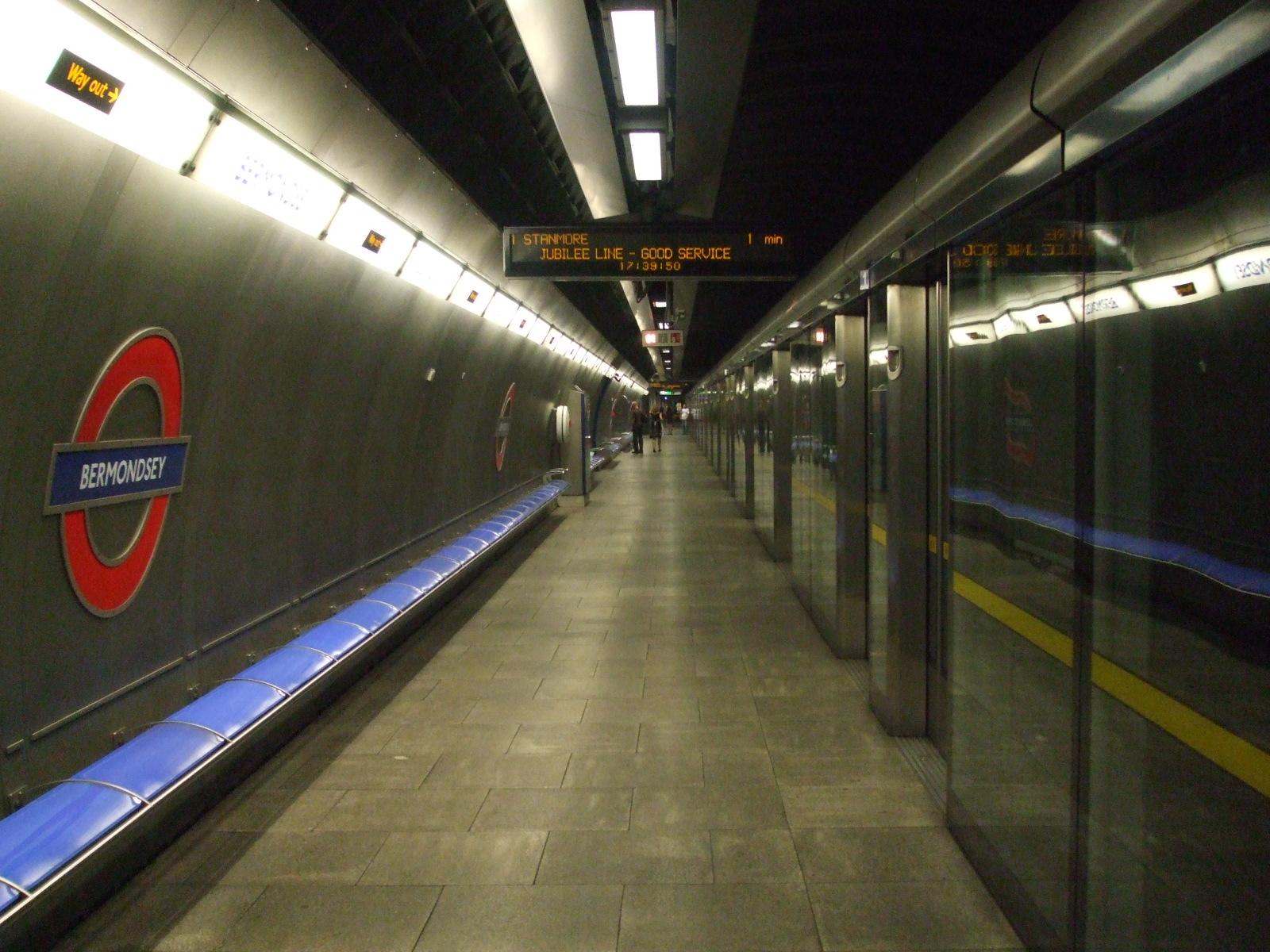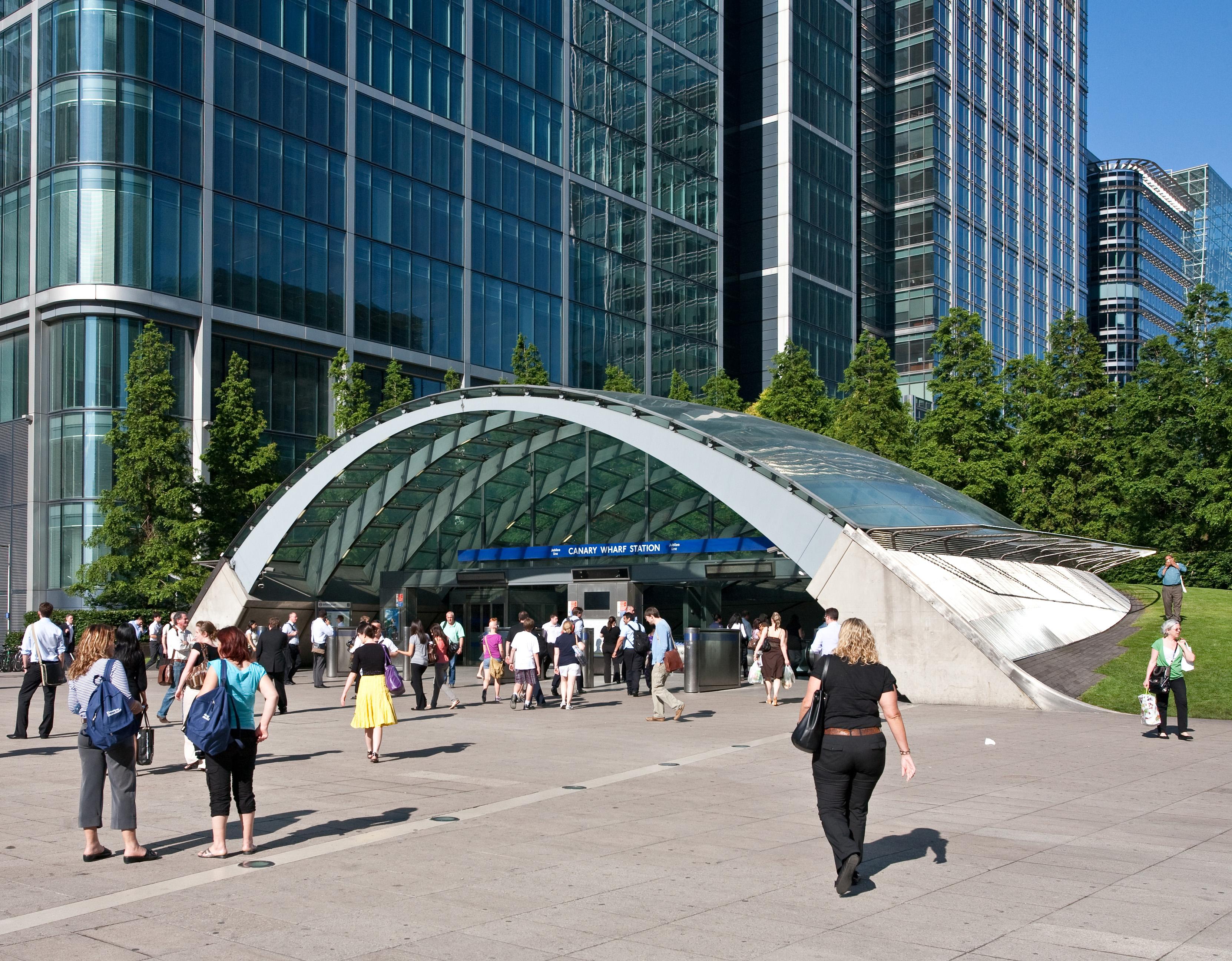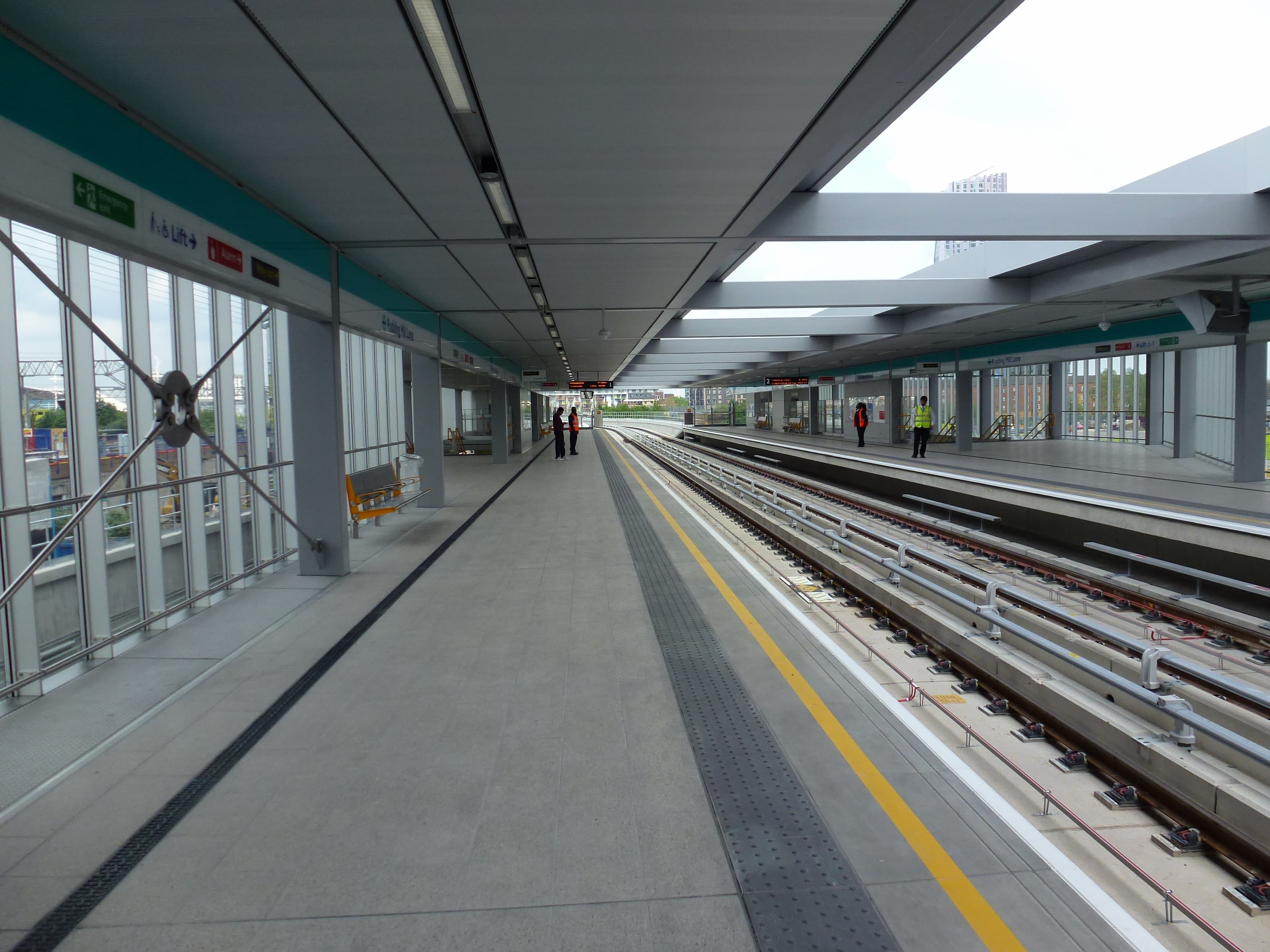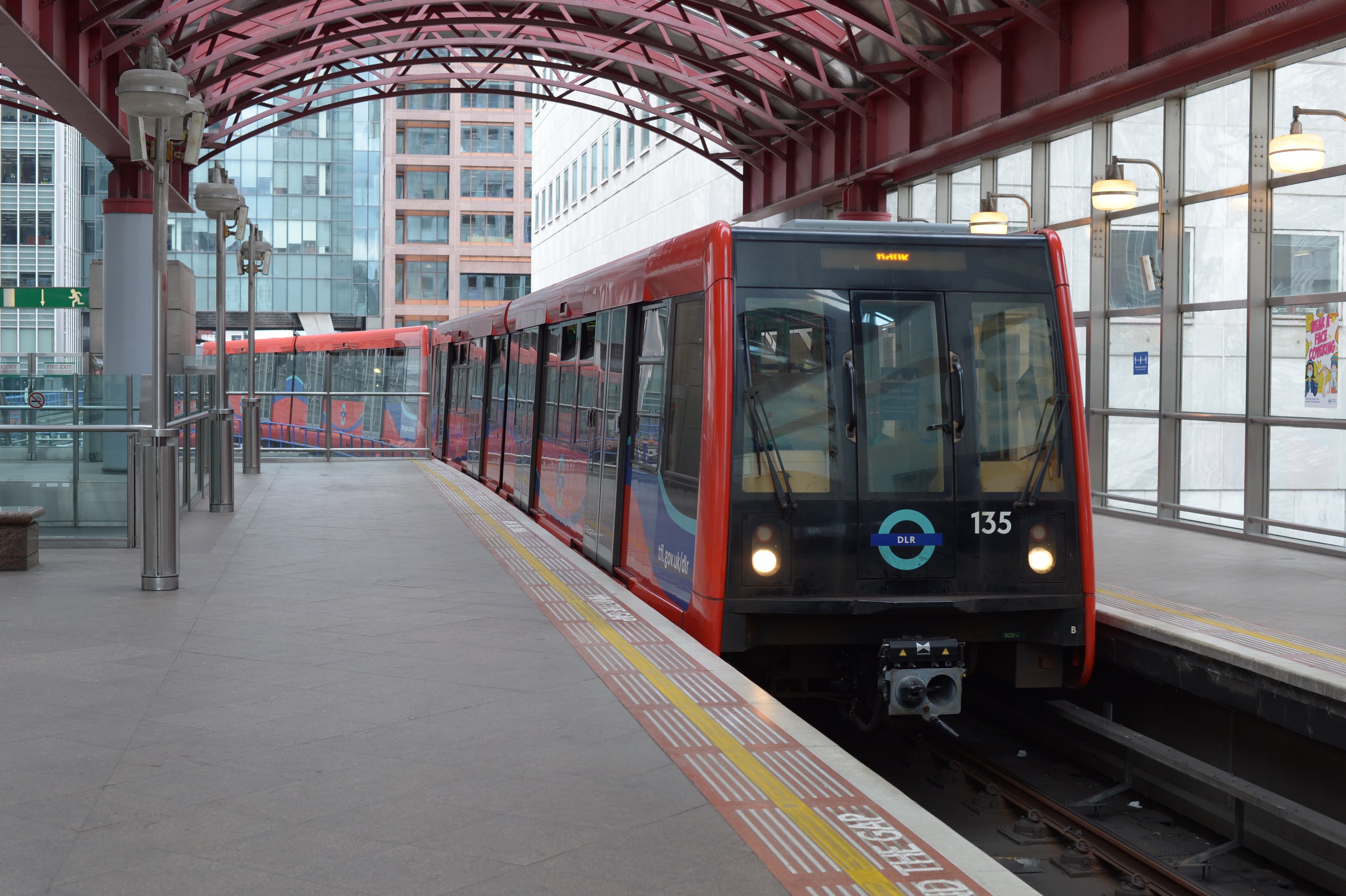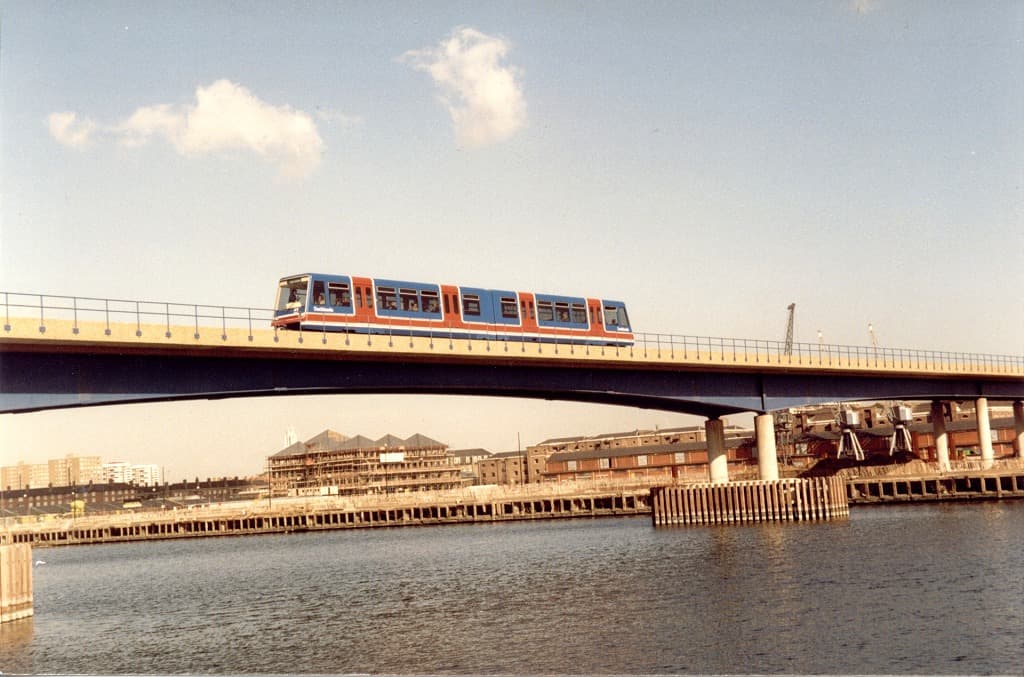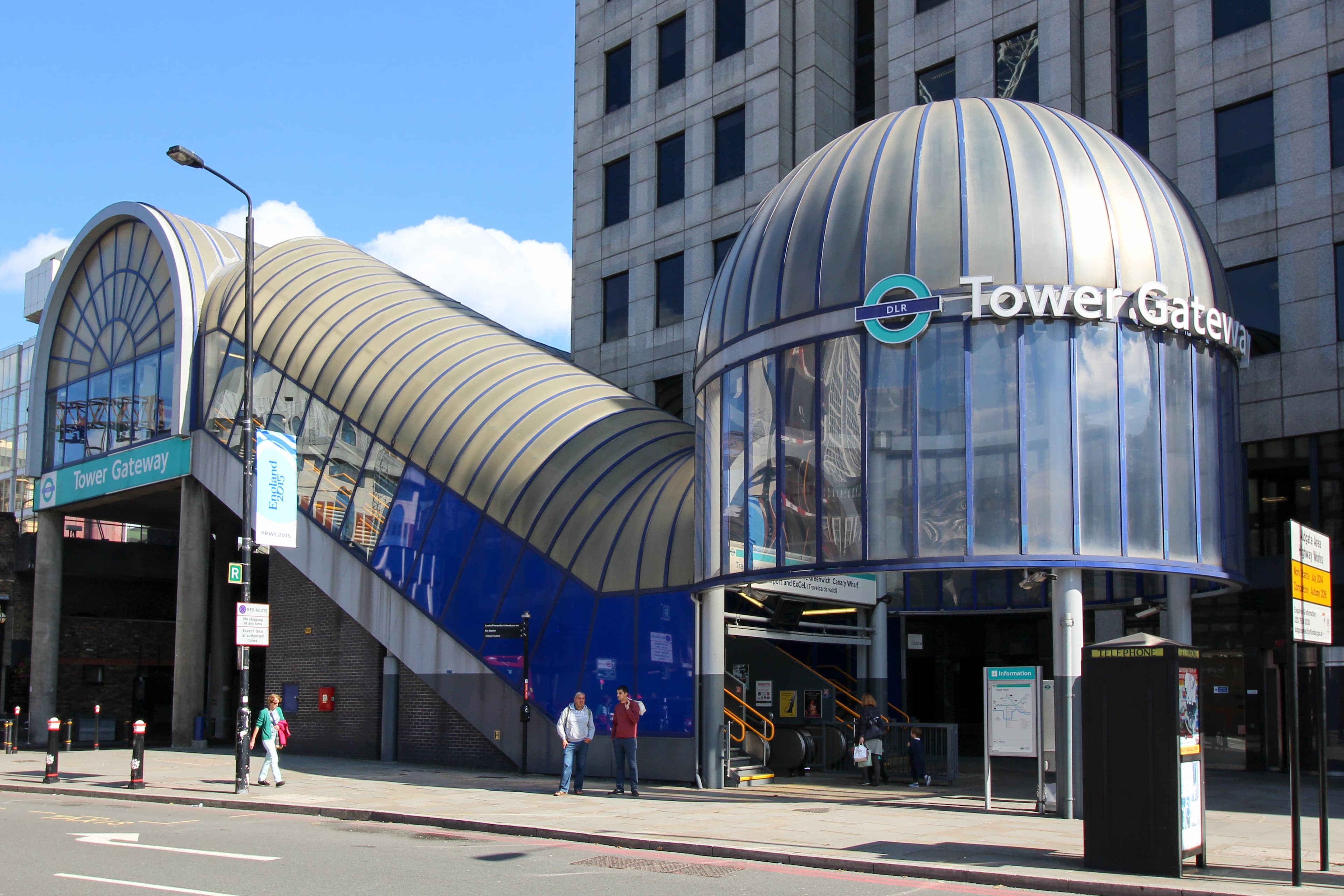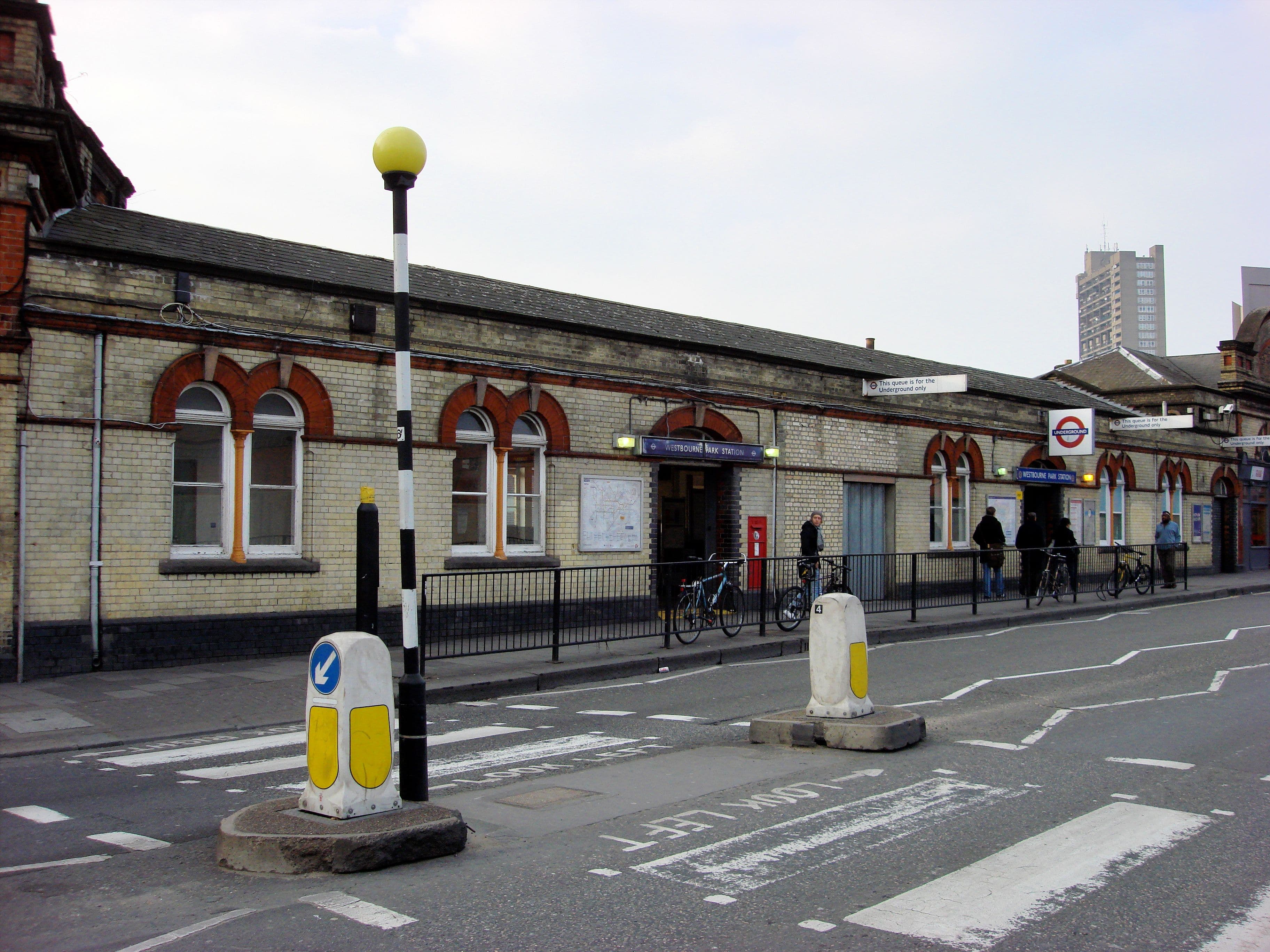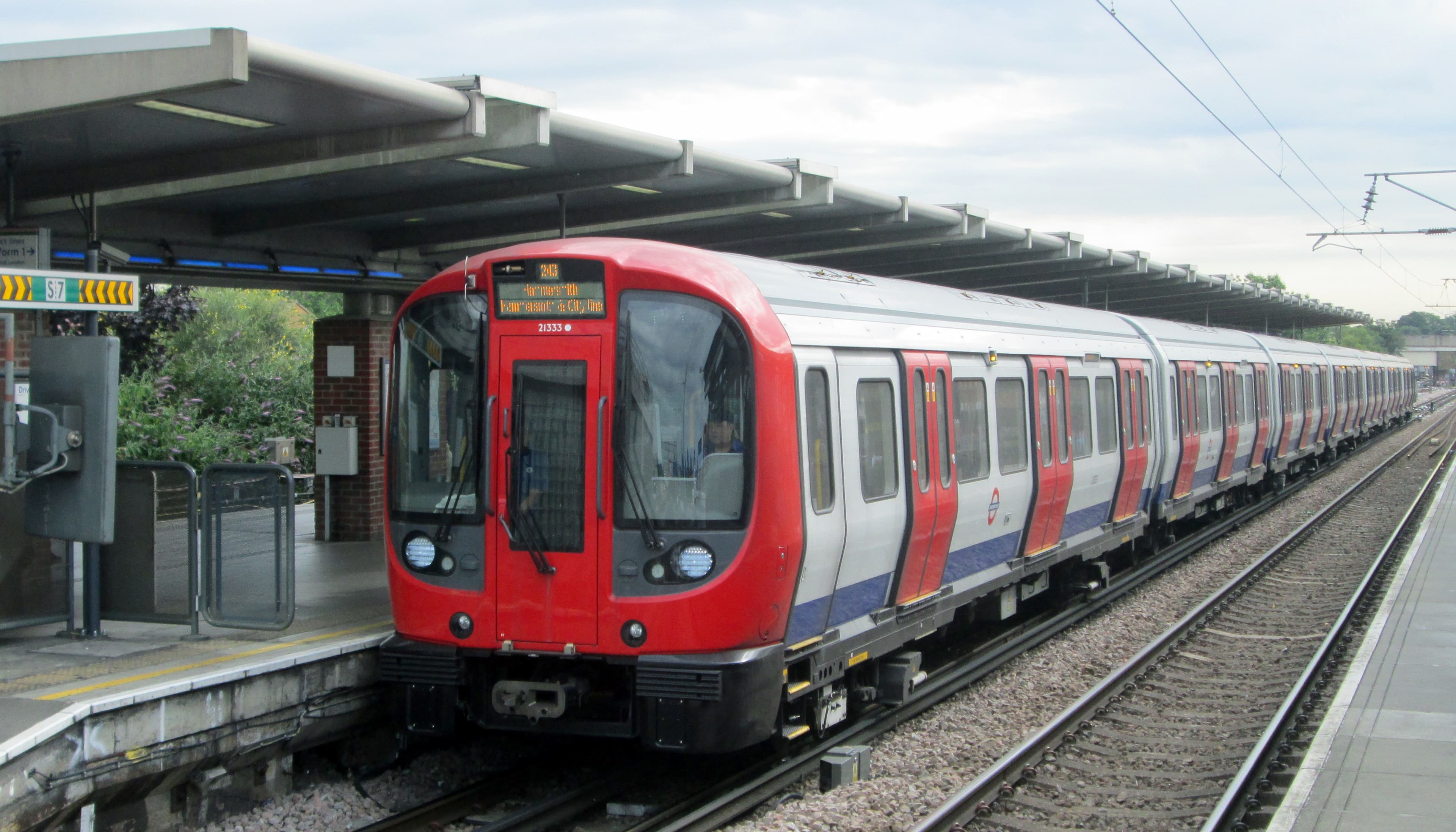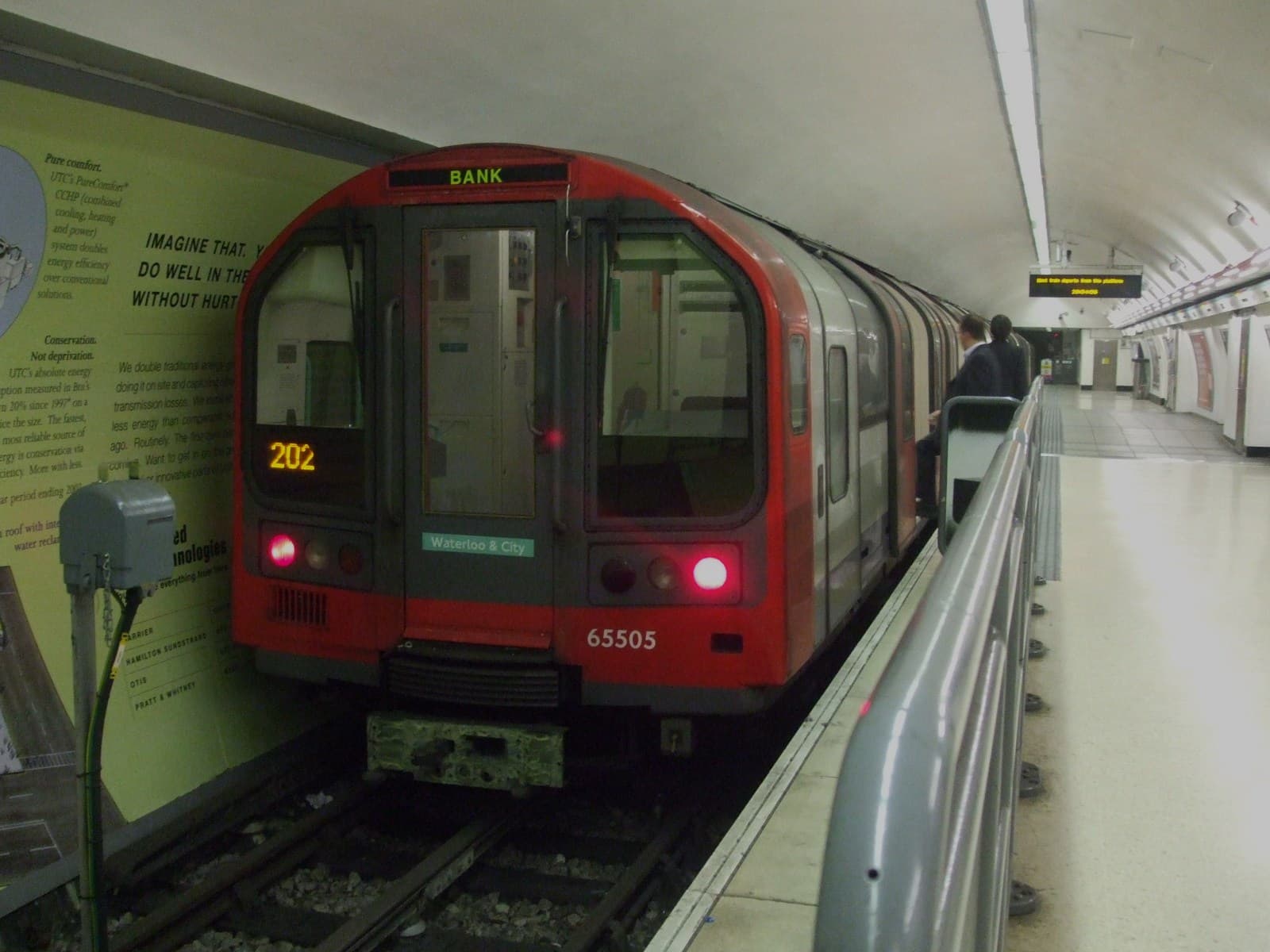London Underground & DLR
Written by James M. Young
Updated 14th November 2023

Background
Location London, United Kingdom
First line opened 1863
Last major update 2021
Open lines 12
Open stations 311
London Underground contains the oldest underground railway in the world.
The first line was opened by the Metropolitan Railway on 9th January 1863 between Paddington (Bishop's Road) and Farringdon Street. The network then rapidly expanded.
The London Underground is now made up of 11 lines. Most of these lines started off as separate companies, which were joined together to form the London Passenger Transport Board on 1st July 1933. Management of the Underground passed to the Greater London Council in 1970, then London Regional Transport in 1984. The network is currently run by Transport for London (since 2000), which also runs the DLR, London Overground and the Elizabeth line.
The network carried 1.026 billion passengers between 2022 and 2023, making it one of the world's busiest metro systems.
The London Underground was the first system to use a schematic tube map, developed by Harry Beck in 1931.
Metropolitan Railway / Metropolitan line
Line colour Purple
Opened 1863
Stations 34
The Metropolitan Railway is the oldest underground line in the world. It is also one of the longest and most complex on the network.
In the middle of the 19th century London was congested. By 1850 London had 7 railway termini but only one of them was actually in the City of London. In order for rail users to get to the City, they would have to use cabs or omnibuses, but these modes of transport were rapidly getting overwhelmed.
Parliament had banned any further railway construction in the central London area in 1846, therefore engineers looked at other options to get people to where they needed to go. The idea of an underground railway had first been suggested in the 1830s. It was not until 1846 that a proper proposal was put forward, which was initially rejected. After many changes to the proposed route, construction of the first section began in March 1860. The first section would run from Paddington (Bishop's Road) to Farringdon Street, linking to Euston and King's Cross along the way. This section took 3 years to build, but finally on 9th January 1863 the line was opened. In the first year the Metropolitan Railway carried over 9.5 million passengers.
After the initial success, plans were put in place to greatly extend the Metropolitan Railway. What started as a short line in central London eventually reached as far as Verney Junction in Buckinghamshire. The next parts of the Metropolitan Railway opened as follows:
- Paddington (Bishop's Road) to Hammersmith opened on 13th June 1864.
- Notting Hill to Addison Road opened on 1st July 1864.
- Farringdon Street to Moorgate Street opened on 23rd December 1865.
- Baker Street to Swiss Cottage opened in April 1868.
- Edgware Road to Brompton (Gloucester Road) opened on 1st October 1868.
- Brompton (Gloucester Road) to South Kensington opened on 24th December 1868.
- Moorgate Street to Bishopsgate opened on 1st February 1875.
- Bishopsgate to Aldgate opened on 18th November 1876.
- Shepherd's Bush to Richmond opened on 1st October 1877.
- Swiss Cottage to Willesden Green opened on 24th November 1879.
- Willesden Green to Harrow opened on 2nd August 1880.
- Aldgate to Tower of London opened in 1882.
- Bishopsgate to New Cross opened on 1st October 1884.
- Harrow to Pinner opened in 1885.
- Pinner to Rickmansworth opened on 1st September 1887.
- Rickmansworth to Chesham opened on 8th July 1889.
- Aylesbury to Verney Junction opened on 1st July 1891.
- Chalfont Road to Aylesbury opened on 1st September 1892.
- Harrow-on-the-Hill to Uxbridge opened on 30th June 1904.
- St. Mary's to New Cross closed in 1906.
- St. Mary's to Whitechapel opened in 1906.
- Shepherd's Bush to Richmond closed on 31st December 1906.
- St. Mary's to Whitechapel closed on 31st March 1913.
- St. Mary's to New Cross (served by the SER) reopened on 31st March 1913.
- Surrey Docks to New Cross (served by the LB&SCR) opened on 31st March 1913.
- Shadwell to Shoreditch opened on 31st March 1913.
- Moorgate Street to Finsbury Park opened in 1913.
- Moor Park & Sandy Lodge to Watford opened in 1925.
- Rickmansworth to Croxley Green opened in 1925.
- Wembley Park to Stanmore opened in 9th December 1932.
On 1st July 1933 the Metropolitan Railway was amalgamated with other underground railway companies to form the London Passenger Transport Board. At this time the line was renamed to the Metropolitan line.
In the remainder of the 1930's the following changes were made to the Metropolitan line:
- Rickmansworth to Croxley Green closed in 1933.
- Aylesbury to Verney Junction closed in 1936.
- St. Mary's to Barking opened in 1936, sharing tracks with the District line.
- Moorgate to Finsbury park was transferred to the Edgware, Highgate and Morden line in 1939 in preparation for the Northern Heights plan.
In the 1930's the line was becoming very congested between Baker Street and Wembley Park. Therefore, it was decided the Bakerloo line would take over the line between Baker Street and Stanmore, with their own separate tracks. The Metropolitan line would still maintain connections with the Bakerloo line at Baker Street, Finchley Road and Wembley Park. The line was transferred on 29th November 1939.
In the 1940's the following changes were made to the Metropolitan line:
- Latimer Road to Addison Road closed in 1940.
- Aldgate East to Shadwell closed in 1941.
- Rickmansworth to Croxley Green reopened in 1941.
- Aylesbury to Quainton Road reopened in 1943.
- Aylesbury to Quainton Road closed in 1948.
In 1949 the Circle line was created as a separate line, meaning the Metropolitan line no longer served stations between Edgware Road and Aldgate via Victoria.
In 1960 the Rickmansworth to Croxley link was again closed. The line was also closed between Amersham and Aylesbury in 1961 after the rest of the Amersham branch had been electrified. The route between Amersham and Aylesbury is still served by mainline trains but the track is not electrified.
The track was also doubled between Harrow-on-the-Hill and Moor Park in the 1960's to allow fast services to connect from Moor Park to Harrow-on-the-Hill, Finchley Road and Baker Street. The Metropolitan line is incidentally the only line on the network to still offer different types of services. There are trains that call at all Metropolitan line stations, trains that are semi-fast (missing out Wembley Park (most of the time), Preston Road and Northwick Park stations) and trains that are fast (missing out stations between Harrow-on-the-Hill and Moor Park).
In 1970 the East London section of the Metropolitan line, already run at its own line, was transferred to the Metropolitan line (East London section).
The final change to the line was the separation of the Hammersmith & City line on 30th July 1990 to be its own line.
All central parts of the line were constructed using the cut-and-cover technique, a technique that would be used for all tunnels until the City & South London Railway's deep tube line was constructed.
Trains were initially powered by steam. However, stream was not great in the tunnels in central London, so in the early 1900s the Metropolitan Railway decided to start converting over to electric powered trains. Trains are powered by a third rail, the same system used on all trains on the London Underground. On 1st January 1905, the first electric train ran between Baker Street and Harrow-on-the-Hill. On 1st July 1905, both the Metropolitan and District Railways introduced electric trains on the inner circle. The rest of the network was gradually made electric, although it took until the 1960s for the last part between Rickmansworth and Amersham to be electrified.
The Metropolitan Railway initially used broad-gauge Great Western Railway Metropolitan Class condensing 2-4-0 tank locomotives. These were quickly replaced by standard-gauge 4-4-0 tank locomotives. By 1870 40 were in operation. More were ordered over the next 30 years until electrification started. In 1906, the first electric locomotives entered service, which hauled the same carriages as the stream locomotives they replaced. The first electric multiple units (each carriage having a motor) entered service on 1st January 1905 from Baker Street to Uxbridge. These trains were replaced by O Stock trains in the 1930s and T Stock trains in the 1950s. A Stock trains started on the line in 1963 for the route between Aldgate, Baker Street, Harrow-on-the-Hill and beyond. C Stock trains were used on the rest of the line, starting on 28th September 1970. A Stock trains ran on the Metropolitan Line until 26th September 2012, when they were fully replaced by S8 Stock trains (the first having entered service on 31st July 2010).
The Moorgate to Finsbury Park line used electric locomotives pulling 6 car trains.
Gallery
District Railway / District line
Line colour Dark green
Opened 1868
Stations 59
After the success of the Metropolitan Railway, many plans were put forward for extra routes through Central London. It was decided that an inner circle would be the best option to choose, connecting the main line stations just north of the river including Victoria, Charing Cross and Blackfriars. The District Railway was formed in 1864. The first part of the network opened on 24th December 1868 between South Kensington and Westminster Bridge. The network then rapidly expanded as follows:
- Brompton (Gloucester Road) to West Brompton opened on 12th April 1869.
- South Kensington to Brompton (Gloucester Road) opened in the summer of 1869.
- West Brompton to High Street Kensington opened in the summer of 1869.
- Westminster Bridge to Blackfriars opened on 30th May 1870.
- Blackfriars to Mansion House opened on 3rd July 1871.
- Earl's Court to Hammersmith opened on 9th September 1874.
- Hammersmith to Richmond opened on 1st June 1877.
- Turnham Green to Ealing Broadway opened on 1st July 1879.
- West Brompton to Putney Bridge & Fulham opened on 1st March 1880.
- Mill Hill Park to Hounslow Town opened on 1st May 1883.
- Osterley & Spring Grove to Hounslow Barracks opened in 1884.
- Mansion House to Whitechapel (Mile End) opened on 6th October 1884.
- High Street Kensington to Mark Lane opened on 6th October 1884.
- St. Mary's to New Cross opened on 6th October 1884.
- Shadwell to Shoreditch opened on 6th October 1884.
- Osterley & Spring Grove to Hounslow Town closed in 1886.
- Putney Bridge & Fulham to Wimbledon & Merton opened on 3rd June 1889.
- Whitechapel to Upminster opened on 2nd June 1902.
- Osterley & Spring Grove to Hounslow Barracks reopened in 1903.
- Ealing Common & West Acton to South Harrow opened on 28th June 1903.
- Osterley & Spring Grove to Hounslow Barracks closed in 1905.
- East Ham to Upminster closed in 1905.
- St. Mary's to New Cross closed in 1905.
- Shadwell to Shoreditch closed in 1905.
- Mill Hill Park to South Acton opened on 13th June 1905.
- East Ham to Barking reopened on 1st April 1908.
- South Harrow to Uxbridge opened on 1st March 1910.
- Ealing Common to South Harrow closed on 4th July 1932.
- Barking to Upminster reopened on 12th September 1932.
On 1st July 1933 the District Railway was amalgamated with other underground railway companies to form the London Passenger Transport Board. At this time the line was renamed to the District line.
After the District line was created, only a few more changes have been made. South Harrow to Uxbridge was closed on 23rd October 1933. This was taken over by the Piccadilly line, which already ran trains between Ealing Common and South Harrow. Earl's Court to Kensington (Olympia) opened in 1946. Gloucester Road to High Street Kensington closed in 1949, taken over by the Circle line. Acton Town to South Acton was closed on 28th February 1959 as it was a little used shuttle service. Finally, Acton Town to Hounslow West was closed on 9th October 1964. This route was already served by the Piccadilly line.
All central parts of the line were constructed using the cut-and-cover technique, using the same engineers as the Metropolitan Railway.
As with the Metropolitan Railway, the line initially used steam. In the early 1900s the District Railway started converting its lines to be electric. On 1st July 1905, both the Metropolitan and District Railways introduced electric trains on the inner circle. The rest of the network was gradually made electric, with the last part being converted between Barking and Upminster in 1932.
The District Railway used similar 4-4-0 tank locomotives that the Metropolitan Railway used. By 1905 54 were in operation. In 1905, the first electric locomotives entered service, which hauled the same carriages as the stream locomotives they replaced. The first electric multiple units (each carriage having a motor) entered service in August 1903, initially tested from Ealing Common to South Harrow. Since then the District Railway has had many trains, from B Stock (1904), C, D & E Stock (1910), F Stock (1920), G Stock (1923), K Stock (1926) and L, M & N Stock (1931). Most of these trains remained in service (most being refurbished during their lifetime) until C77 and D78 Stock trains were introduced. C77 Stock trains were introduced in 1978 for the Edgware Road to Wimbledon line. D78 Stock trains started to be introduced on 28th January 1980, which ran on the rest of the District line. C77 and D78 Stock trains ran on the District Line until 21st April 2017, when they were fully replaced by S7 Stock trains (the first having entered service on 2nd September 2013).
Gallery
City & South London Railway
Line colour Mint
Opened 1890
Transferred to Edgware, Highgate & Morden line 1923
Stations 12
The City & South London Railway was the first deep-level underground railway in the world. It was also the first major railway to use electric traction.
The Metropolitan and District Railways were a great success, however they did cause a lot of problems during construction. The cut-and-cover method meant having to close major roads, demolish buildings and caused huge disruption. What was needed was a less invasive way to build an underground railway.
The City & South London Railway tried a new tunnelling method. They proposed using the tunnelling shield/segmented cast iron tube method. In 1883, they put forward a proposal to build the line from Stockwell to the City. This was accepted and construction started soon after.
The first part of the line opened between Stockwell and King William Street on 18th December 1890. The terminus at King William Street was not ideal, so it was closed and a new extension from Borough to Moorgate Street was opened on 26th February 1900. An extension from Stockwell to Clapham Common was also opened on 3rd June 1900.
The line was further extended north, opening from Moorgate Street to Angel on 17th November 1901. Then from Angel to Euston on 12th May 1907.
Further extensions were planned, however due to the other competing rail companies in Central London, The City & South London Railway did not have enough finances to extend any further. To aid both The City & South London Railway and the London Electric Railway (Hampstead line), they were combined into a single line in 1923 and named the Edgware, Highgate & Morden line.
In preparation for the combining of these 2 lines, the tunnels on the City & South London railway were enlarged, as they had been bored at a smaller diameter compared to the other underground lines. This work was done between 1922 and 1924.
The line used electric locomotives pulling 4, 5 and 6 car trains.
Gallery
Central London Railway / Central line
Line colour Red
Opened 1900
Stations 49
The Central London Railway was the first underground line to run through Central London linking Notting Hill to Oxford Street and onwards to Bank.
The first part opened on 30th July 1900 between Shepherd's Bush and Bank. This was extended from Shepherd's Bush to Wood Lane on 14th May 1908. The line was extended from Bank to Liverpool Street on 28th July 1912. A further extension opened from Wood Lane to Ealing Broadway on 3rd August 1920.
On 1st July 1933 the Central London Railway was amalgamated with other underground railway companies to form the London Passenger Transport Board. At this time the line was renamed to the Central line.
After the Central London Railway was amalgamated, an ambitious plan was created to extend the Central line into the suburbs of London:
- Liverpool Street to Stratford opened on 4th December 1946.
- Stratford to Leytonstone opened on 5th May 1947.
- North Acton to Greenford opened on 30th June 1947.
- Leytonstone to Woodford opened on 14th December 1947.
- Leytonstone to Newbury Park opened on 14th December 1947.
- Newbury Park to Woodword opened on 31st May 1948.
- Woodword to Loughton opened on 21st November 1948.
- Greenford to West Ruislip (for Ickenham) opened on 21st November 1948.
- Loughton to Ongar opened on 25th September 1949.
Most of the lines already existed. The parts in East London from Stratford belonged to the Great Eastern Railway, except for new tunnels between Leytonstone and Newbury Park. The part in West London belonged to the Great Western Railway, although the Central line laid parallel tracks between North Acton and West Ruislip (for Ickenham).
The line between Epping and Ongar was little used, so on 30th September 1994 it closed.
The line initially used electric locomotives pulling 6 car trains. Standard Stock was next introduced on the line, replacing all electric locomotives by 1939. These were used until 1963. Standard Stock were slowly replaced by 1938 Stock trains, starting in the 1940s. The Epping to Ongar line was not electrified until 1957, so before this the line used stream trains from the Great Eastern Railway. Next 1959 Stock were used, although these were then moved to the Piccadilly line and 1962 Stock were used instead from 1962 to 1995. On 7th April 1993 the first of the 1992 Stock was introduced, replacing all the 1959 Stock by the end of 1995.
The Central London Railway was the first underground railway to use electric lighting at their stations. Other underground railways used gas lighting at the time.
Gallery
Great Northern & City Railway
Line colour Bright pink
Opened 1904
Transferred to Metropolitan Railway 1913
Stations 6
The Great Northern & City Railway opened on 14th February 1904 between Moorgate Street and Finsbury Park. At conception, it was meant to link to the Great Northern Railway, however the company eventually opposed this line. Because of this the line was built to mainline railway standards, with tunnels large enough to run mainline trains. In 1913 the line was taken over by the Metropolitan Railway.
The line used electric locomotives pulling 6 car trains.
Gallery
Bakerloo Railway / London Electric Railway (Bakerloo line) / Bakerloo line
Line colour Brown
Opened 1906
Stations 25
The Bakerloo Railway opened its first section on 10th March 1906 between Kennington Road (renamed to Westminster Bridge later that year) and Baker Street. This was then rapidly extended until it reached Watford.
- Kennington Road to Elephant & Castle opened on 5th August 1906.
- Baker Street to Grand Central opened on 27th March 1907.
- Grand Central to Edgware Road opened on 15th June 1907.
- Edgware Road to Paddington opened on 1st December 1913.
- Paddington to Kilburn Park opened on 31st January 1915.
- Kilburn Park to Queen's Park opened on 11th February 1915.
- Kilburn Park to Willesden Junction opened on 10th May 1915.
- Willesden Junction to Watford Junction opened on 16th April 1917.
The line was already part of the London Electric Railway, and was named as the London Electric Railway (Bakerloo line) on 26th July 1910. The extension from Queen's Park to Watford Junction used the London & North Western DC line that already existed by this time.
On 1st July 1933 the line was amalgamated with other underground railway companies to form the London Passenger Transport Board. At this time the line was renamed to the Bakerloo line.
In 1939, in order to reduce congestion on the Metropolitan line, the Bakerloo line was extended from Baker Street to Stanmore, opening on 20th November 1939. This then caused similar congestion on the Bakerloo line, so on 1st May 1979 this part of the line was then transferred to the Jubilee line.
Bakerloo line services were reduced to Watford Junction in the 1960s, eventually being cut back to Stonebridge Park on 24th September 1982. The line was then extended back to Harrow & Wealdstone on 4th June 1984.
The line used Gate Stock trains when opened. 1914 Stock trains were added for the extension to Queen's Park in 1915. These trains were gradually replaced, first by Standard Stock, then 1938 and 1949 Stock. The line then ran 1959 Stock trains until 1972 Stock trains entered service, starting on 26th June 1972. 1959 Stock trains were transferred to the Northern line from 1986, the Bakerloo line now only runs 1972 Stock trains.
Gallery
Piccadilly Railway / London Electric Railway (Piccadilly line) / Piccadilly line
Line colour Dark blue
Opened 1906
Stations 53
The Piccadilly Railway opened the same year as the Bakerloo Railway, intersecting it at Piccadilly Circus. The first part opened between Finsbury Park and Hammersmith on 15th December 1906. A small branch was opened from Holborn (Kingsway) to Strand on 30th November 1907.
The line became part of the London Electric Railway on 26th July 1910, named as the London Electric Railway (Piccadilly line).
To help reduce congestion in the suburbs, the line was extended at both ends in the 1930s. Finsbury Park to Arnos Grove opened on 19th September 1932. Hammersmith to South Harrow opened on 4th July 1932. This section used separate track until Acton Town, where it took over the District Railway to South Harrow.
On 1st July 1933 the line was amalgamated with other underground railway companies to form the London Passenger Transport Board. At this time the line was renamed to the Piccadilly line.
Acton Town to Hounslow West opened on 13th March 1933, running on separate tracks to Northfields and then sharing the District line to Hounslow West. Arnos Grove to Enfield West opened on 13th March 1933. Enfield West to Cockfosters opened on 31st July 1933. South Harrow to Uxbridge opened on 23rd October 1933, taking over the line from the District line.
During World War II Holborn (Kingsway) to Aldwych was closed from 22nd September 1940 till 1st July 1946.
In the 1970s the Piccadilly line was extended to connect to Heathrow Airport. The first part to open was Hounslow West to Hatton Cross on 19th July 1975. Hatton Cross to Heathrow Central opened on 16th December 1977. A single track loop to Heathrow Terminal 4 between Hatton Cross and Heathrow Central was opened on 12th April 1986. Heathrow Central was also renamed Heathrow Terminals 1, 2, 3.
On 30th September 1994 the Holborn to Aldwych was permanently closed due to low passenger numbers and high refurbishment costs.
The final extension on the line was from Heathrow Terminals 1, 2, 3 to Heathrow Terminal 5 on 27th March 2008.
The line initially ran 1906 Gate Stock pulling 4, 5 and 6 car trains. These ran until June 1929 when they were replaced by Standard Stock, starting in 1928. At the end of the 1930s Standard Stock were replaced by 1938 Stock. 1949 Stock trains started operation in 1952. 1959 Stock trains started to enter service on 14th December 1959. 1973 Stock trains started on the line on 5th October 1979 and still run on the line today.
Gallery
Hampstead Railway / London Electric Railway (Hampstead line)
Line colour Gold
Opened 1907
Transferred to Edgware, Highgate & Morden line 1923
Stations 17
The Hampstead Railway was one of the last original underground lines to open. The first part opened between Charing Cross and Golders Green and Camden Town to Highgate on 22nd June 1907.
The line became part of the London Electric Railway on 26th July 1910, named as the London Electric Railway (Hampstead line).
On 6th April 1914 the line was extended from Charing Cross (Strand) to Charing Cross (Embankment).
Other extensions were planned, however it was thought that connecting this line to The City & South London Railway at Camden Town and Kennington made sense, so in 1923 the 2 companies formed the Edgware, Highgate & Morden line.
The line used 1906 Stock trains.
Gallery
Edgware, Highgate & Morden line / Northern line
Line colour Black
Opened 1923
Stations 52
The Edgware, Highgate & Morden line started operation in 1923 with the combining of The City & South London Railway and the London Electric Railway (Hampstead line). Initially, only the part between Charing Cross to Golders Green and Camden Town to Highgate was in operation, The City & South London Railway tunnels were still being enlarged. In the same year the line was extended from Golders Green to Hendon Central on 19th November.
On the 18th August 1924 the line was extended from Hendon Central to Edgware. Moorgate to Euston reopened on 20th April 1924, including an extension from Euston to Camden Town. Moorgate to Clapham Common reopened on 1st December 1924. On 13th September 1926 Charing Cross was linked to Kennington and Clapham Common was linked to Morden.
On 1st July 1933 the line was amalgamated with other underground railway companies to form the London Passenger Transport Board. On 28th August 1937 the Edgware, Highgate & Morden line was renamed to the Northern line.
The next stage of the Northern line was the Northern Heights plan. This ambitious plan was to take over some existing lines in North London, link others together and add an extension towards Watford. If this had gone ahead, it would have linked Moorgate to Finsbury Park, then up to Highgate and Alexandra Palace. Highgate would also be extended to High Barnet, with a branch to Mill Hill East and on to Edgware. Edgware would then be extended to Bushey Heath.
Due to World War II and raised costs, only parts of the Northern Heights plan were implemented. In 1939 the Northern line took over the Moorgate to Finsbury Park line from the Metropolitan line. On 3rd July 1939 Archway (Highgate) was extended to East Finchley. On 14th April 1940 East Finchley was extended to High Barnet. This route had already been in use by the Great Northern Railway since 1867, it was electrified for use by the Northern line. The final part to open was Finchley Central to Mill Hill East, which opened on 18th May 1941. These were the only parts of the Northern Heights plan that were ever completed.
With the Moorgate to Finsbury Park line not connected to the rest of the Northern line, it was decided to make this part of the National Rail network instead, as it was originally intended. First Drayton Park to Finsbury Park was closed in 1964 (this was closed earlier due to works for the Victoria line). The rest of the line was closed in October 1975.
There were no further changes to the line until 2021, when an extension was opened from Kennington to Battersea Power Station on 20th September 2021.
The line initially used 1906 Stock trains. These were replaced by 1938 and 1949 Stock trains, starting in 1938. In the 1970s these were replaced by 1956 and 1959 Stock trains from the Piccadilly line. The line was also supplemented by 1972 Mark 1 Stock trains in the 1970s. The line got its current 1995 Stock trains between 1997 and 1999.
The Moorgate to Finsbury Park line used 1938 Stock trains until its closure in 1975.
Gallery
Circle line
Line colour Yellow
Opened 1949
Stations 35
The Circle line opened in 1949. However, the inner circle as it was called, had existed for many years, being operated by both the Metropolitan and District Railways. The Metropolitan Railway had run the clockwise route and the District Railway had run the anti-clockwise route. In 1949 the Circle line became its own route and stayed as a circle until 2009.
On 13th December 2009 the circle line was extended to follow the route of the Hammersmith & City line, diverting at Edgware Road to follow the route to Hammersmith. It now ran as a line with termini at each end, starting at Hammersmith, passing through Edgware Road and then doing a loop back to Edgware Road. This change was made due to the operational issues of running circular lines. Any delays are hard to correct, as there are no fixed end points, so delays on the Circle line were common. Since having fixed termini delays have been vastly reduced, also capacity on the busy line to Hammersmith has been increased.
The line used O and P Stock trains initially, with these being replaced by C69 Stock trains from 1970. These were used until 3rd June 2014, when the last one was replaced by S7 Stock trains (which were introduced from 2012).
Gallery
Victoria line
Line colour Light blue
Opened 1968
Stations 16
In the 1930s the current network was getting congested. To get around this a new line was planned, the Victoria line. Construction started in January 1960.
The first part of the line to open was from Walthamstow Central to Highbury & Islington on 1st September 1968. Highbury & Islington to Warren Street opened on 1st December 1968. Warren Street to Victoria opened on 7th March 1969. The final part, Victoria to Brixton, opened on 23rd July 1971.
The line used 1967 Stock trains when opened. These were used until July 2009, when replacement by the 2009 Stock started. All trains were replaced by June 2011.
The Victoria line was the first underground line in the world to use Automatic Train Operation, meaning the driver just needed to press start and the train would automatically move and stop at the next station.
Gallery
Metropolitan line (East London section) / East London line
Line colour Orange
Opened 1970
Closed 2007
Stations 9
The Metropolitan line (East London section) had existed for many years, but in 1970 it became its own line. In 1985, it was renamed to the East London line.
The line was built by the East London Railway Company and opened in 1869. In 1884, it was used by both the Metropolitan and District Railways. It then closed for electrification in 1906, reopening in 1913, however it was only served by the Metropolitan Railway. In 1941 the connection between the East London line and the rest of the underground network was closed, so it was now run as a separate entity.
After this not much changed until it was scheduled for closure. On 9th June 2006, Whitechapel to Shoreditch was closed. The rest of the line closed in December 2007.
Most of the line reopened in 2010 as part of the London Overground network.
The East London line used the same trains as the Metropolitan and District Railways. At the time it became its own line it was using A Stock trains, which it used until its closure.
Gallery
Jubilee Line
Line colour Grey
Opened 1979
Stations 27
The Jubilee line initially opened on 1st May 1979 from Charing Cross to Stanmore. The part between Baker Street and Stanmore was being served by the Bakerloo line, this switched to the Jubilee line when it opened.
Called the Fleet line during planning, the Jubilee line was originally planned to continue from Charing Cross linking to Fenchurch Street, New Cross and then take over the Hayes branch served by National Rail trains. However, due to delays and the redevelopment of the Docklands area, a new route was chosen which would take the line from Green Park, linking it to Waterloo, London Bridge, Canary Wharf and Stratford.
Construction on the extension from Green Park to Stratford began in 1993 and opened in stages in 1999. Stratford to North Greenwich was opened on 14th May 1999. North Greenwich to Bermondsey was opened on 24th September 1999. The final part between Bermondsey and Green Park opened on 20th November 1999, except Westminster station, which opened on 22nd December 1999. At the same time the line between Green Park and Charing Cross was closed.
The line used 1972 stock trains when opened (the same as the Bakerloo line). These were partially replaced by 1983 stock trains in 1984, although these proved troublesome as carriages only had single-leaf doors, causing delays getting people on and off at stations. In 1997 the 1983 stock trains were replaced by 1996 stock trains in time for the extension to Stratford.
The Jubilee line is the only London Underground line on the network to feature platform screen doors on the newest underground stations.
Gallery
Docklands Light Railway (DLR)
Line colour Blue grey
Opened 1987
Stations 45
The Docklands area of London used to be used for loading and unloading ships from all over the world. However, in the 1970s a new container dock was opened in Tilbury, outside of London, so the Docklands area became run down. At this time various plans were put forward to redevelop the Docklands area. It would become an important financial hub for the City, but the question was how to get people there. Originally the Fleet line (later renamed the Jubilee line) was destined to serve this area, but it was abandoned at the time due to costs (although did reach the Docklands in a later extension via a different route). A light rail system was suggested instead, which would become the Docklands Light Railway (or DLR). The DLR would use parts of the London & Blackwall Railway, abandoned since 1968.
The first section of the DLR opened on 31st August 1987 between Tower Gateway and Island Gardens. Stratford to West India Quay also opened on the same day. The DLR was then rapidly expanded as follows:
- Shadwell to Bank opened on 29th July 1991.
- Westferry to Beckon opened on 28th March 1994.
- Island Gardens to Lewisham opened on 20th November 1999.
- Canning Town to King George V opened on 2nd December 2005.
- King George V to Woolwich Arsenal opened on 10th January 2009.
- Canning Town to Stratford International opened on 31st August 2011.
The line used P86 Stock trains when opened. These were supplimented with P89 Stock trains in 1989. Both of these stocks were removed by 1995. B90 Stock have been in use since 1991, B92 Stock since 1993, B2K since 2001 and B07 since 2008. A mixture of these 4 stocks still run on the network.
Trains started operation with 1 carriage, but as demand has increased most trains now feature 3 carriages. The network is fully automated, the trains do not feature driver cabs so passengers can see out the front and back of trains.
Gallery
Hammersmith & City line
Line colour Dusky pink
Opened 1990
Stations 29
The Hammersmith & City line opened on 30th July 1990, however it was not a new line. This line was part of the Metropolitan line and the route ran separately from the rest of line for some time, however it was only in 1990 that it got its own identity.
Since opening there have been no major changes to the line.
The line was using C77 stock trains when opened. These were replaced by S7 Stock trains, starting on 6th July 2012. All trains were replaced by March 2014.
Gallery
Waterloo & City line
Line colour Turquoise
Opened 1994
Stations 2
The Waterloo & City line is the shortest line on the network, simply linking Waterloo and Bank stations. The line became part of the London Underground on 1st April 1994, however the line was built by the Waterloo & City Railway Company (and operated by the London & South Western Railway) and opened on 8th August 1898.
The line is completely underground and was built using the Greathead system.
The line uses 1992 stock trains (the same as the Central line).
Gallery
Future
There are a number of proposals in place for upgrades to the London Underground and the DLR. These are mostly small extensions. New planned lines, such as the recently opened Elizabeth line, are being built to mainline standards are not operated as part of London Underground.
Bakerloo line
There are plans to extend the Bakerloo line back to Watford Junction, this route is currently operated by London Overground. However, at this time these plans have been put on hold.
An extension southeast from Elephant & Castle has been planned since the 1930s however nothing has come of it yet. However, the proposal did resurface in the early 2000s and a route to New Cross and Lewisham has been safeguarded for future use. The line may then carry on to Hayes over an existing Nation Rail route. This has been put on hold for the time being due to issues with funding.
Central line
In the 2010s it was proposed to extend the Central line from Ruislip Gardens though to Uxbridge. A link already exists here and would better serve the more populated area around Uxbridge. At this time this proposal is on hold.
There has been a proposal to build a station at Shoreditch High Street. The Central line does go under the London Overground station. However, the costs for this mean this on hold for now.
A similar proposal was suggested for a station at Park Royal to connect with the Piccadilly line but this is no longer being pursued.
Harlow District Council proposed an extension from Epping to Harlow, however no funding has been allocated for this extension.
Docklands Light Railway (DLR)
Throughout the 2010s, a possible extension from Gallions Reach to Thamesmead has been considered. This extension is being actively looked at.
Thames Wharf station is likely to be added between Canning Town and West Silvertown to serve this redeveloped area. This will likely open in the mid 2020s.
There is a proposal to close Tower Gateway station and instead open a new station on the Bank branch directly connecting with Tower Hill Underground station. This plan is still at the proposal stage, but would unlock more capacity on the Bank branch.
Metropolitan line
Watford station is poorly situated on the Metropolitan line, so there have been plans for many years to connect the line to the center of Watford. In December 2011 the Croxley Rail Link was agreed, which would link Croxley to Watford High Street and then on to Watford Junction. The existing Watford station would close. This would use the old Croxley Green branch line, which closed in 1996. However, due to a funding shortfall the project was cancelled in 2016.
Northern line
The recent extension to Battersea Power Station was built to allow a future extension to Clapham Junction, although there are currently no plans to implement this extension.
Since the early 2000s, there have been plans to split the Northern line into 2 separate routes. Each part was a separate line originally and being one of the busiest lines it would make sense to split it back to 2 lines to increase capacity. The main issue stopping this is Camden Town station, which would need rebuilding to deal with the number of people changing trains. Due to funding issues, the split has been put indefinitely on hold.
Piccadilly line
There was a proposal in 2005 to reopen York Road station to help relieve congestion at King's Cross St. Pancras. However, nothing became of this idea.
Slough Borough Council have suggested extending the line from Heathrow Terminal 5 into Slough. At this time there is no funding for this proposal.
Victoria line
As this line is already one of the busiest, no extensions have ever been implemented. There are 2 ideas, one to open a station at Northumberland Park, 1 station along from Seven Sisters which is already a terminus for some trains. Another idea is a loop from Brixton to Herne Hill. Neither of these proposals have got any funding.
Waterloo & City line
There have been many plans to extend this line, connecting it to the Great Northern & City Railway line to provide a north-south link. The main problem with this plan is the fact the tunnels would need boring to a larger diameter, which does not prove cost effective. Therefore, there are no plans to implement any changes at this time.
Much more to explore
Disclaimer
Please note the map is for display purposes only. This should only be used as a guide on how the network has changed over time and not as a travel tool. Please see each networks's official website for an up-to-date map for travelling around that city.
Map design is loosely based on the original concept by Harry Beck for London Underground.
Some things to note about maps:
- Only shows passenger lines.
- Does not show different services on lines.
- Shows the companies who ran services over lines, not who owned them.
- Only shows how lines intersect and in no way represents where stations are in real life, either geographically or by distance.
- Only shows stations as intersections if you can walk between lines without leaving the station(s).
- Only shows changes between years. If a station closed and opened in the same year this will not be shown etc.
- Does not show interchanges between other travel networks.
Images are copyright to their respective owners.
If you spot anything that is wrong, have suggestions or comments or suitable photos for a network, then please get in touch on our contact page.

